Khiva
A truly preservation masterpiece of the golden era of the Khanates, yet at the same time an invaluable hidden gem.
Khiva at Dusk
Waiting at the Ark Watchtower near Itchan Kala West Gate from 3pm and what followed that was a rewarding story everlastingly.
I think I will never stop giving compliments to the city, the trip and the magic time of Autumn of 2019, that specific year before the COVID era. All the best things of a solo trip should have, from a smooth ride, familiar strangers, to losing myself in fairy tale sceneries. I’m not sure if I’ve really done something better than myself of that time.
Leaving Bukhara in a chilly night for the train to Khiva at 4:22am, crossing the desert blanketed in darkness until I could have recognized the golden tints of the Kyzylkum and fertile plains of Amu Darya in harvest time. Bypassing Urgench - the capital of Xorazm Region, and the train stopped at Khiva at around 11am - the endpoint of pan-Uzbekistan railway starting from Tashkent.
From West to East
From Khiva (Xiva/Хива) station I shared the ride with two other girls seemingly from Russia, and the driver skillfully weaved through the dusty streets and dropped us right inside Itchan Kala (Ichan-Qal’a) - the walled inner town of the city - the recognized World Heritage Site, which is home to hundreds of monuments and old houses dating back to the 18th or 19th century.
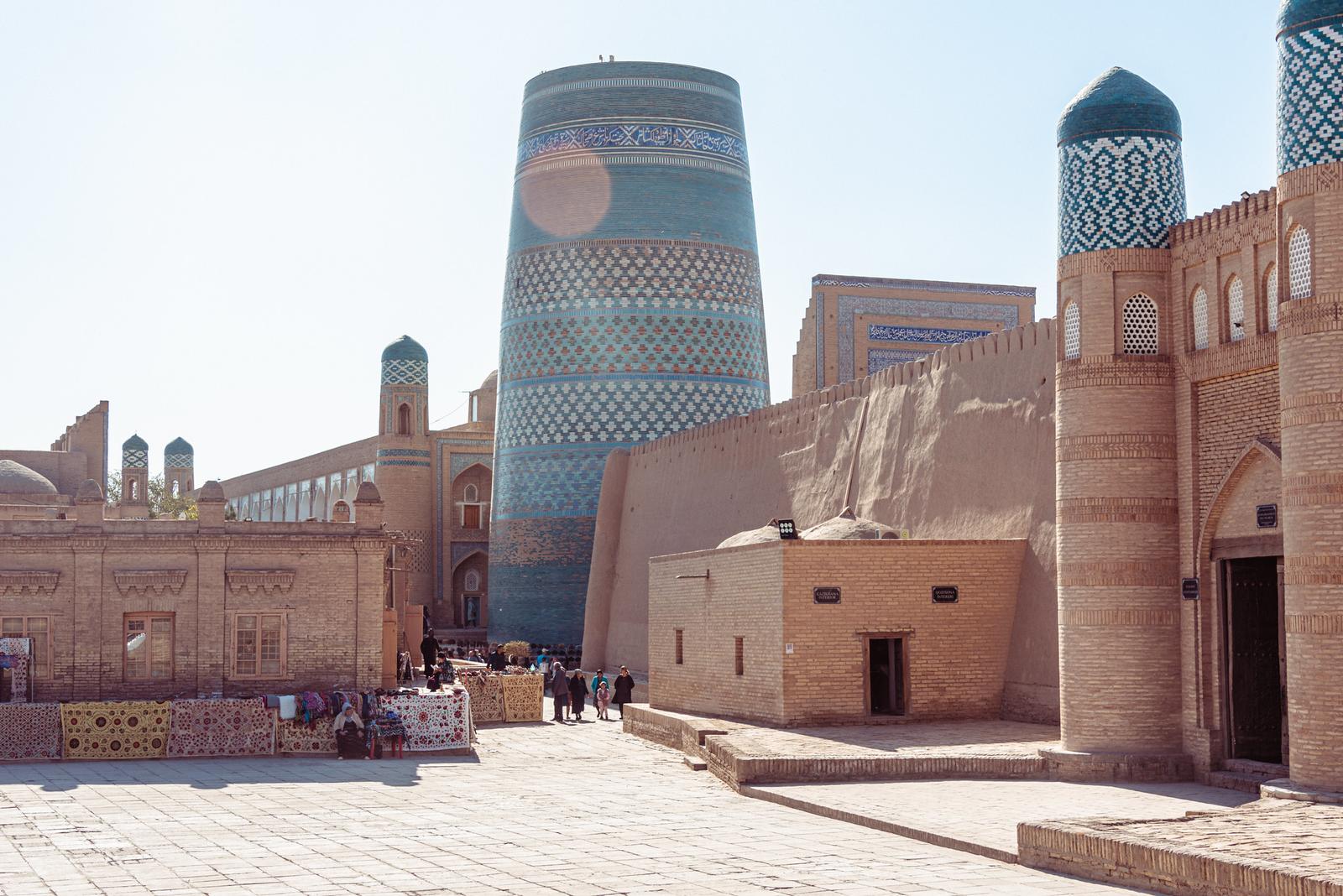
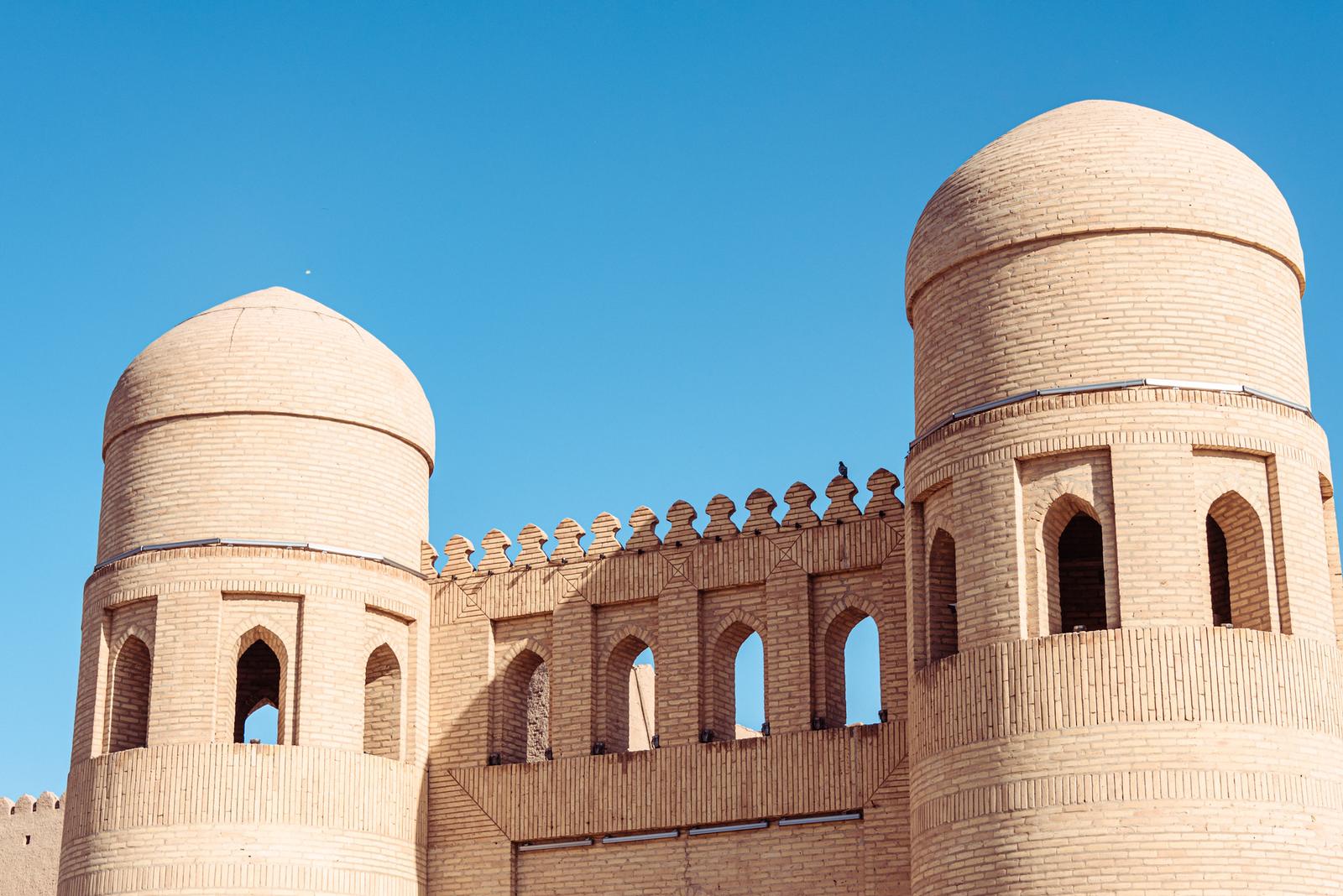
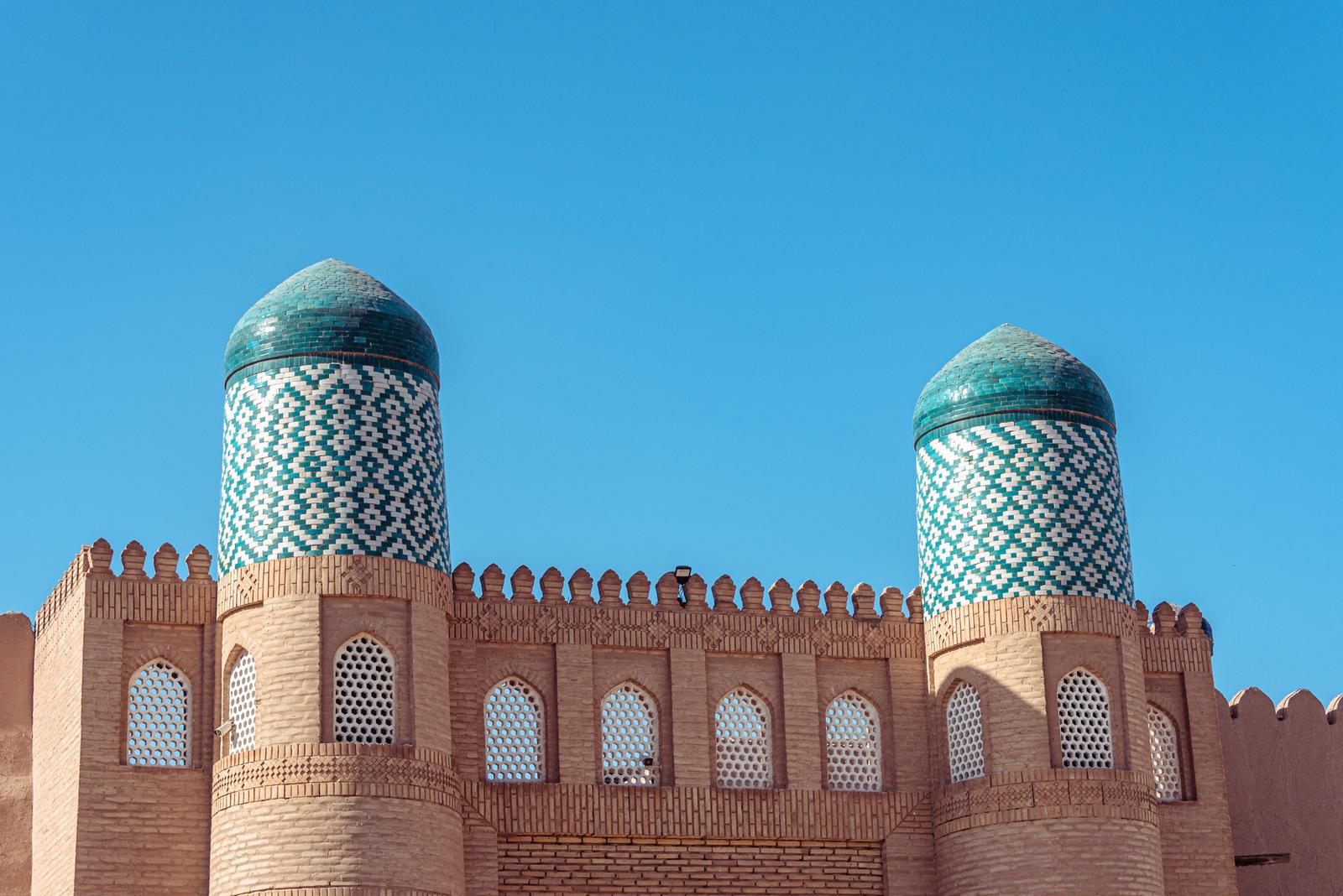
The city is only more than 200km far from Turkmenistan, and it’s surreal that I arrived at some oasis in this world, out of nowhere, given that at the time of writing I just simply sit comfortably at home.
After having lunch with Khiva’s super-tasty signature dish Shivit Oshi at Terrassa Cafe - the local pasta with green hue from dill diffusion, topped with sour-milk sauce, vegetables and meat, I had charged myself with full power to start exploring this city. The walk was no hassle at all, thanks to the breezy autumn atmosphere. Compared to the more humid eastern side of Uzbekistan, though being at the same temperature, desert aridity has eased the coldness of October winds in Khiva.
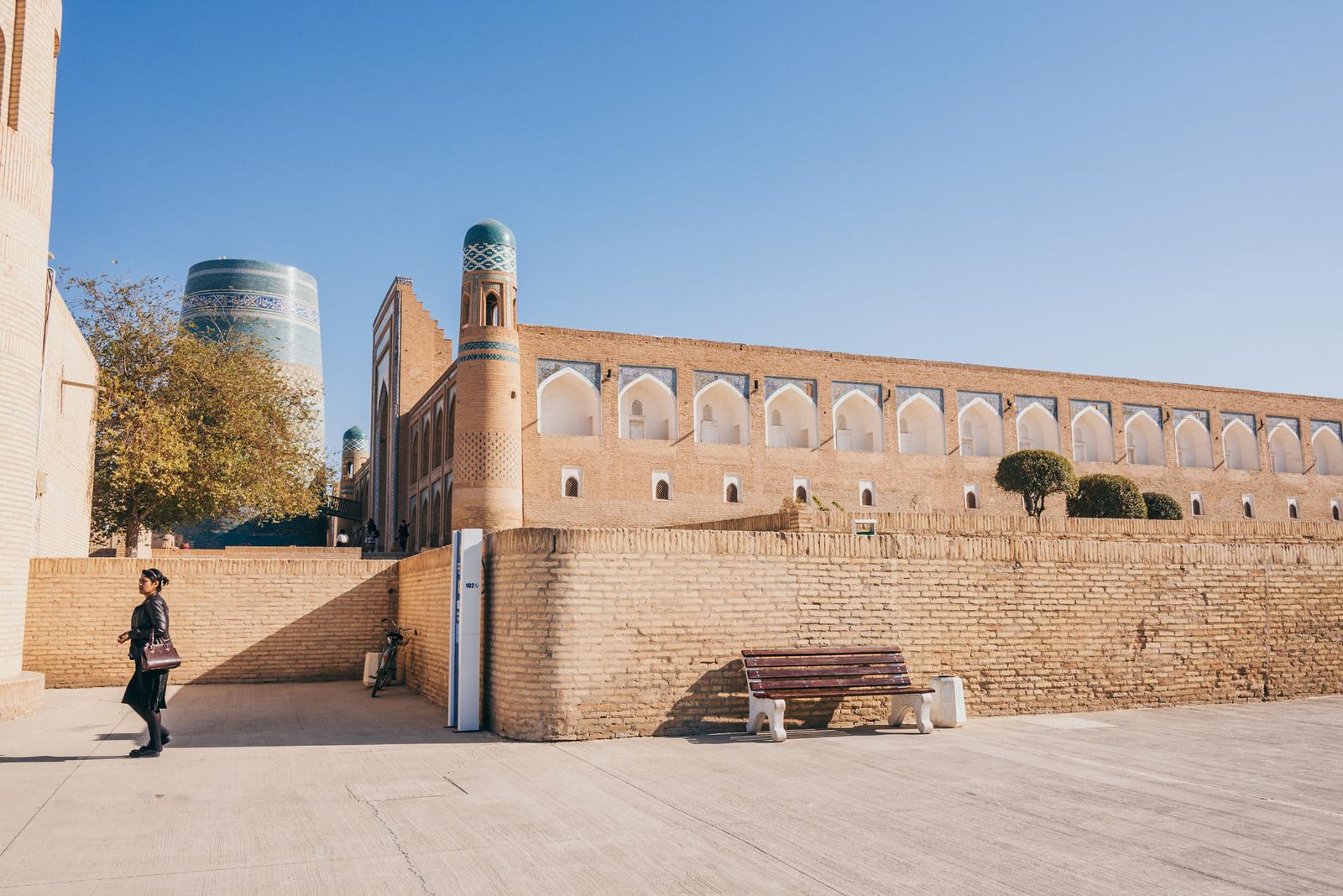
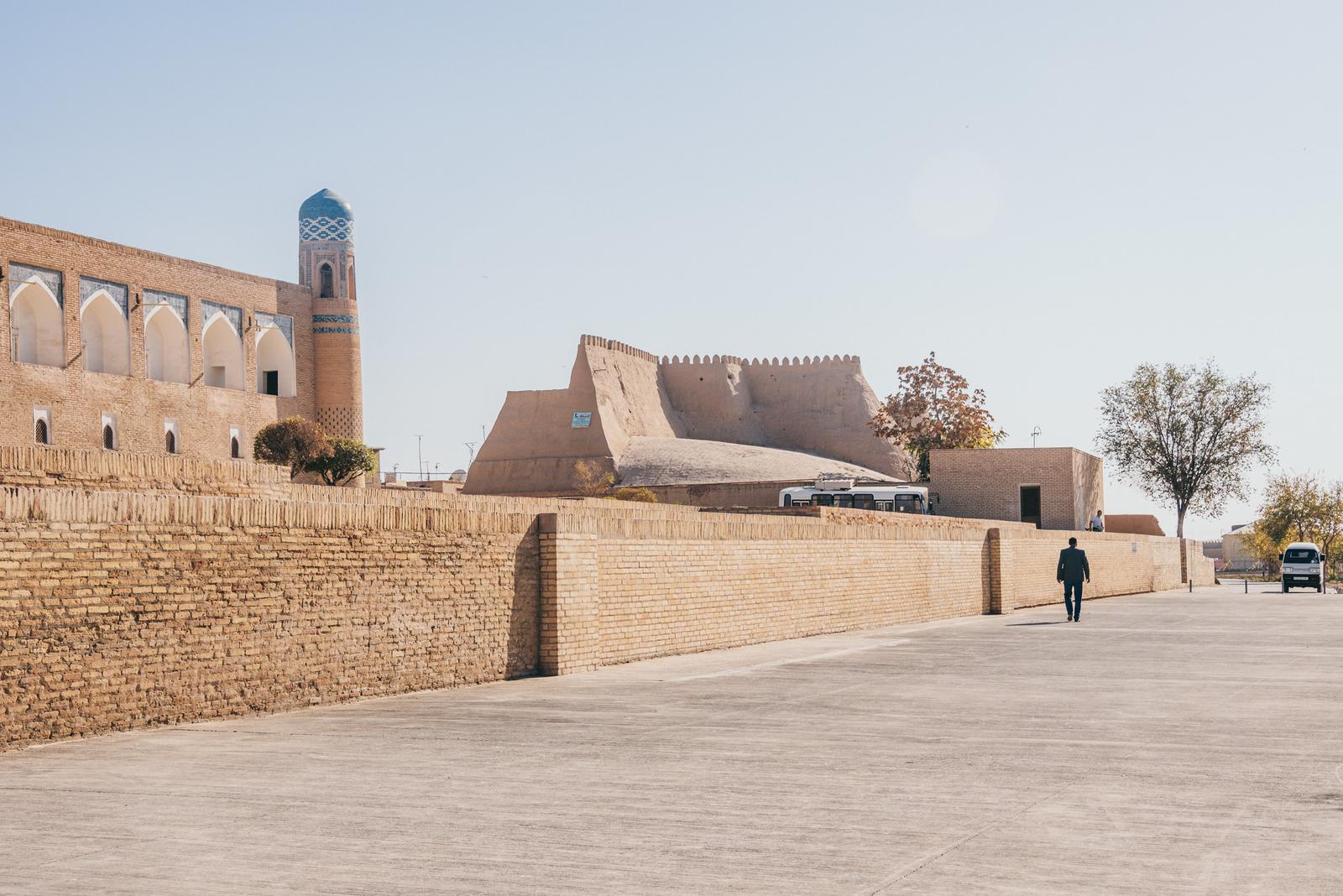
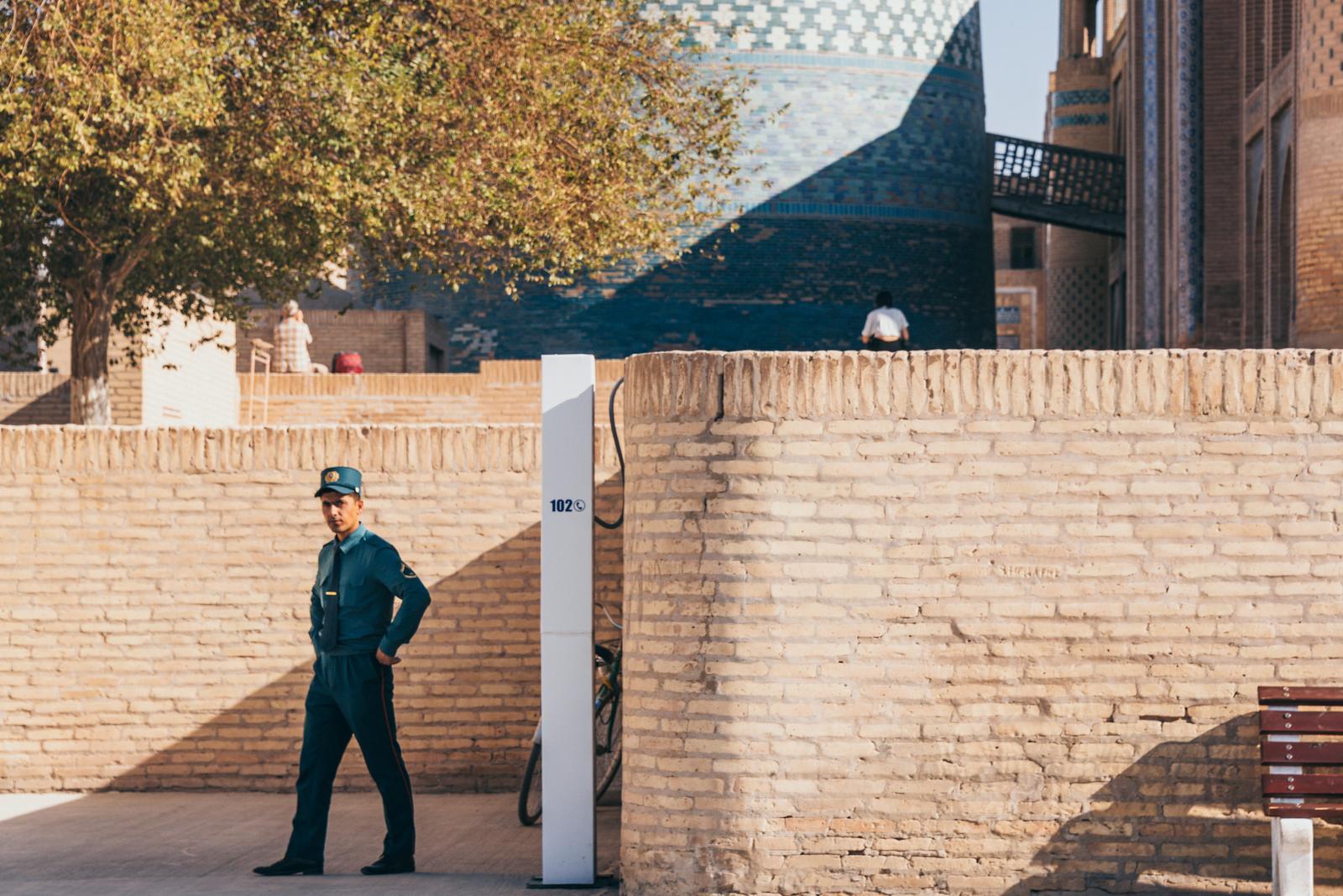
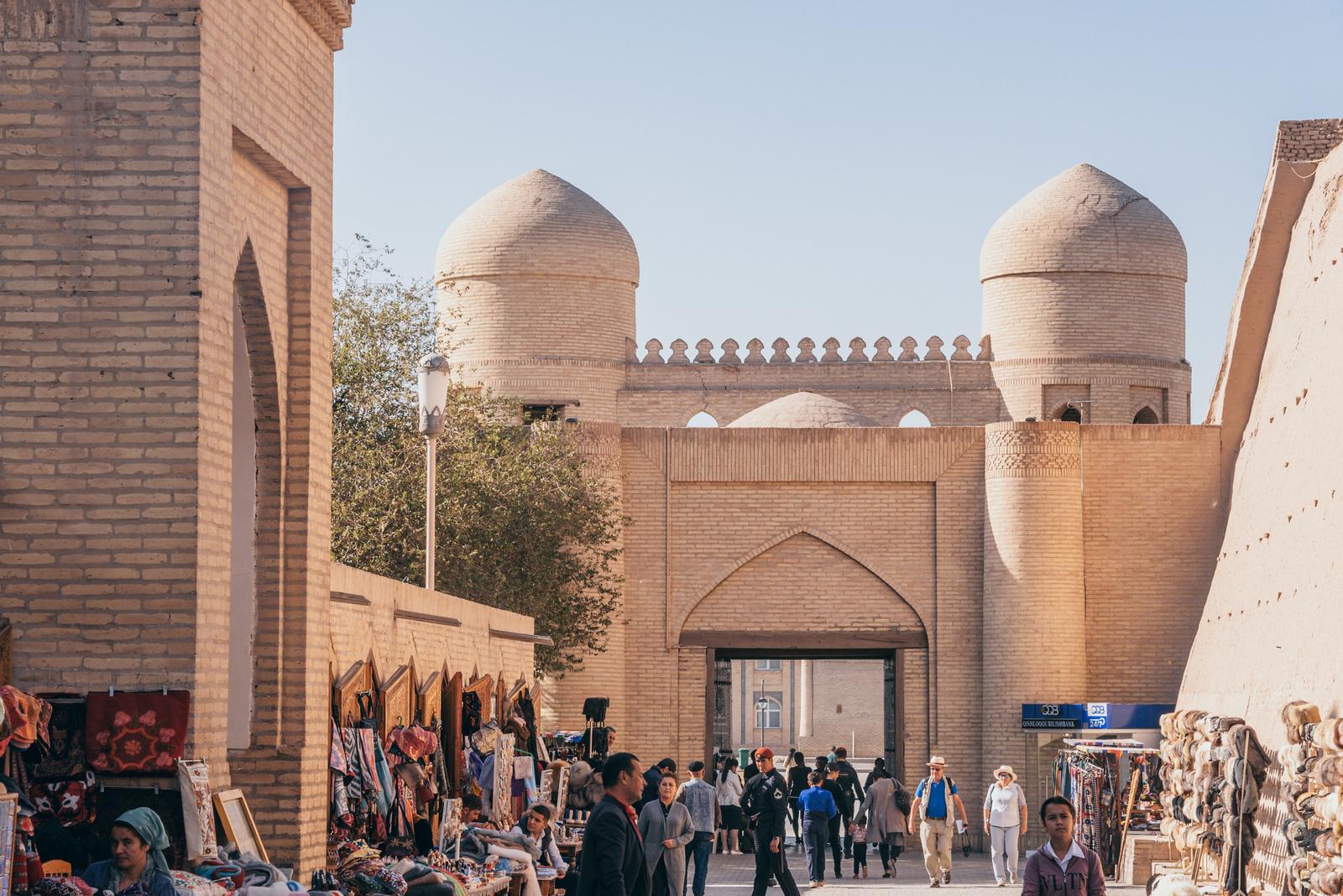
The city has four gates, and the main street connects West (Ota Darvoza) and East Gate (Polvon Darvoza), with most of the landmarks locate along the path. You can’t miss the prominent turquoise Kalta Minor Minaret - resembling a giant ceramic vase - at first sight, and that marks the starting point of the route.
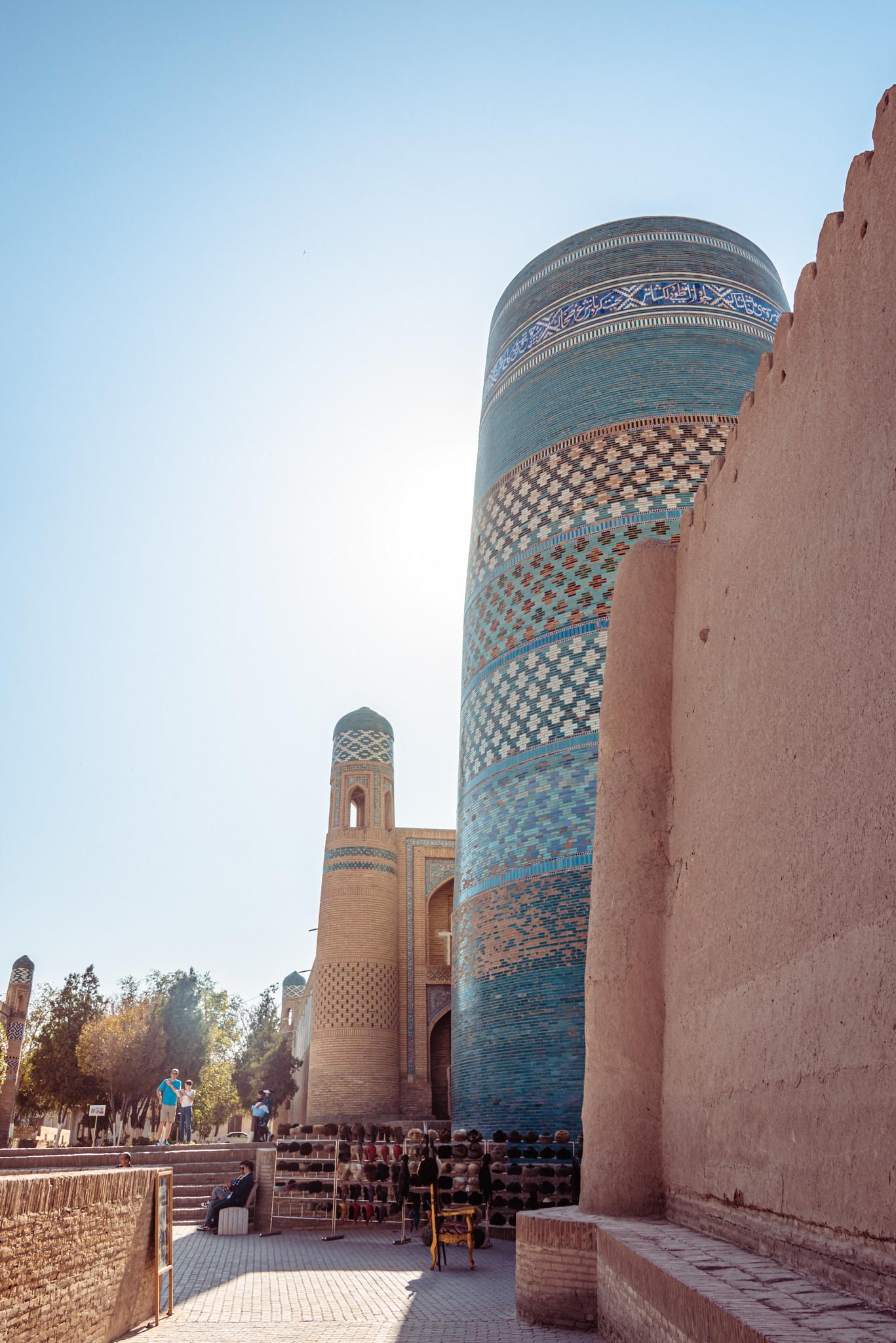
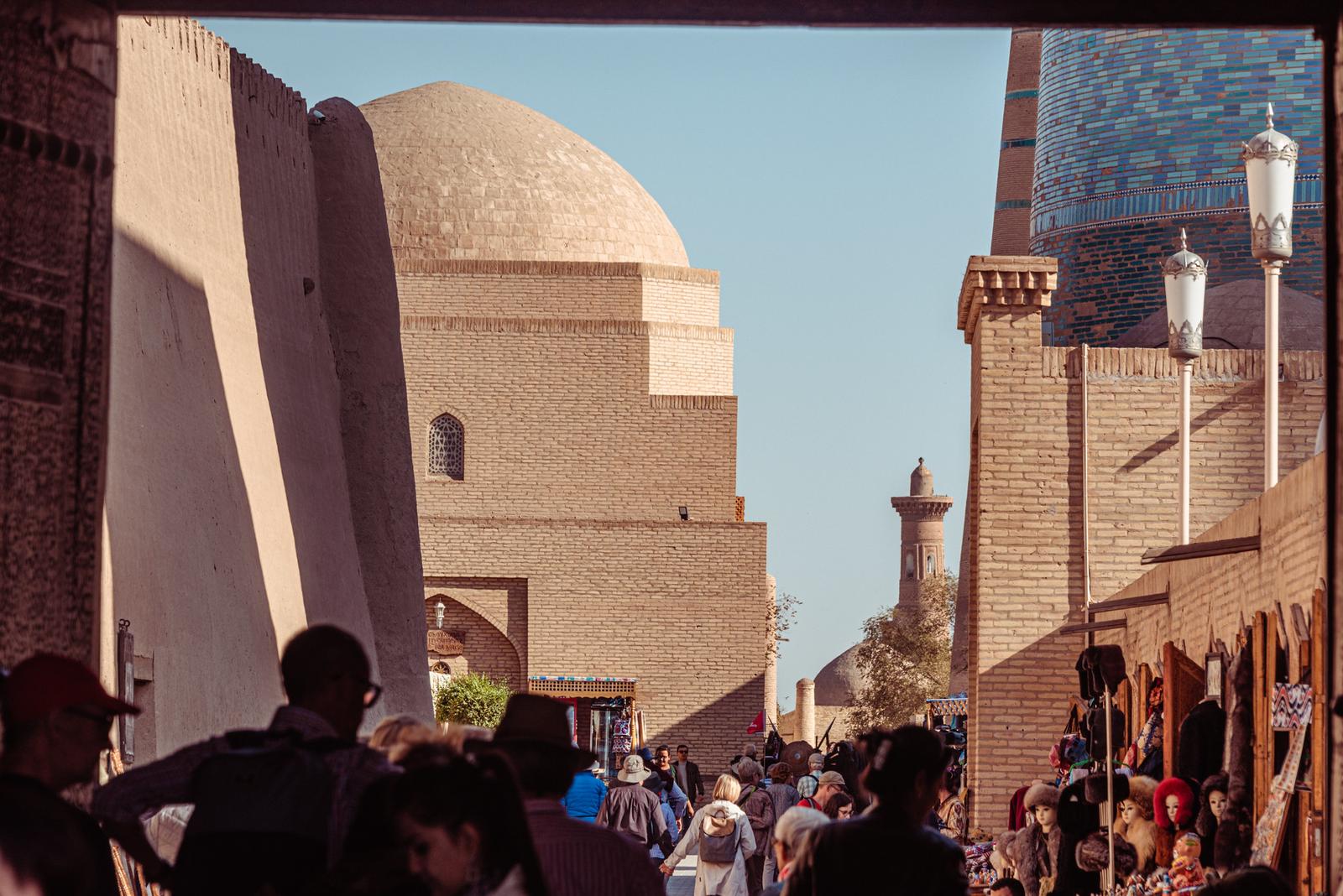
Blue Khiva
As further as I strolled along the street, the sceneries were unveiled and came to life, mesmerizing the strange visitor. Without the modern-looking tourists crowding the places, I couldn’t have imagined I had still been in the 21st century but teleported to the living scenes in tales from A Thousand Nights and a Night.
The flag of Uzbekistan was perfectly reflected right in the deep blue sky and tinted minarets harmoniously fusing with beige clay walls to create a masterpiece as a whole.
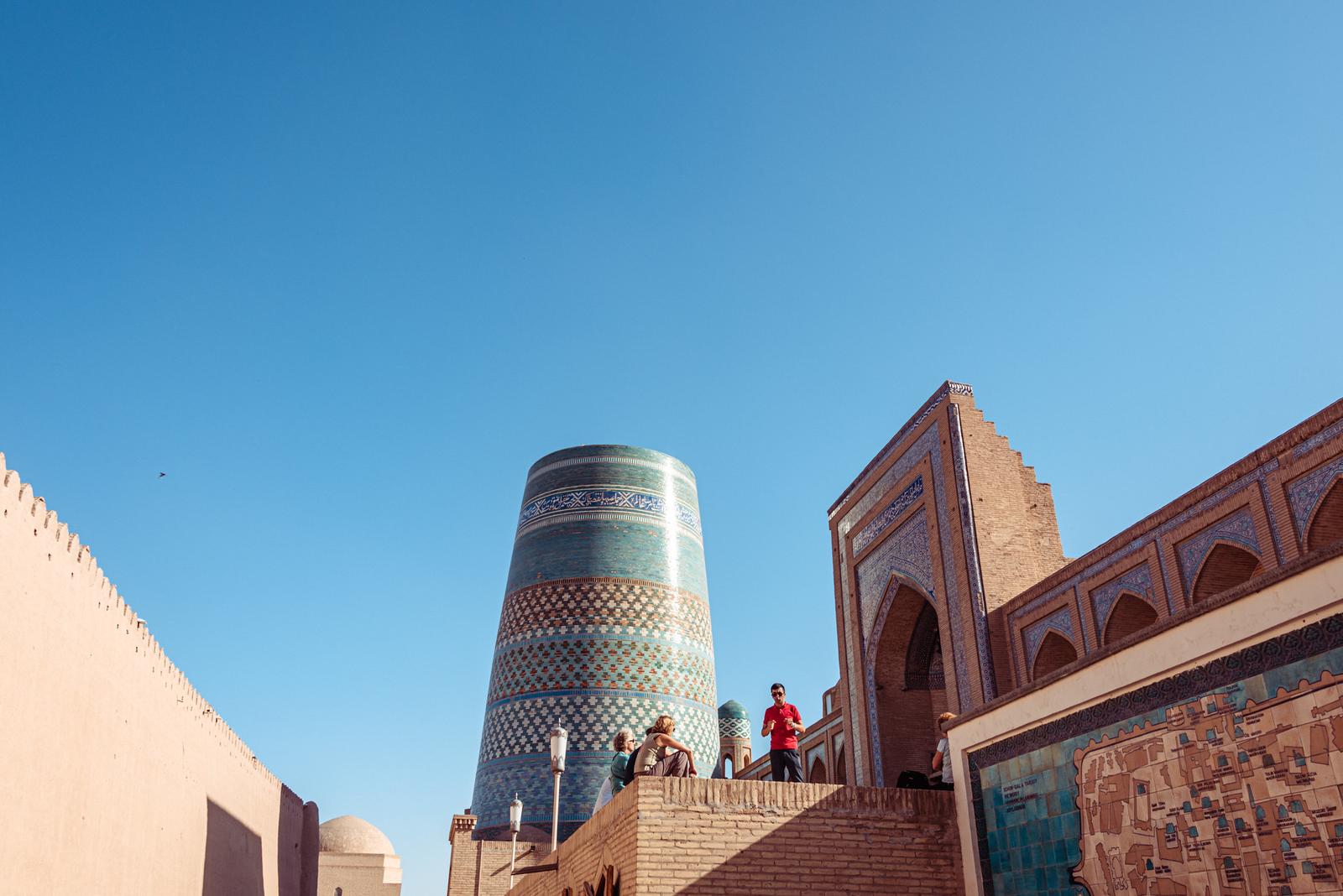
I may say the city is a perfect spot for people with minimalism in mind: no popping colors, no unfitted panels, no blaring speakers.
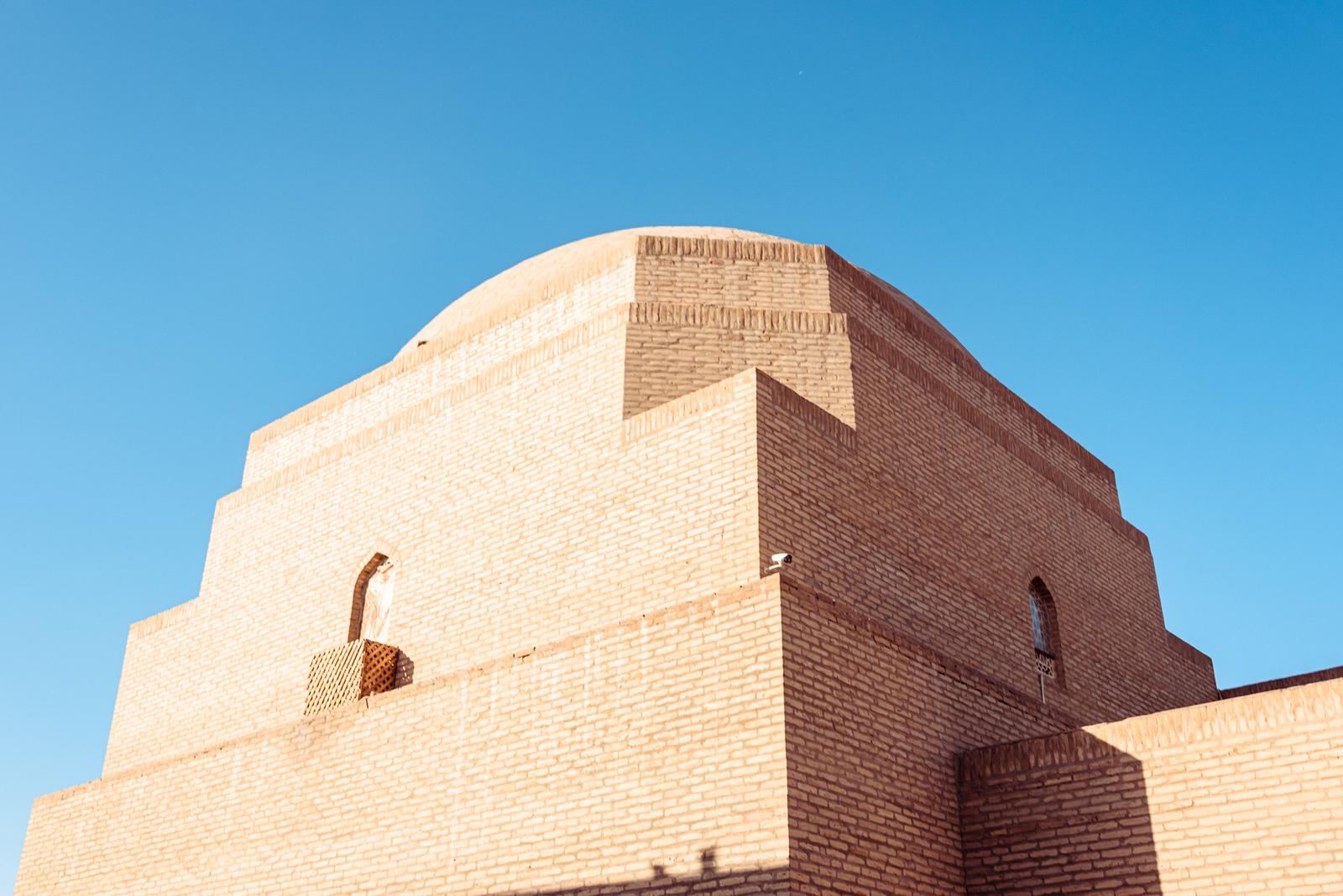
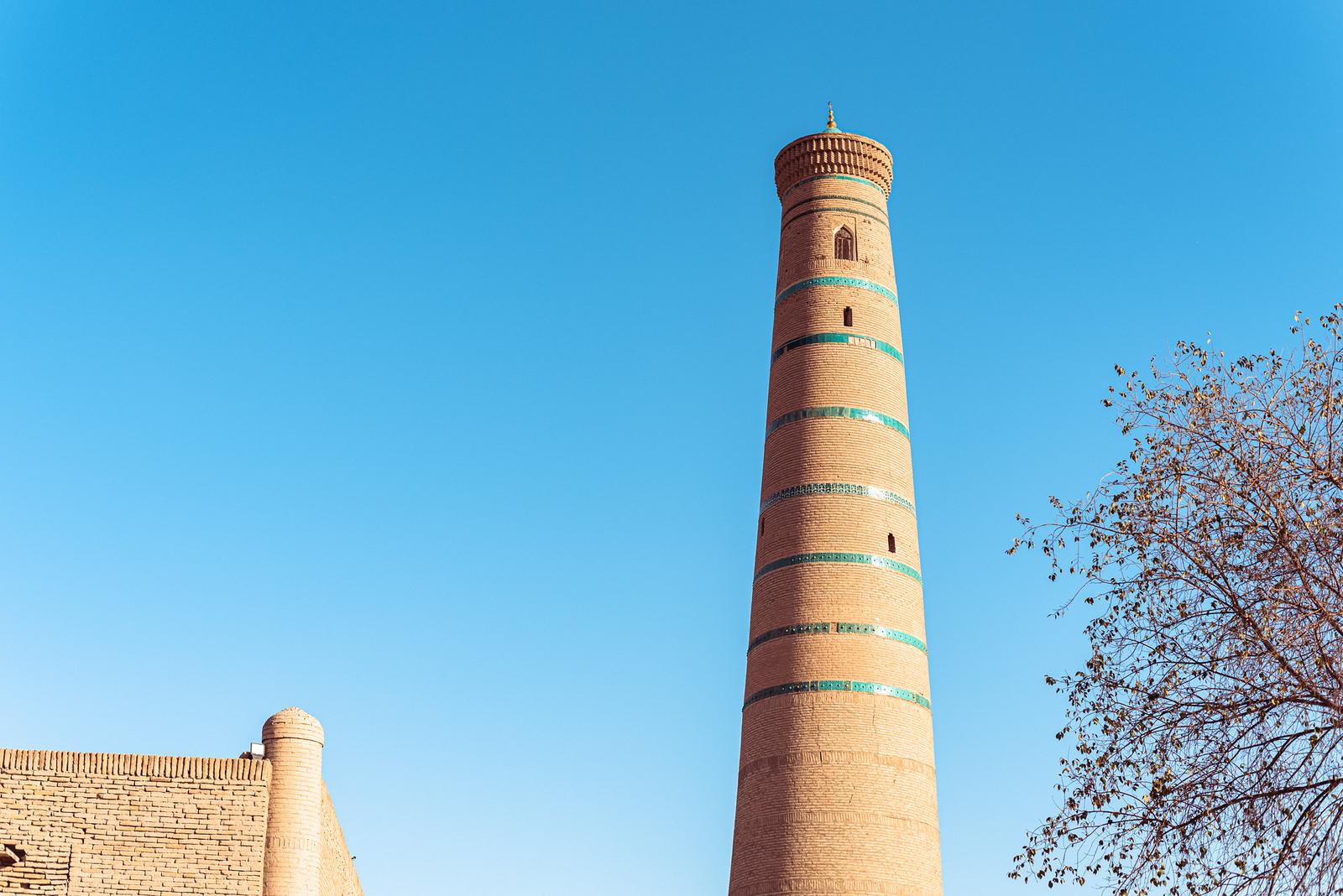
Full of Beauties
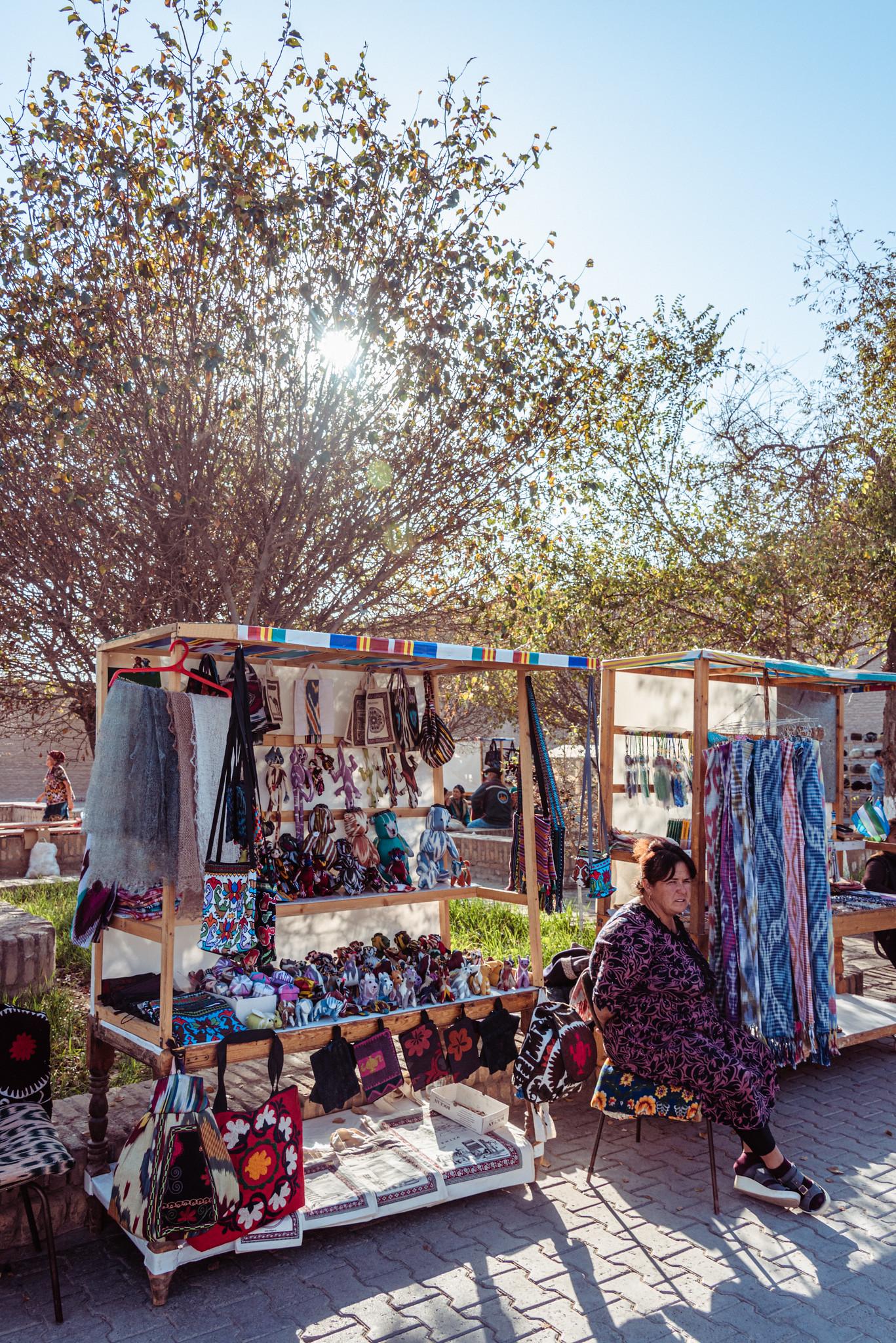
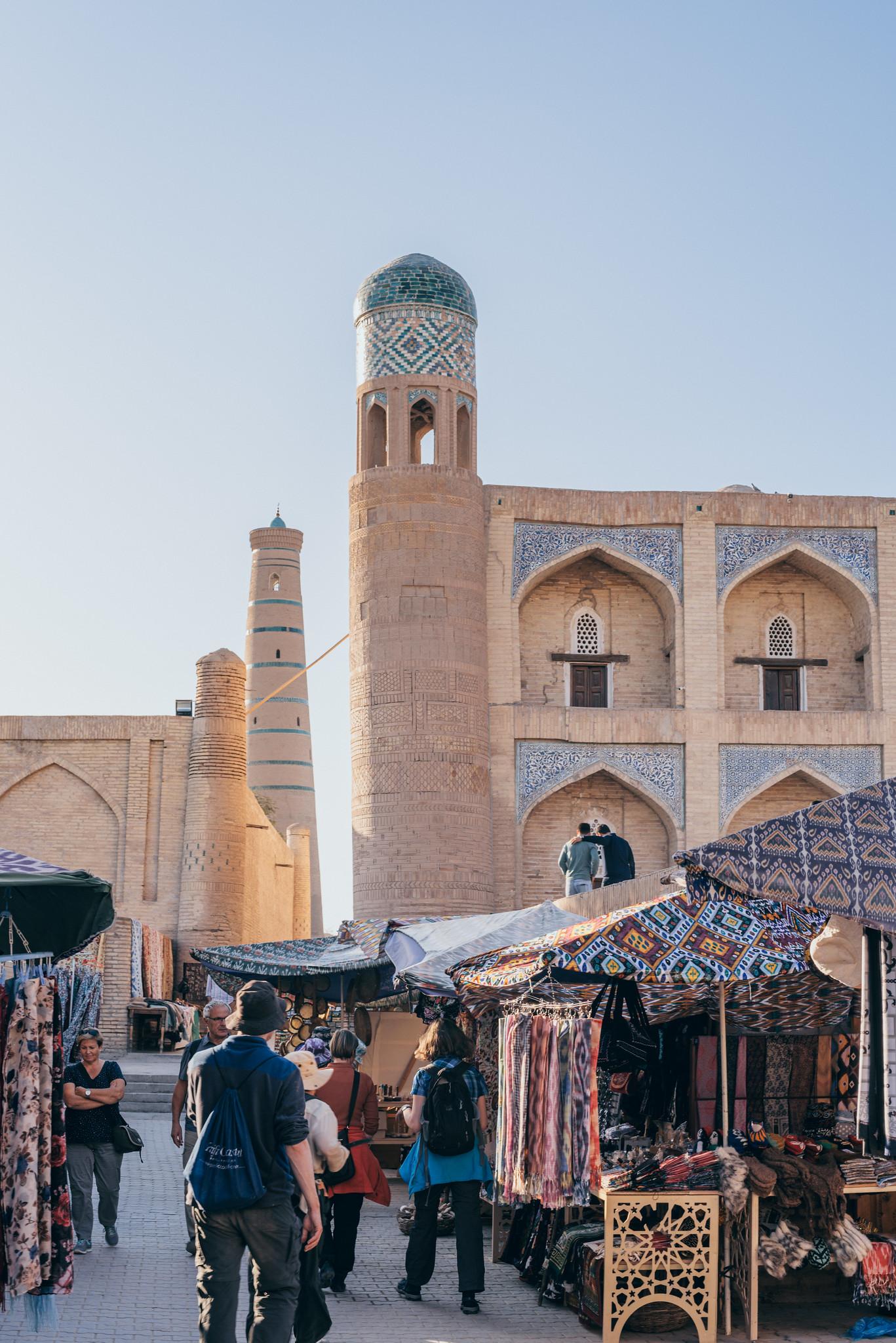
When I mention ‘beauties’, it’s not only about places and nature, but also human and culture. People in Khiva dress in vibrant traditional costumes, sell the legendary handmade Uzbek carpets, or just are the helpful local guides by the road. Undisturbed by rowdy group tours, you can easily discover hidden spots in town, sit down and just enjoy the moment. It’s a generous gift from the history yet not many of us have a chance to live and get immersed in it day by day.
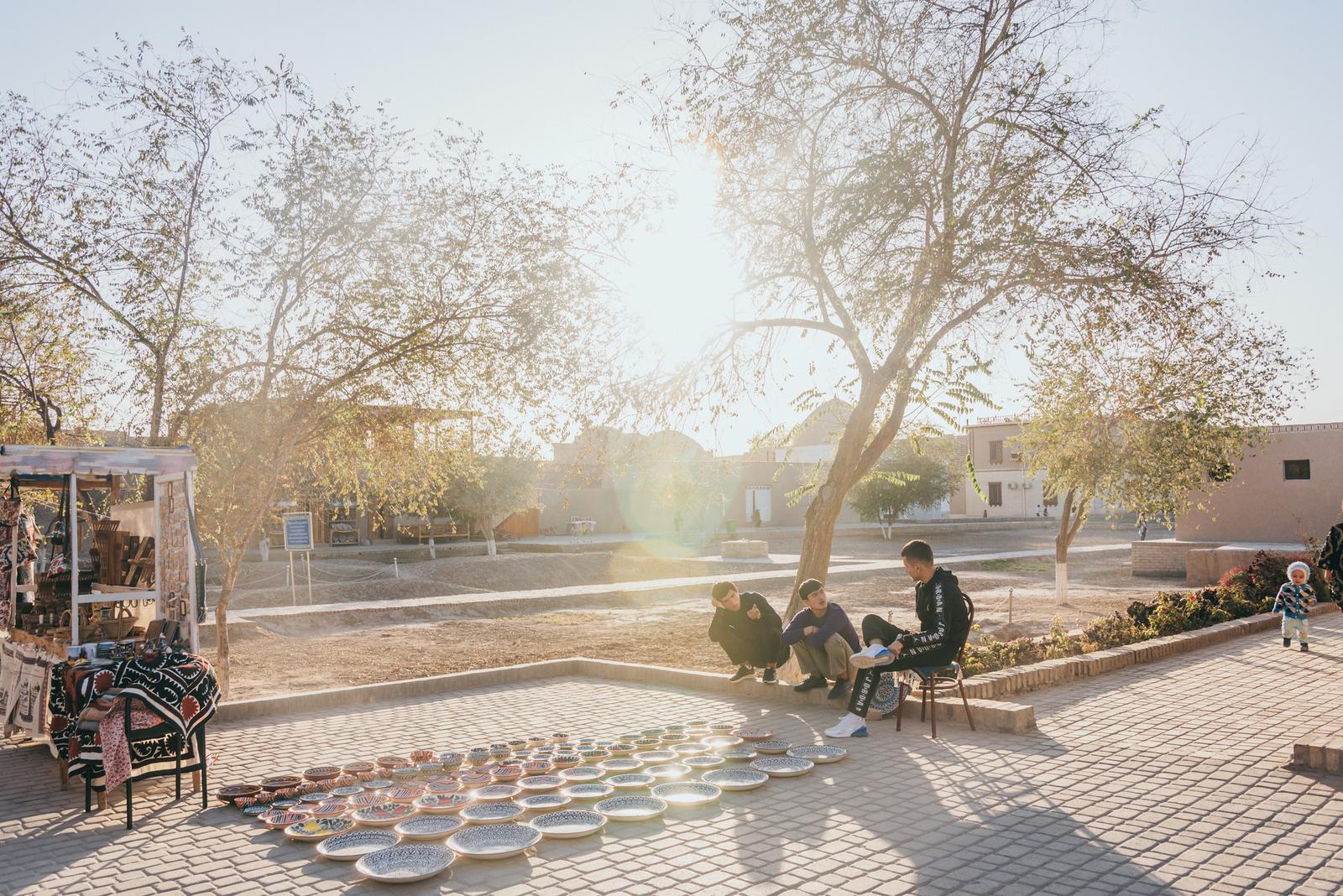
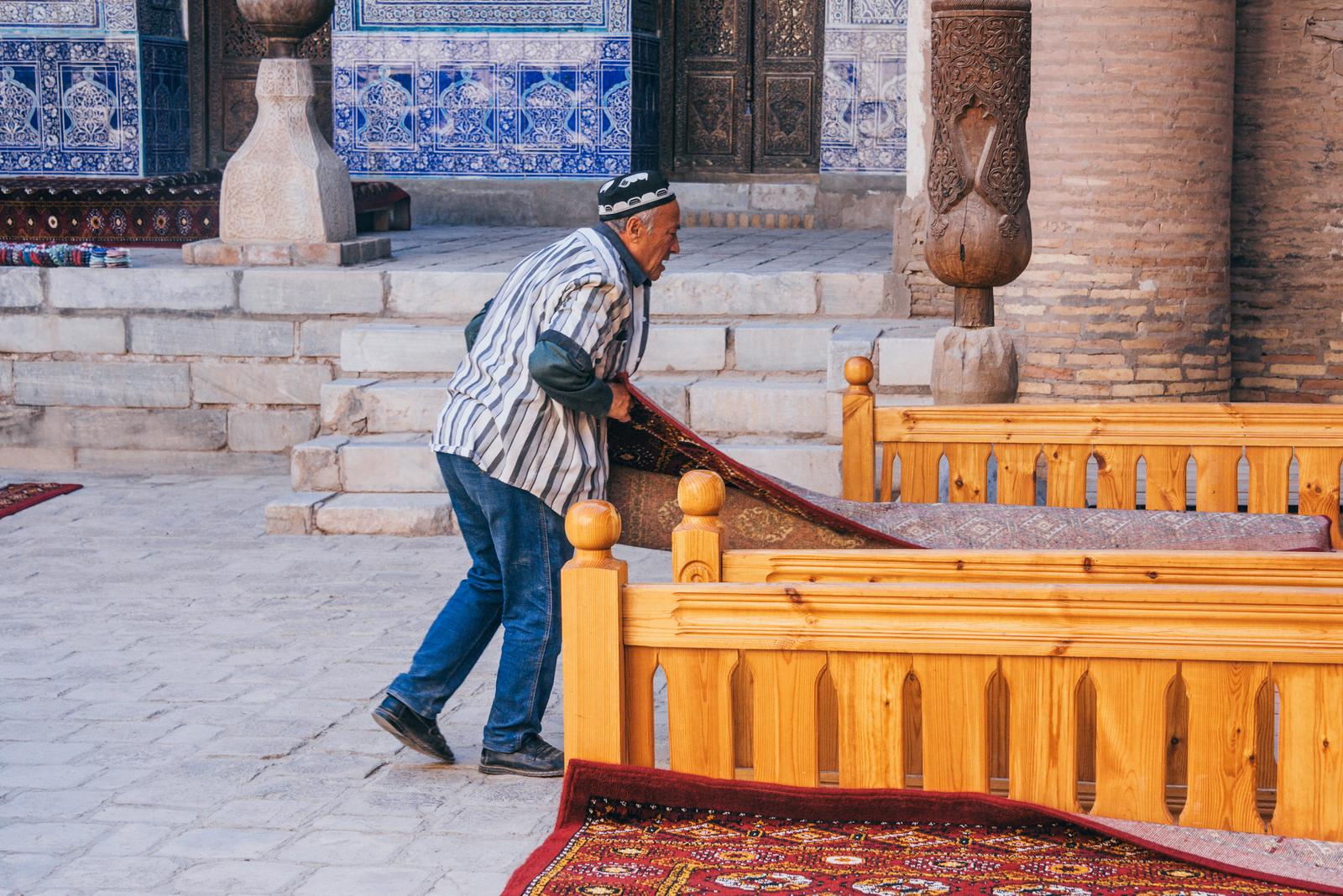
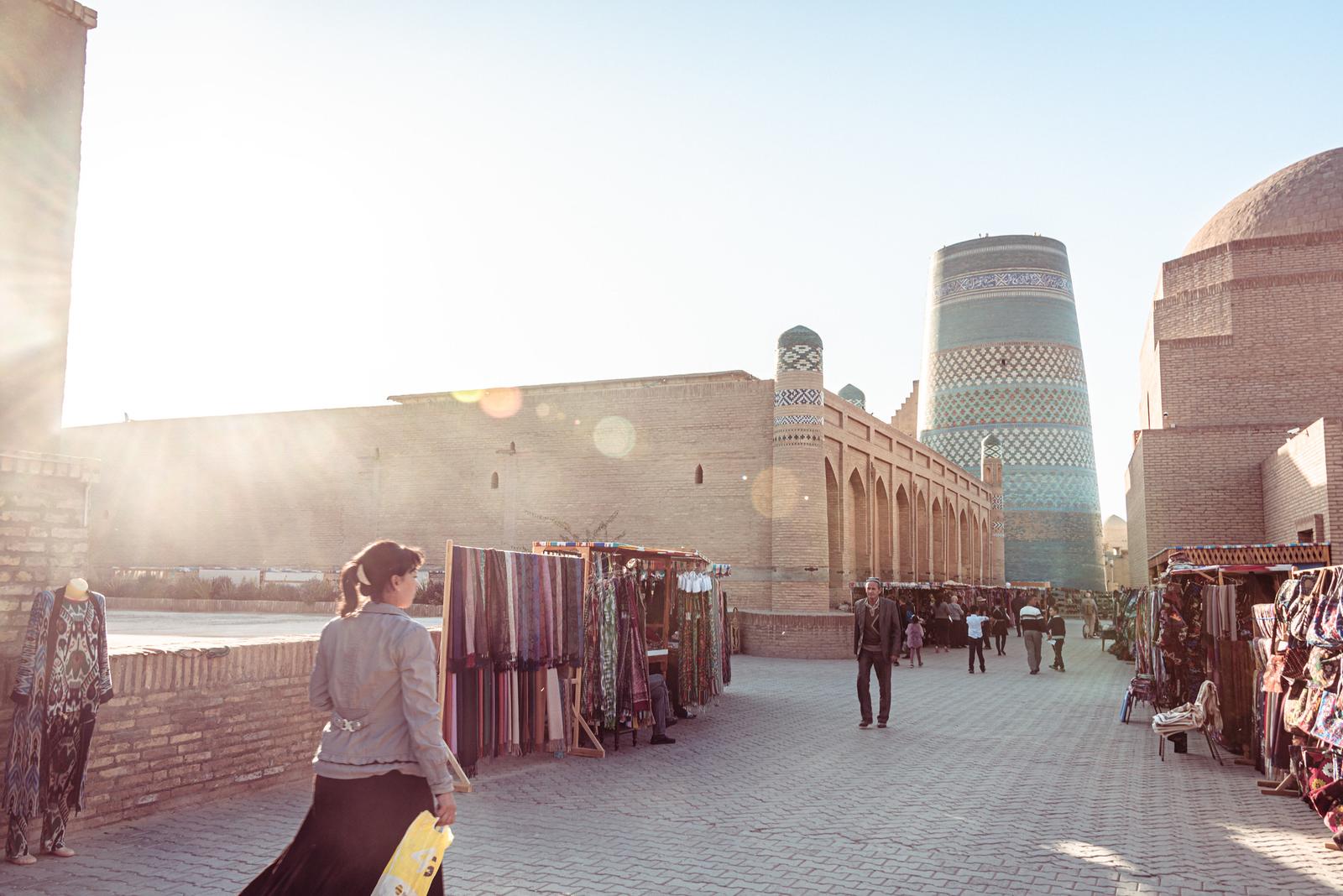
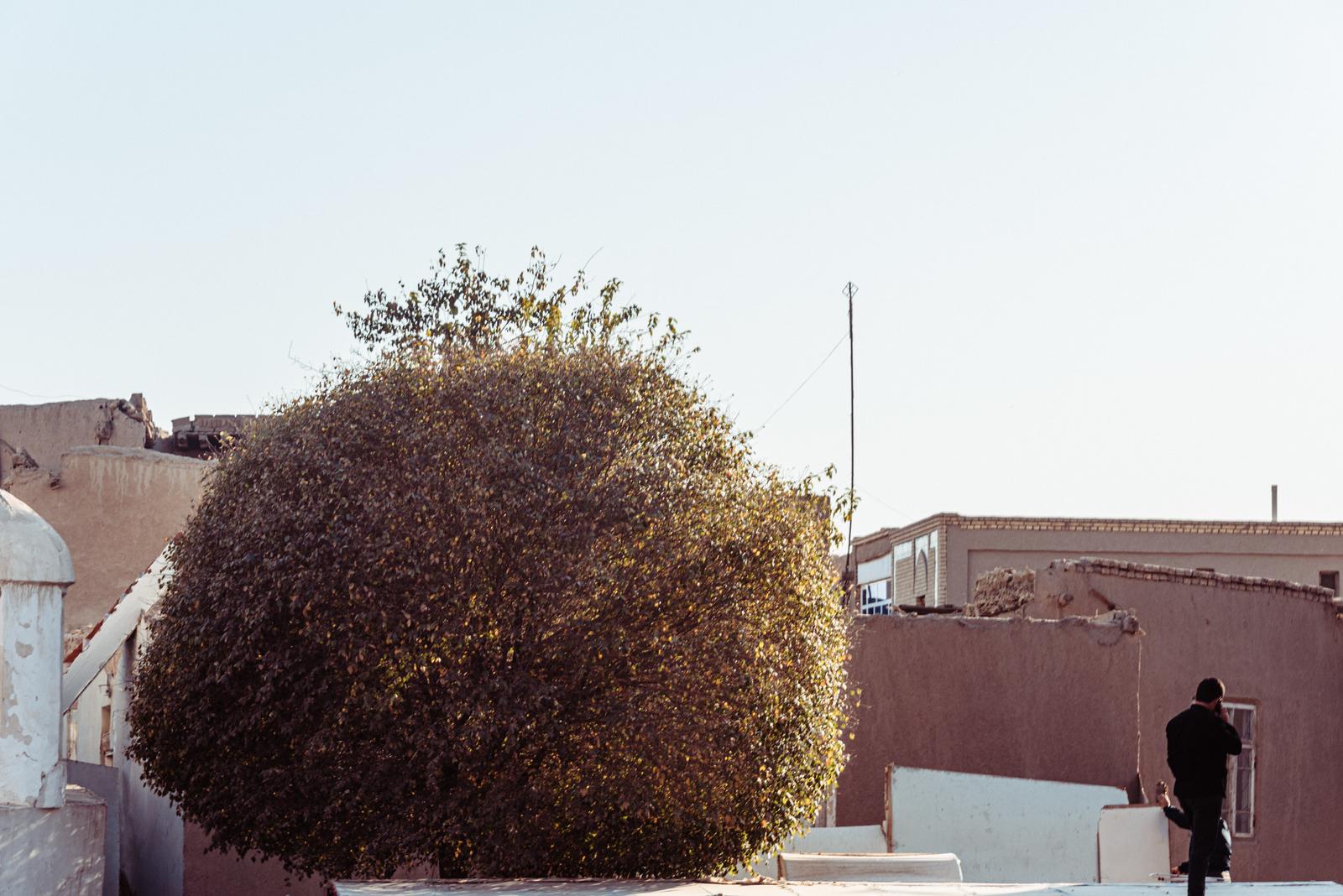
Lost in the Maze
From the main road, somewhere in the middle of Itchan Kala situates Juma Mosque, where I could take shadowy pictures at the base full of wooden columns.
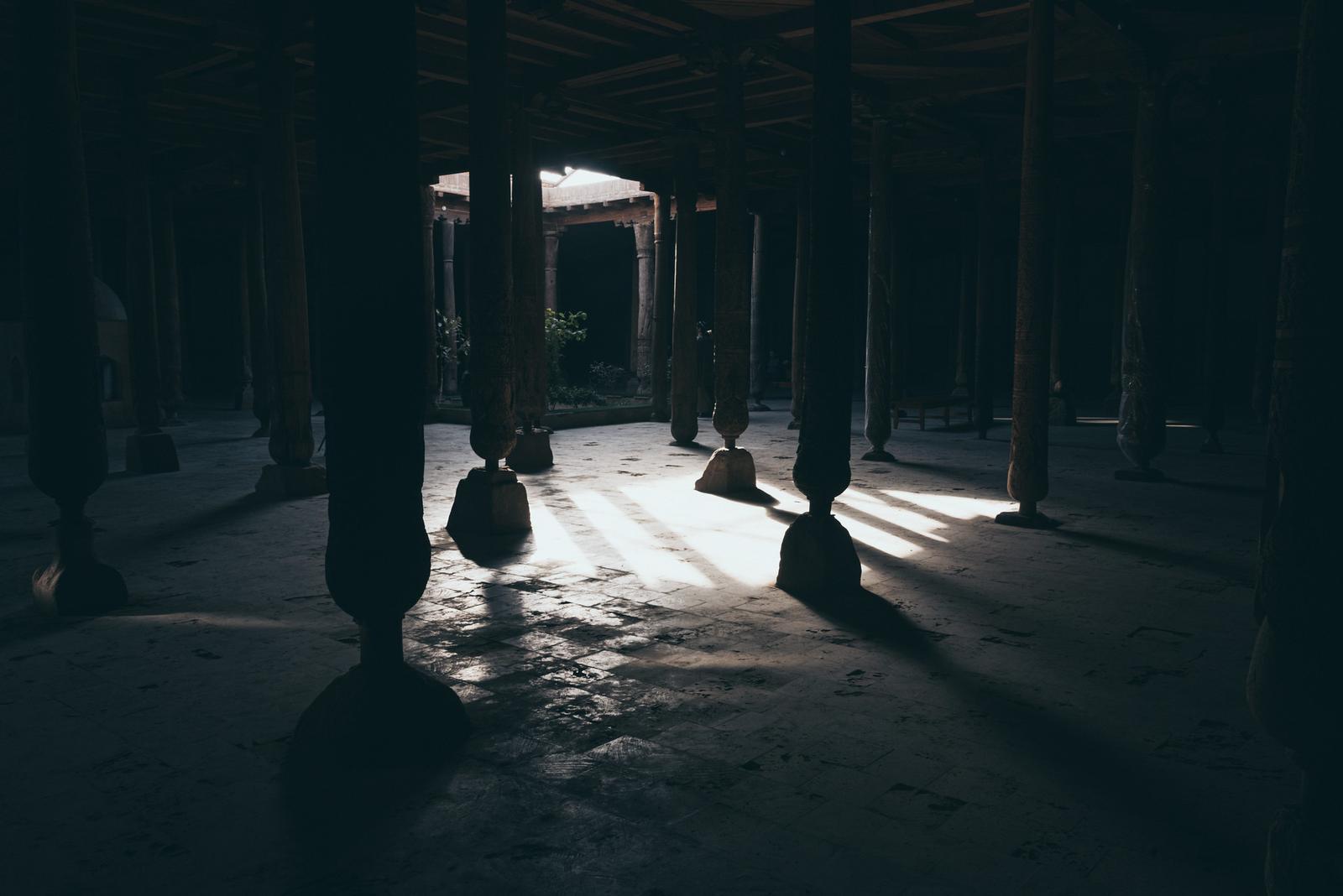
Passing the mosque a bit, turn to the left of the road (north side) at Khojamberdibai Madrasah, and you have discovered a great walled maze inside. Standing right at the small crossing and surrounded by the Khojamberdibai Madrasah, Mohammed Amin Inak Madrasah and Uch Aviliyo Bobo Mausoleum, the high walls give you a perfect vantage point to Allakuli Khan Madrasah positioned at the East Gate. Nah it really costed me hundreds of clicks but no photo ever could relive that specific ambience.
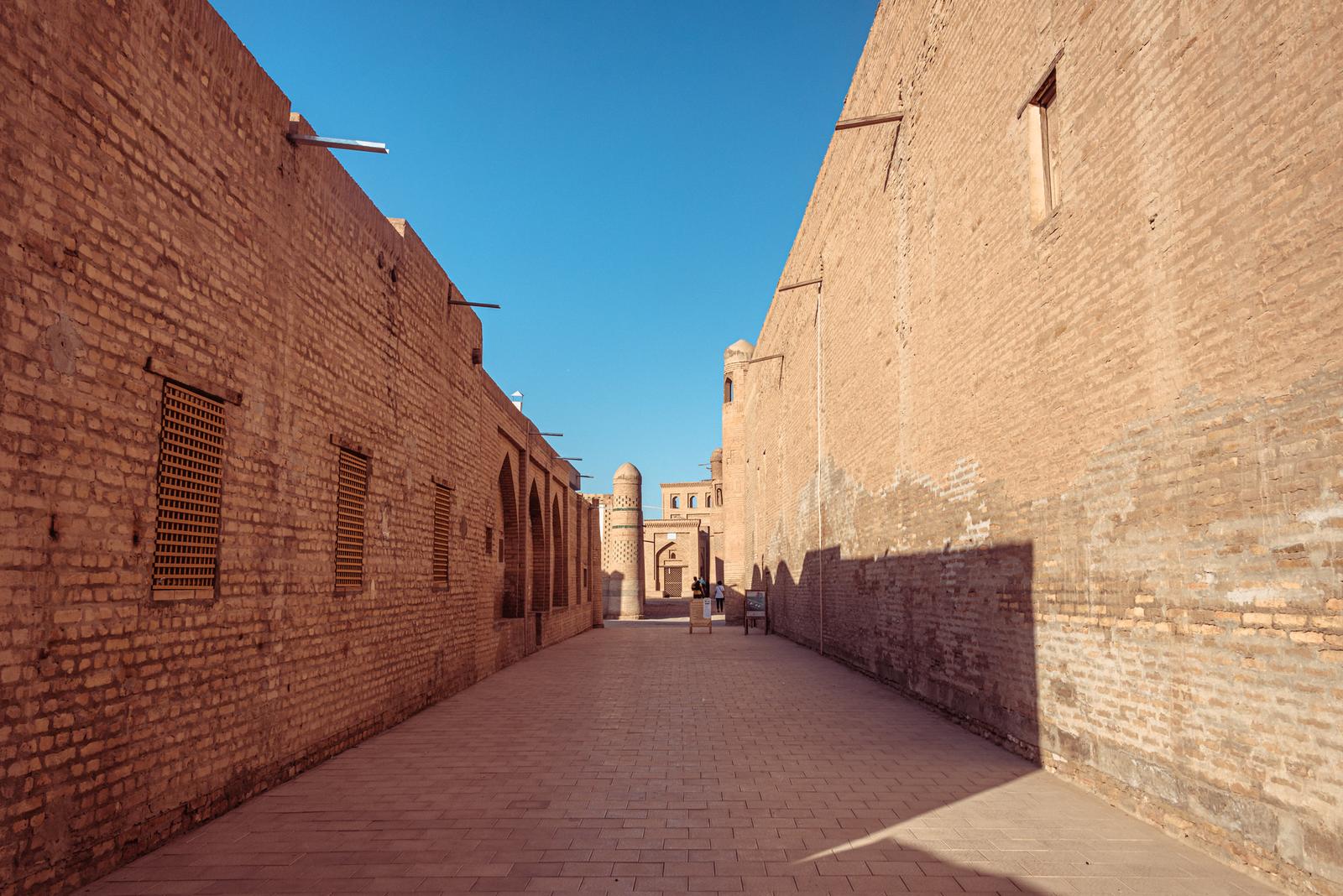
Only us, the history appreciators, were left.
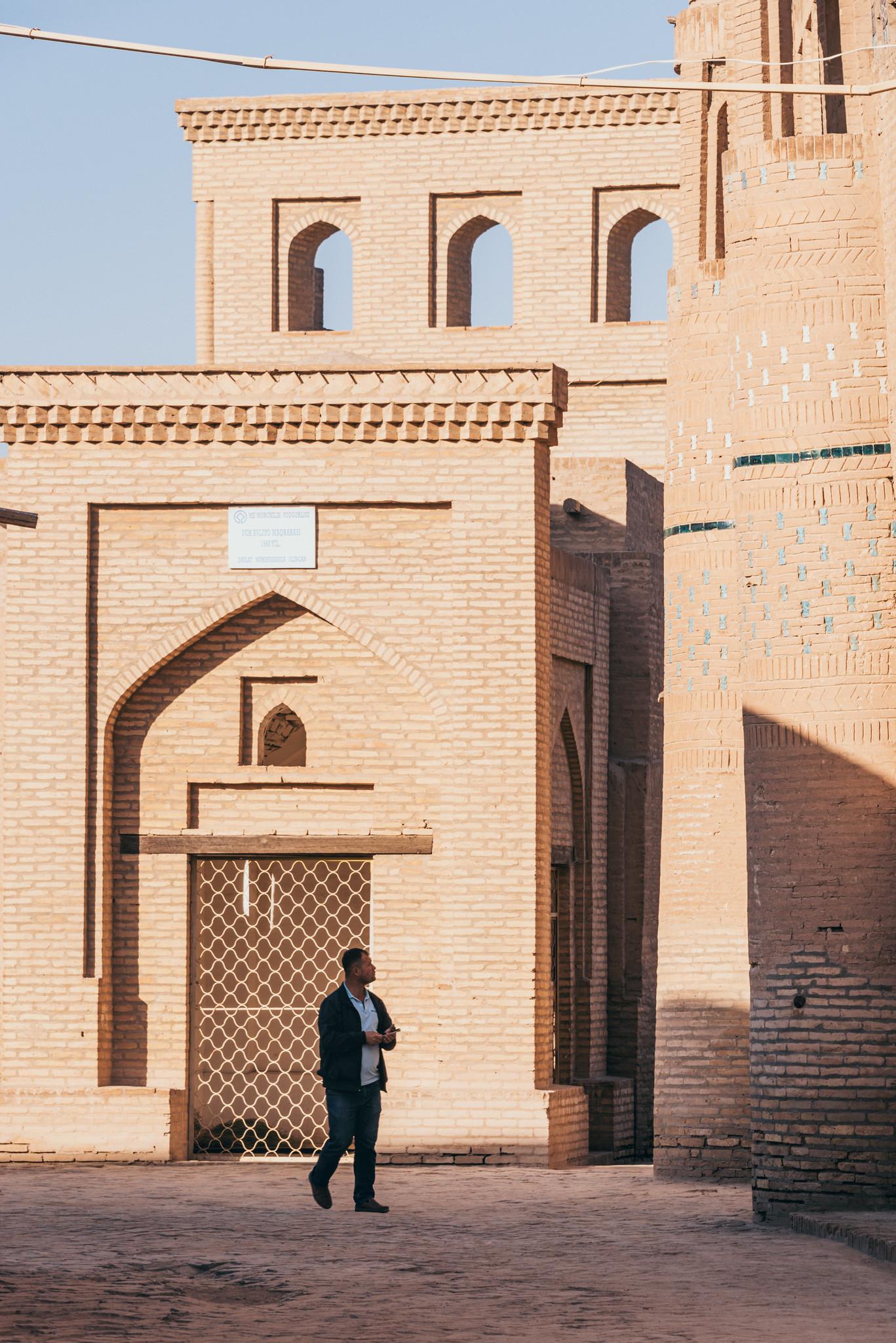
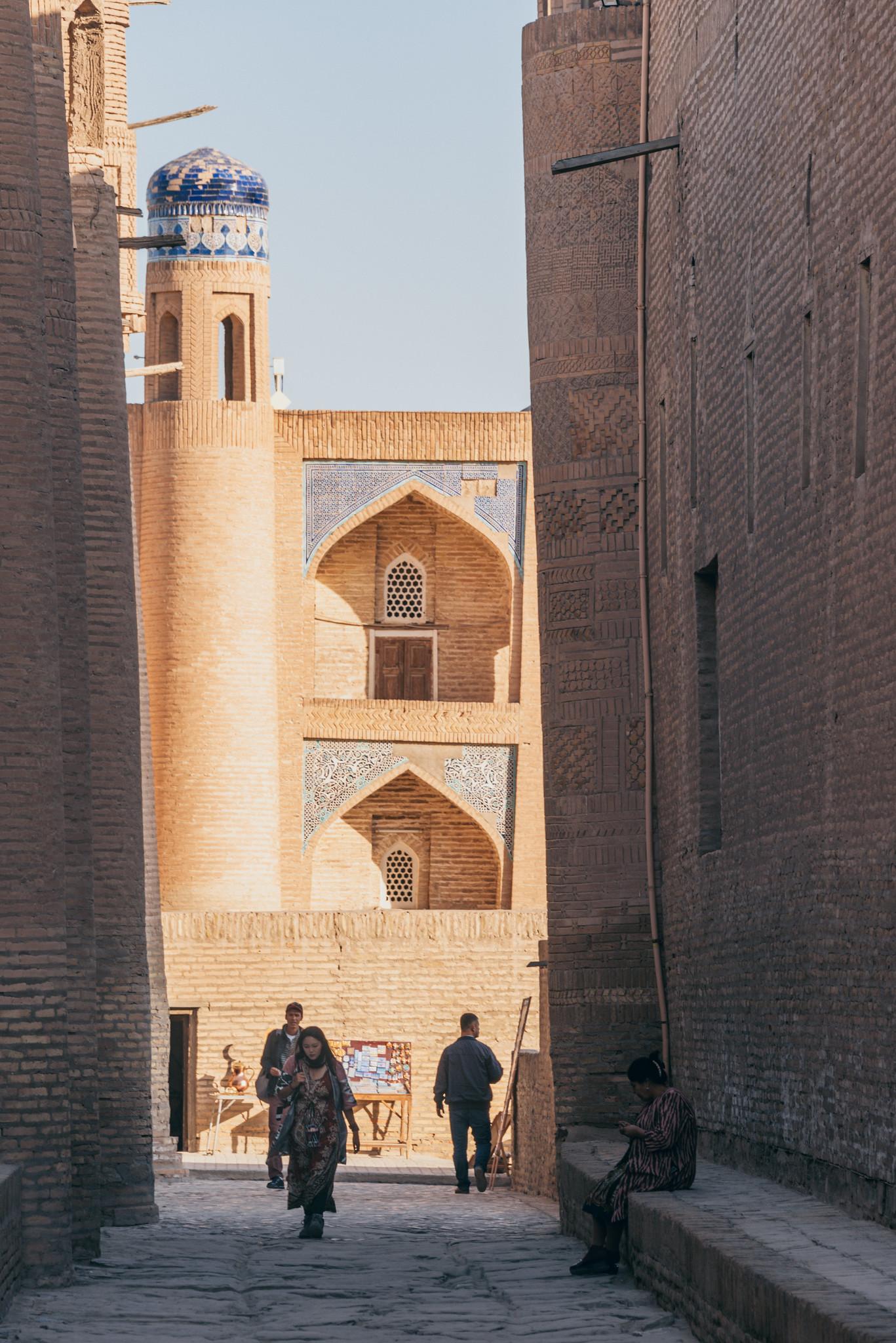
And you will find out a secluded place to rest in front of Mohammed Amin Inak Madrasah; to any inquisitive wanderer, it’s a bounty given.
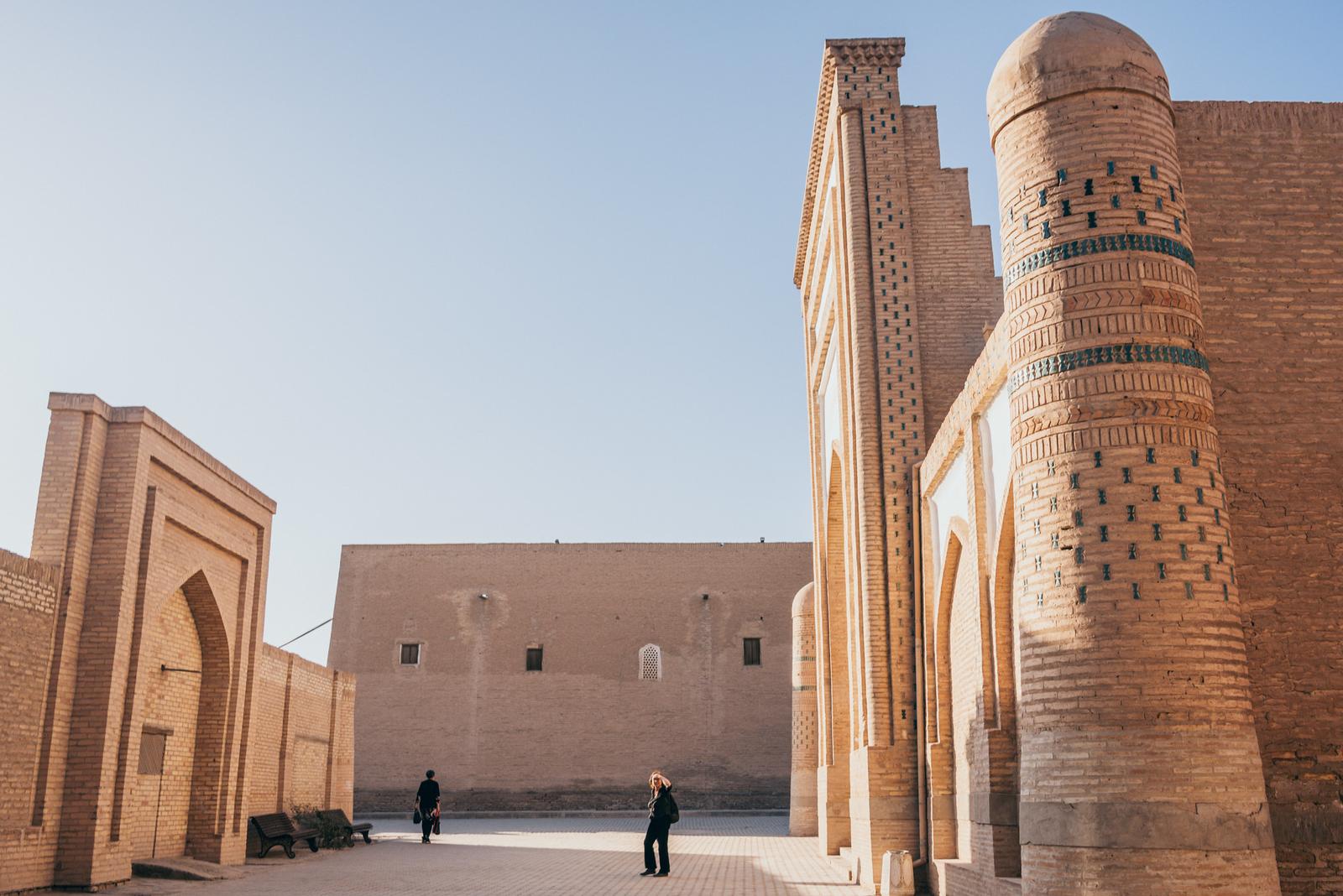
To the end of the path, in front of Ak Mosque houses the street bazaar, without noisy bargaining or shady scammers, everything is just right.
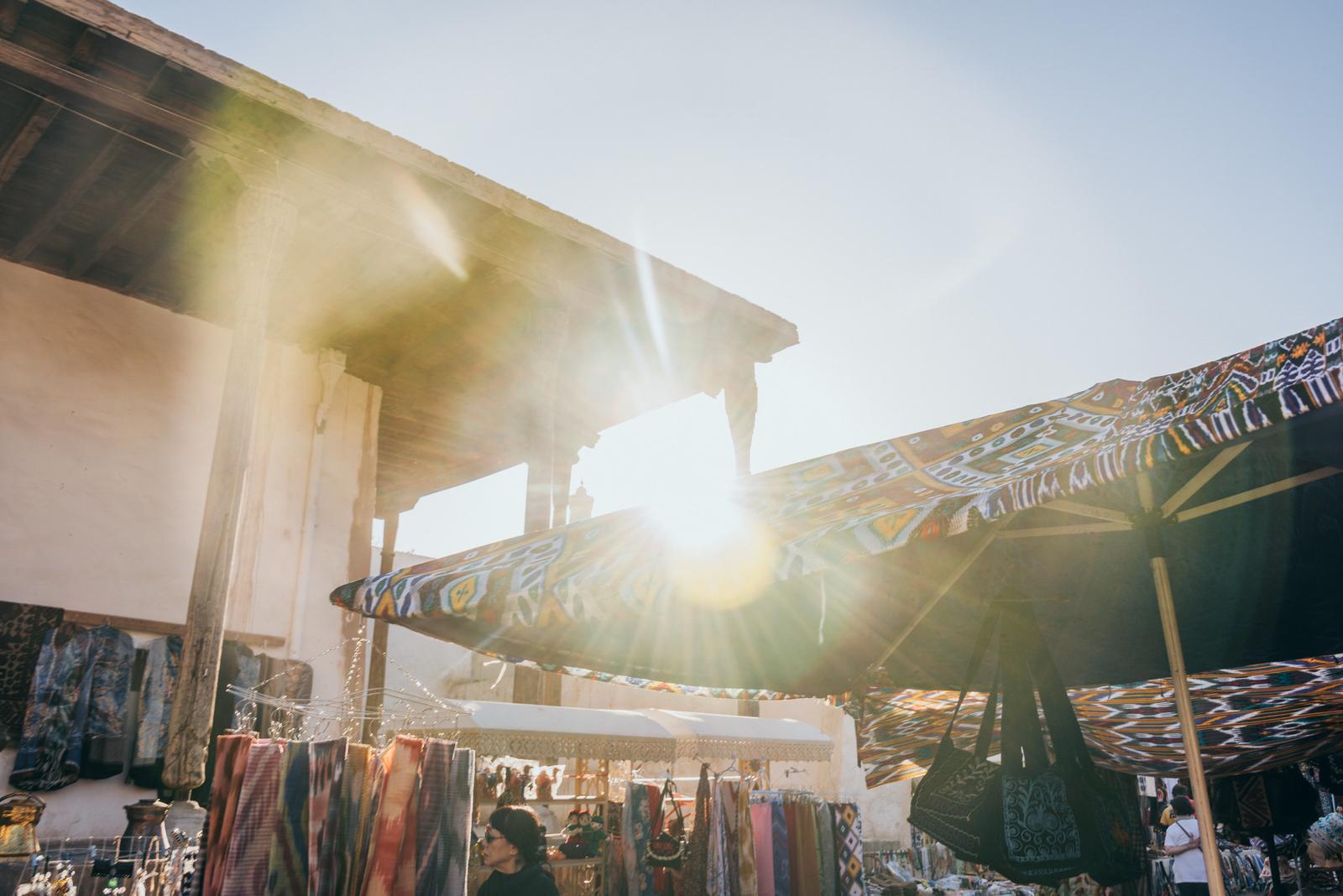
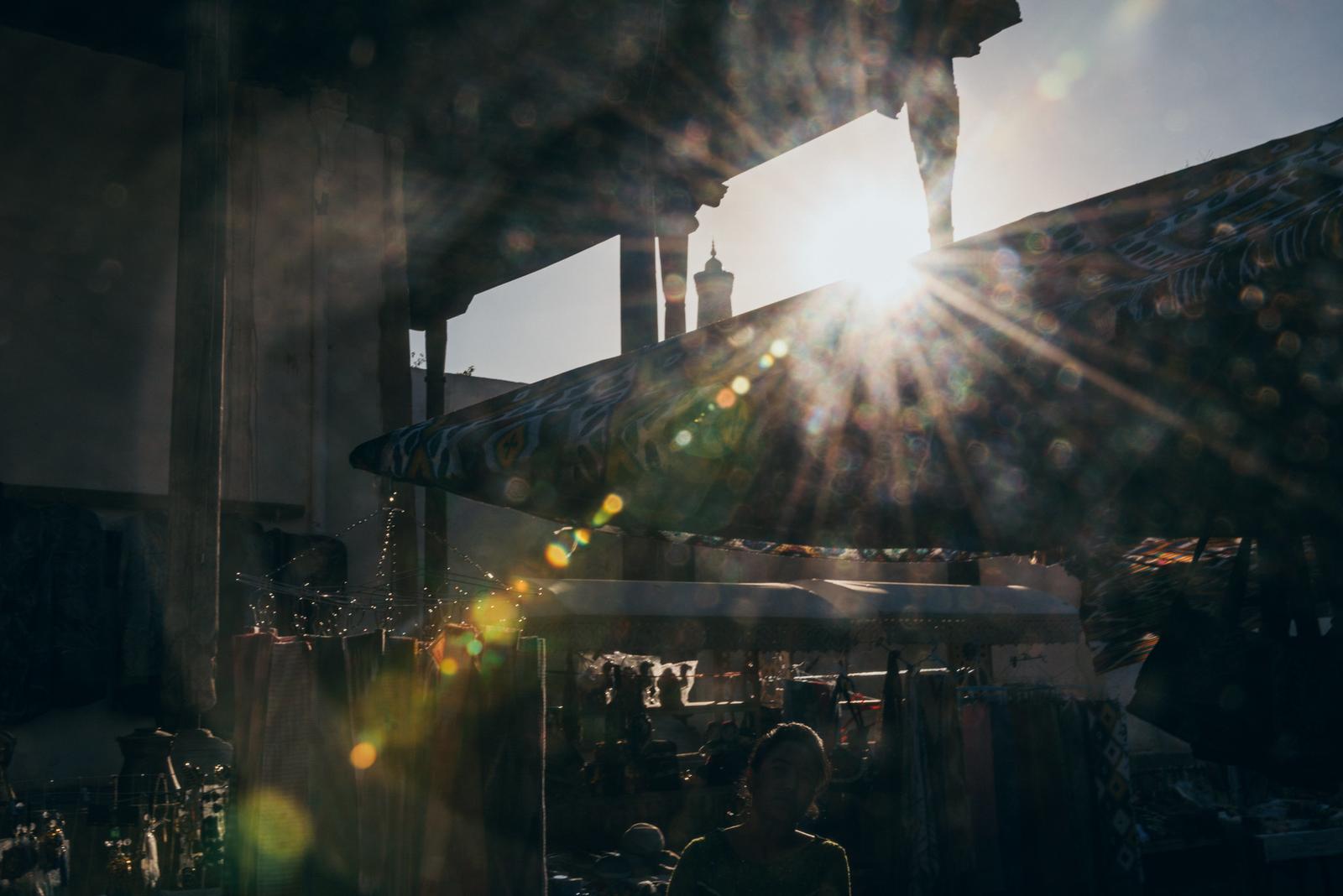
Climbing the Minaret
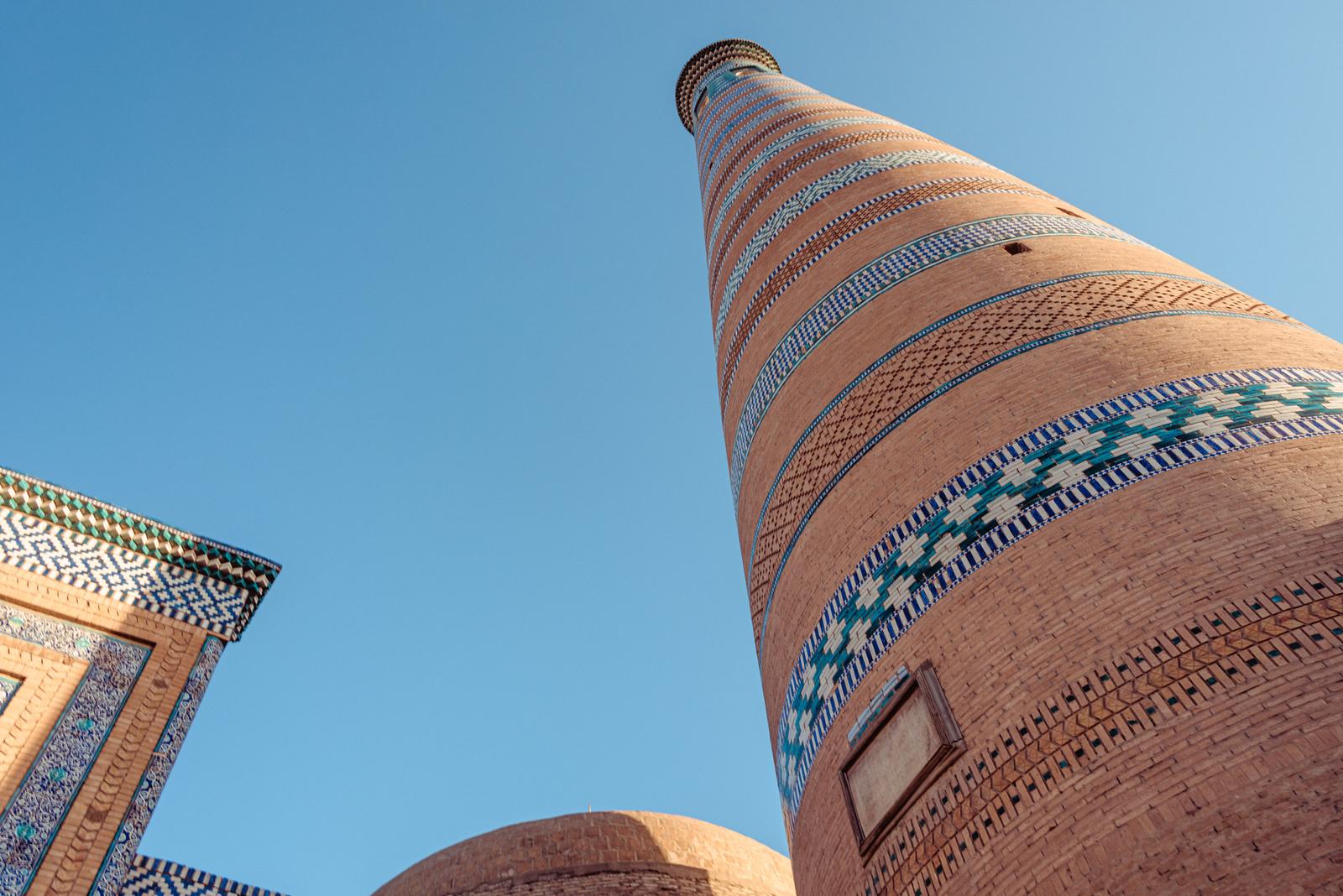
The highest landmark in Khiva is Islam Khoja Minaret, named after the reformist Grand Vizier of Khiva Khanate at the beginning of the 20th century. With a height of 45m, it’s about 15-storey climb with uneven steps. Compared to Giotto’s Campanile in Florence, the view on top of the minaret is not covering the whole city, but still it’s great to have some birdeye perspective.
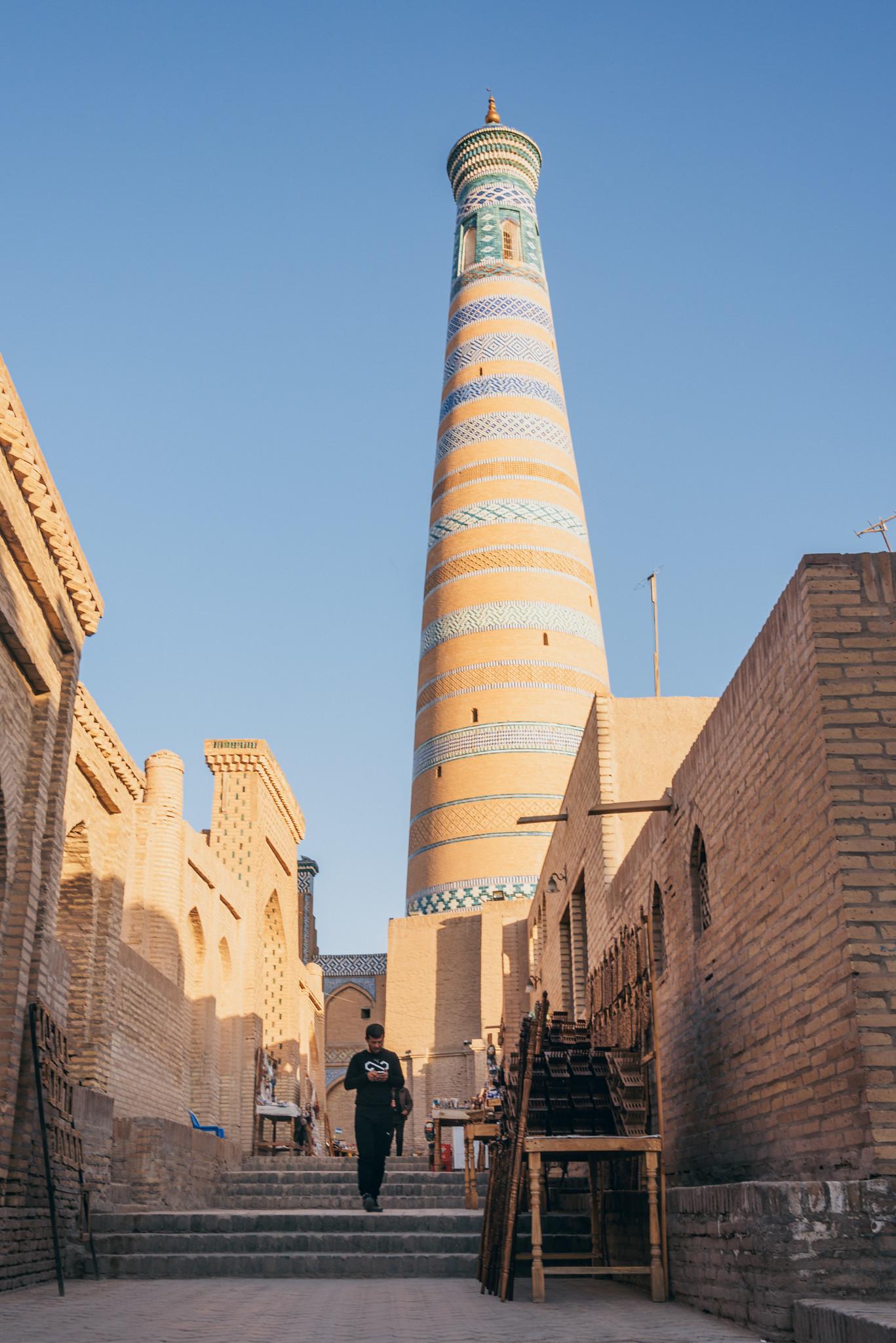
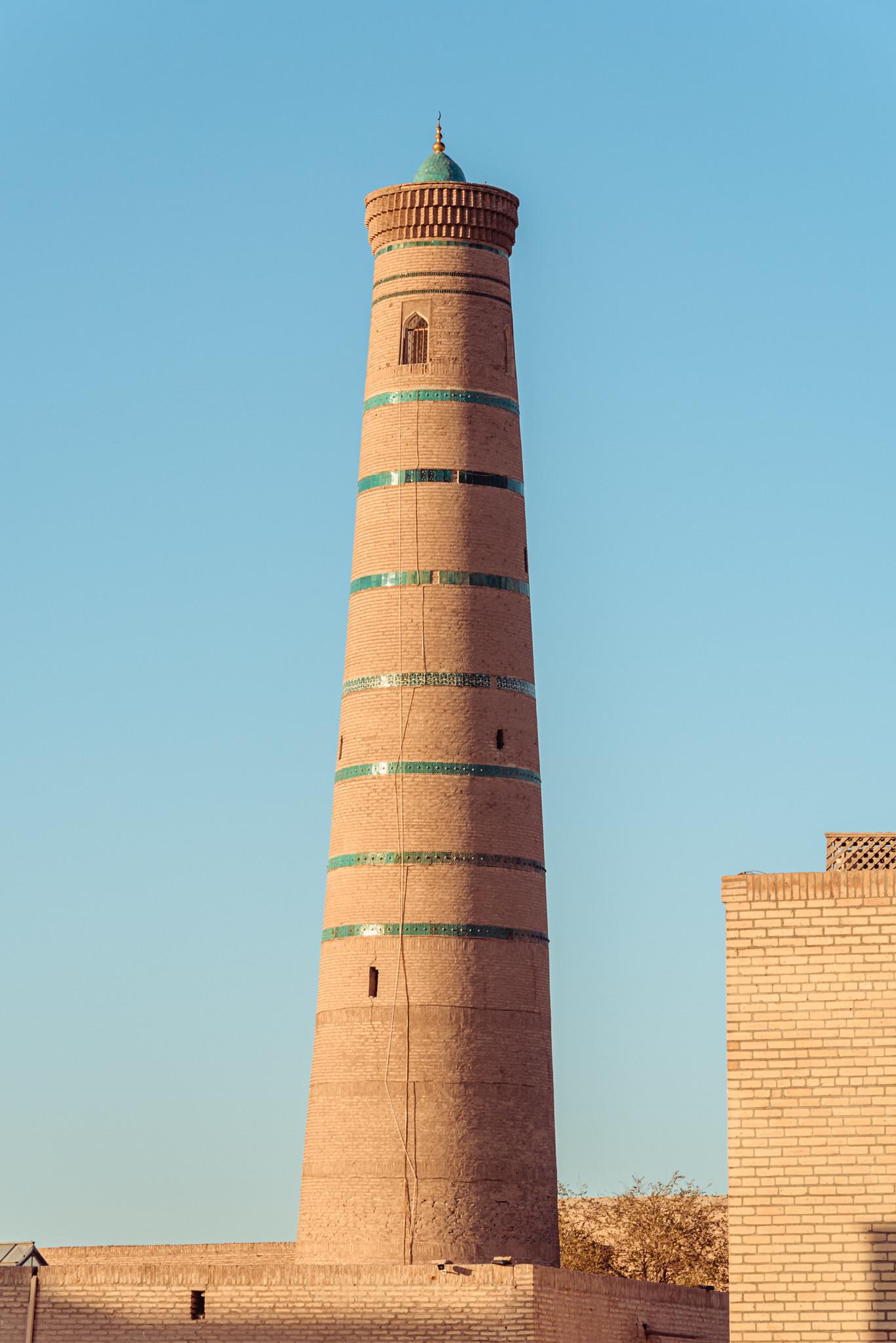
They clay bricks of the buildings naturally composed a pastel painting, with help from sunshine in the late afternoon. In a brief moment I thought it’s a MMOFPS desert map, where houses were connected by entangled gates and stairs to create a number of concealed spots and paths.
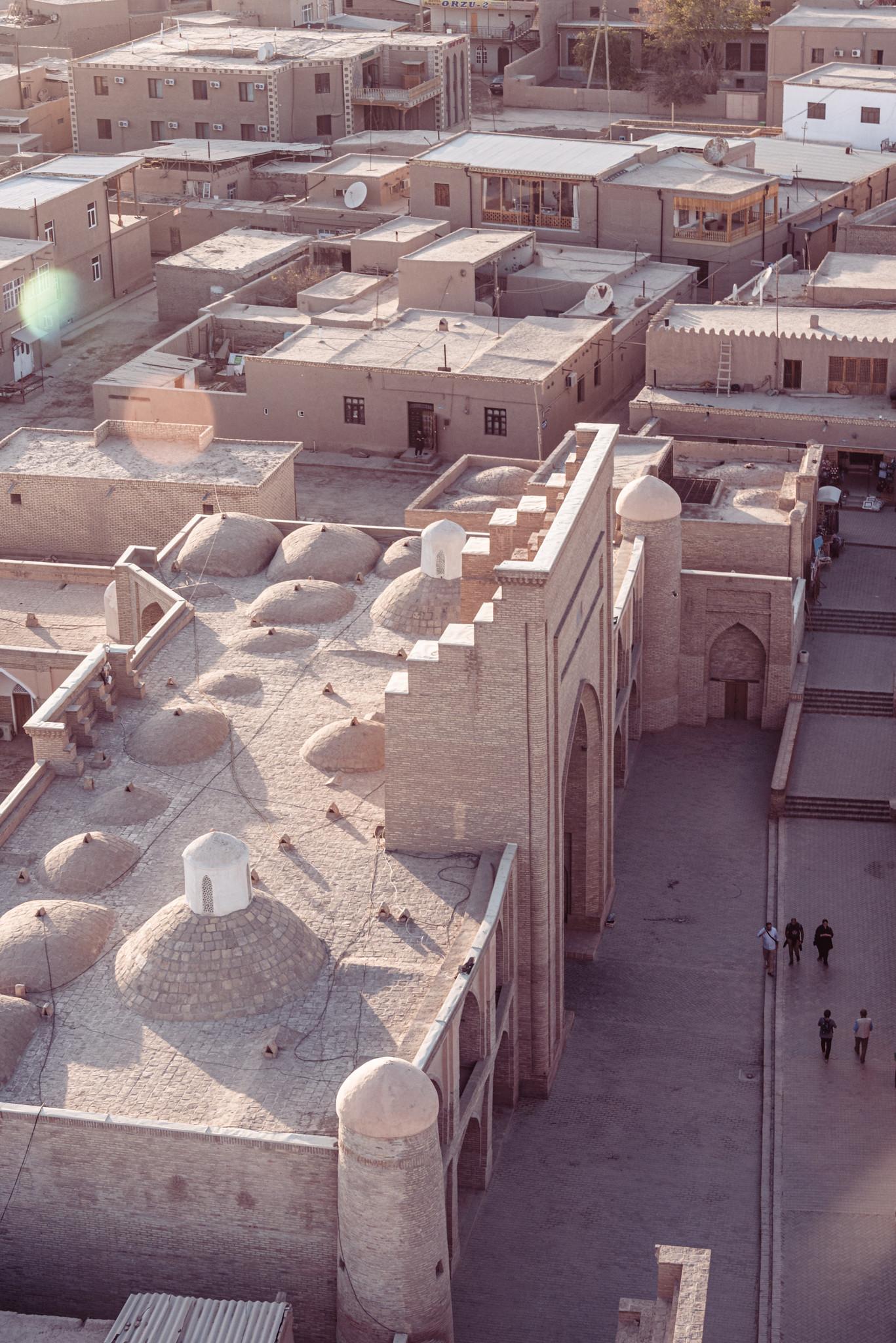
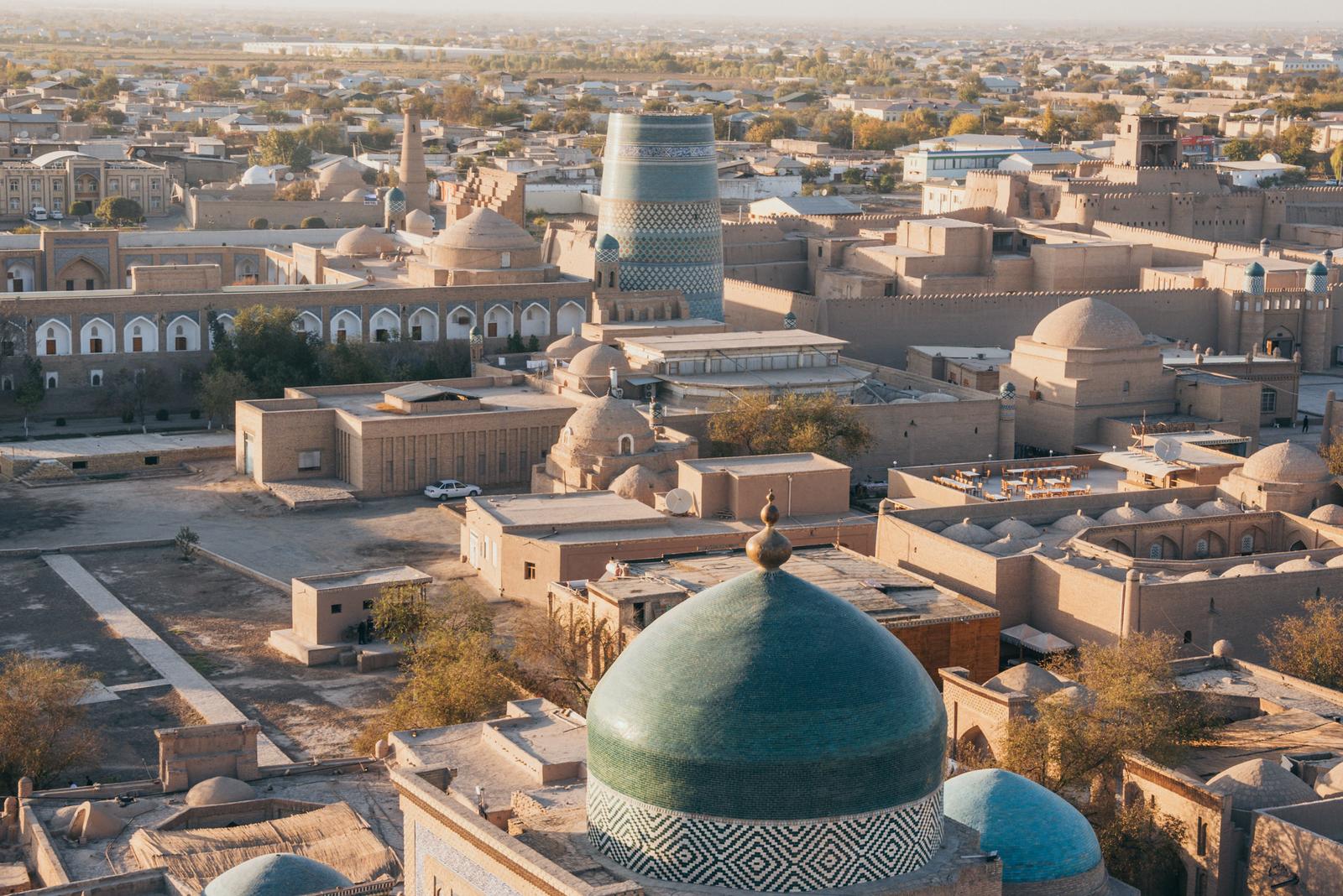
The Night Stage
I exited the East and West Gates at my first sunset in Khiva to feel another aspect of the city, and it was not disappointing me at all. Sunset in a dusty and arid place is the best, as you feel the colors are sweeter and softer. You don’t have hard times thinking about how to post-process the photo, as it’s inherently good-looking.
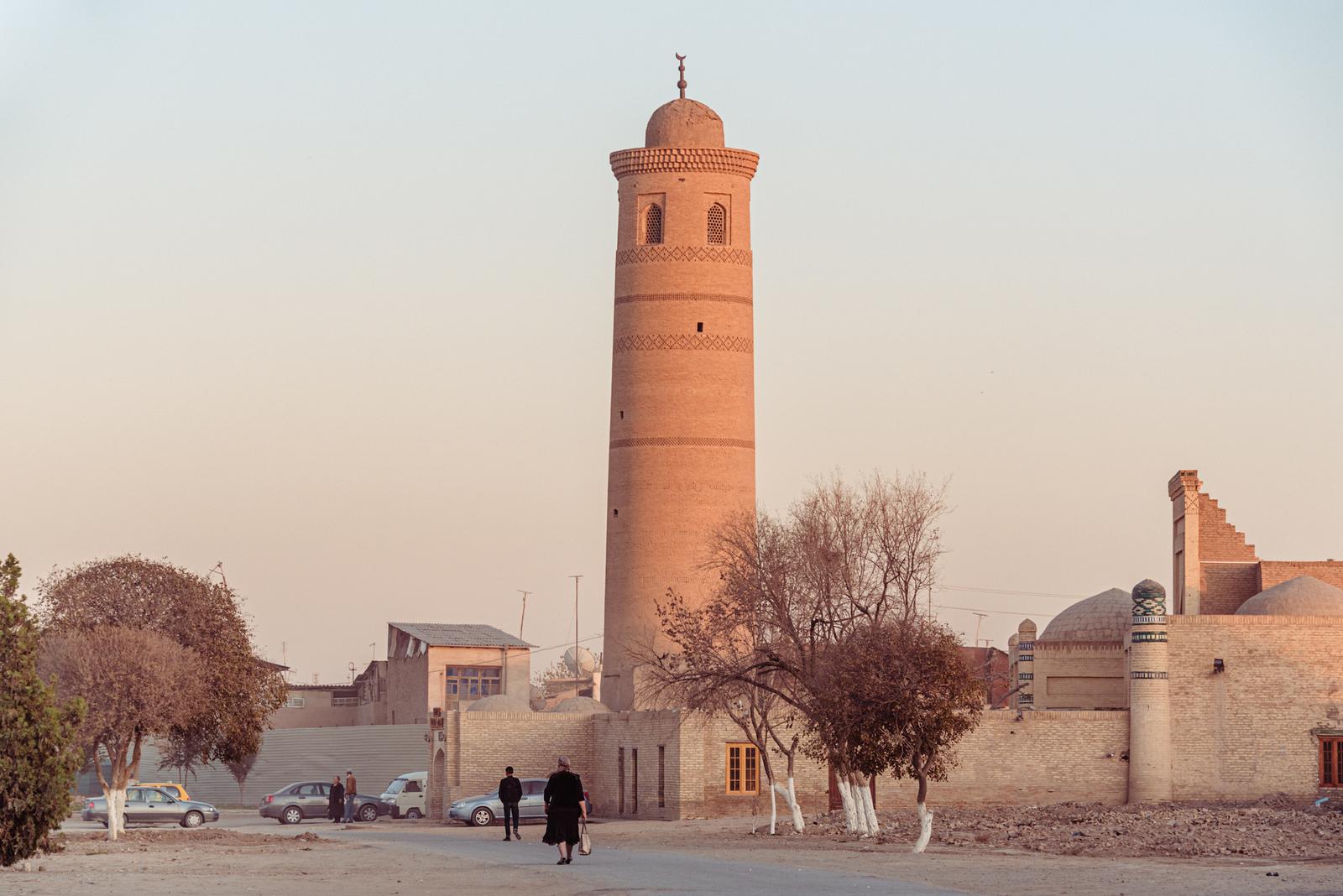
It’s a crime that I have to jam the photos here in small size, because they all deserve to be displayed to the public.
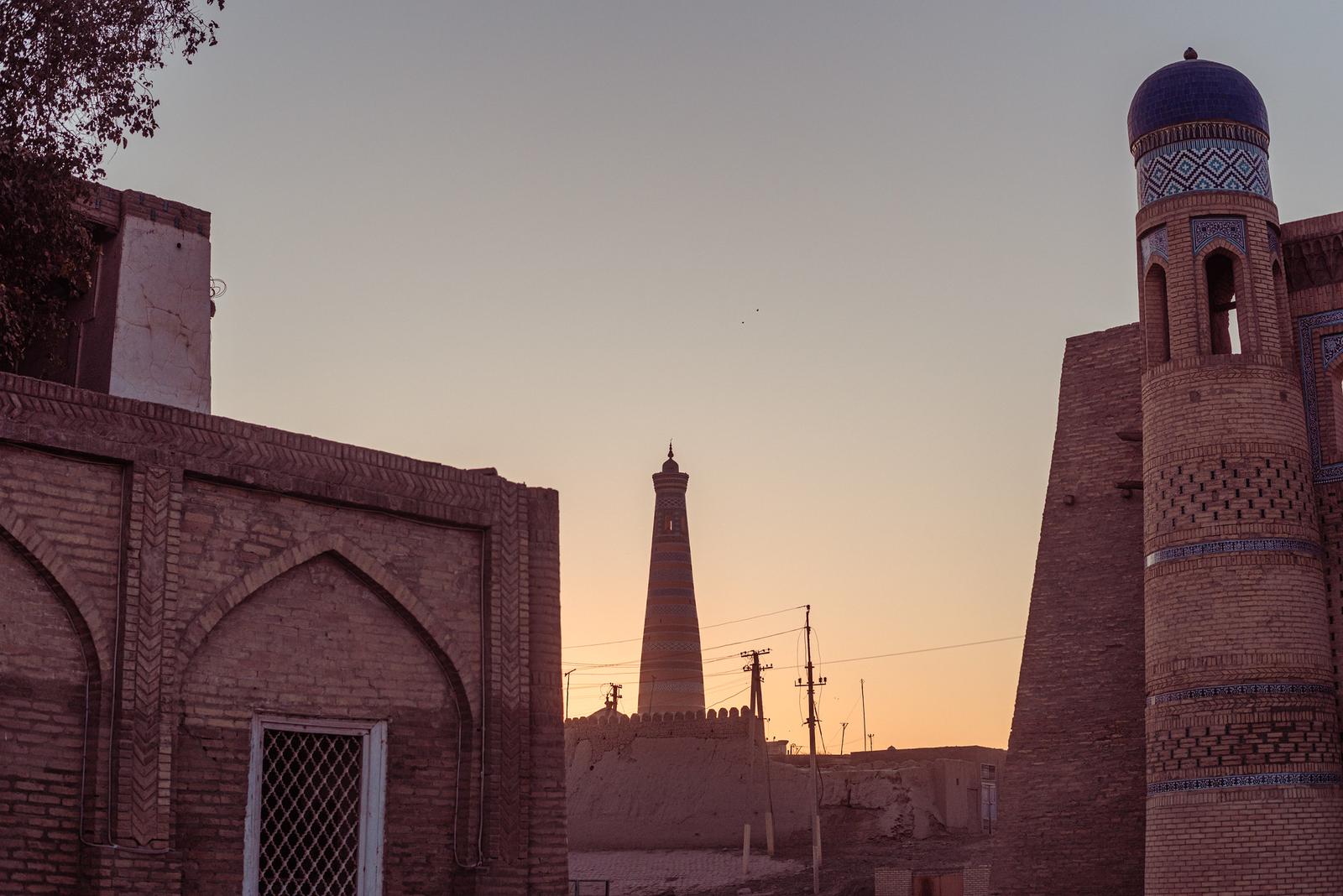
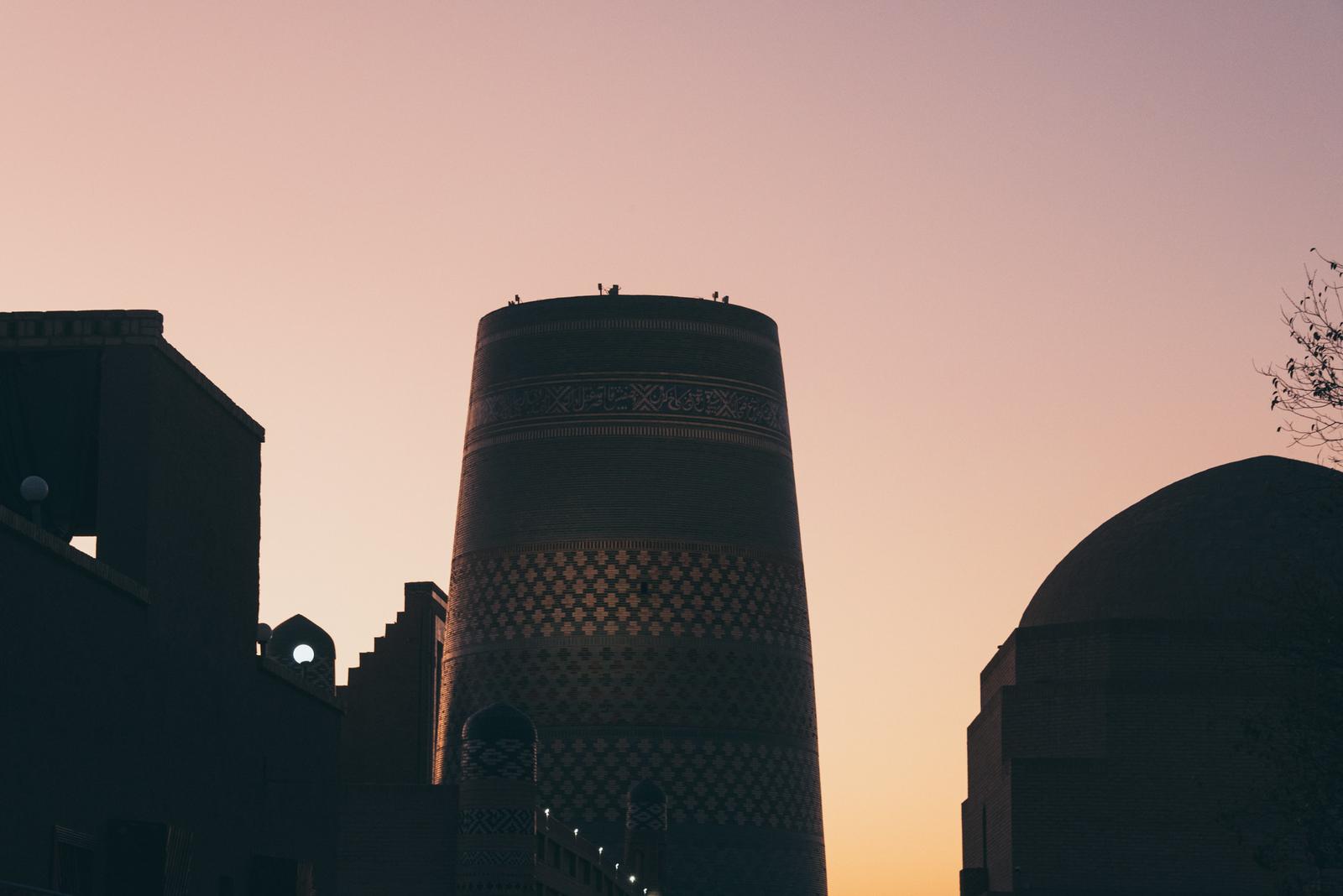
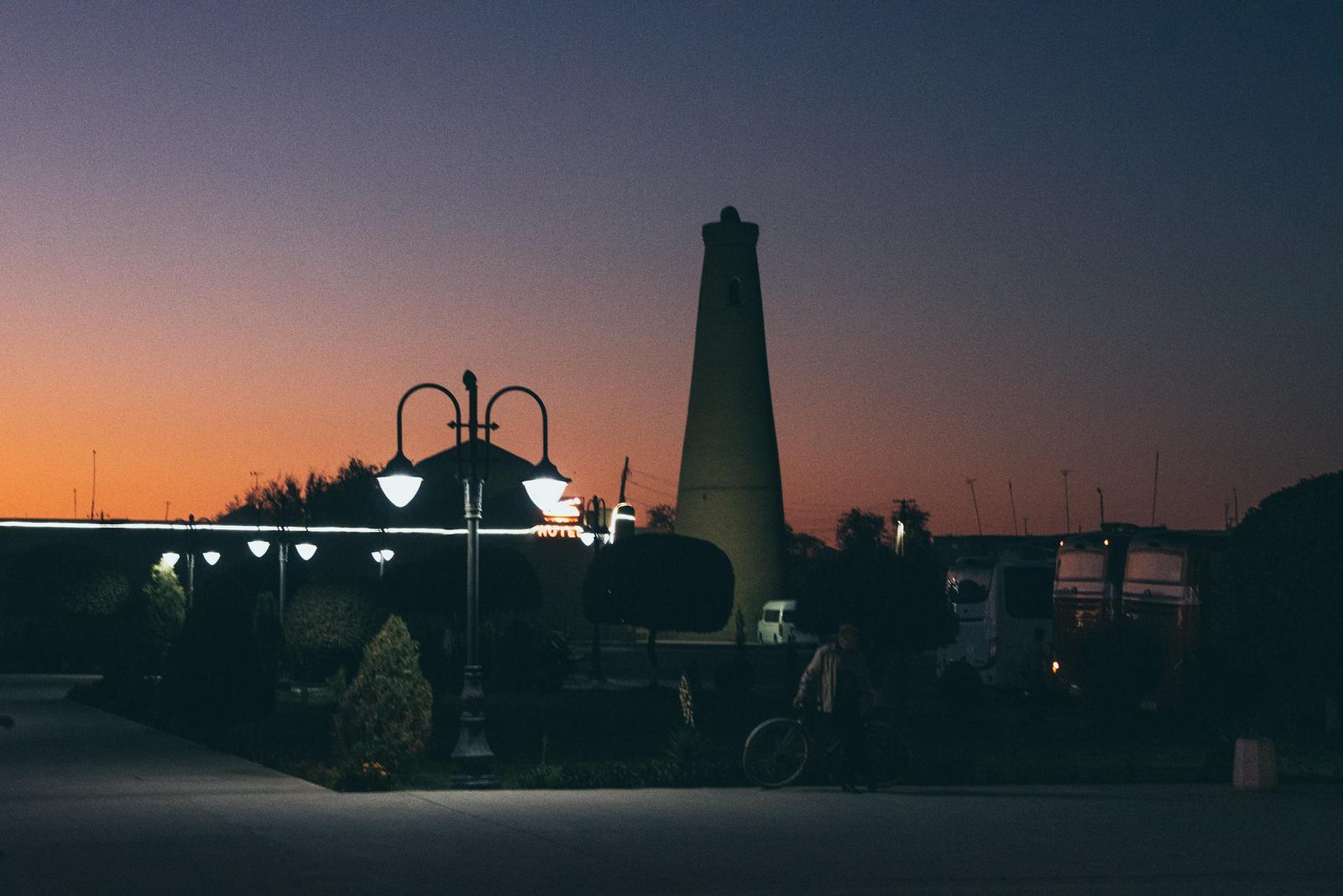
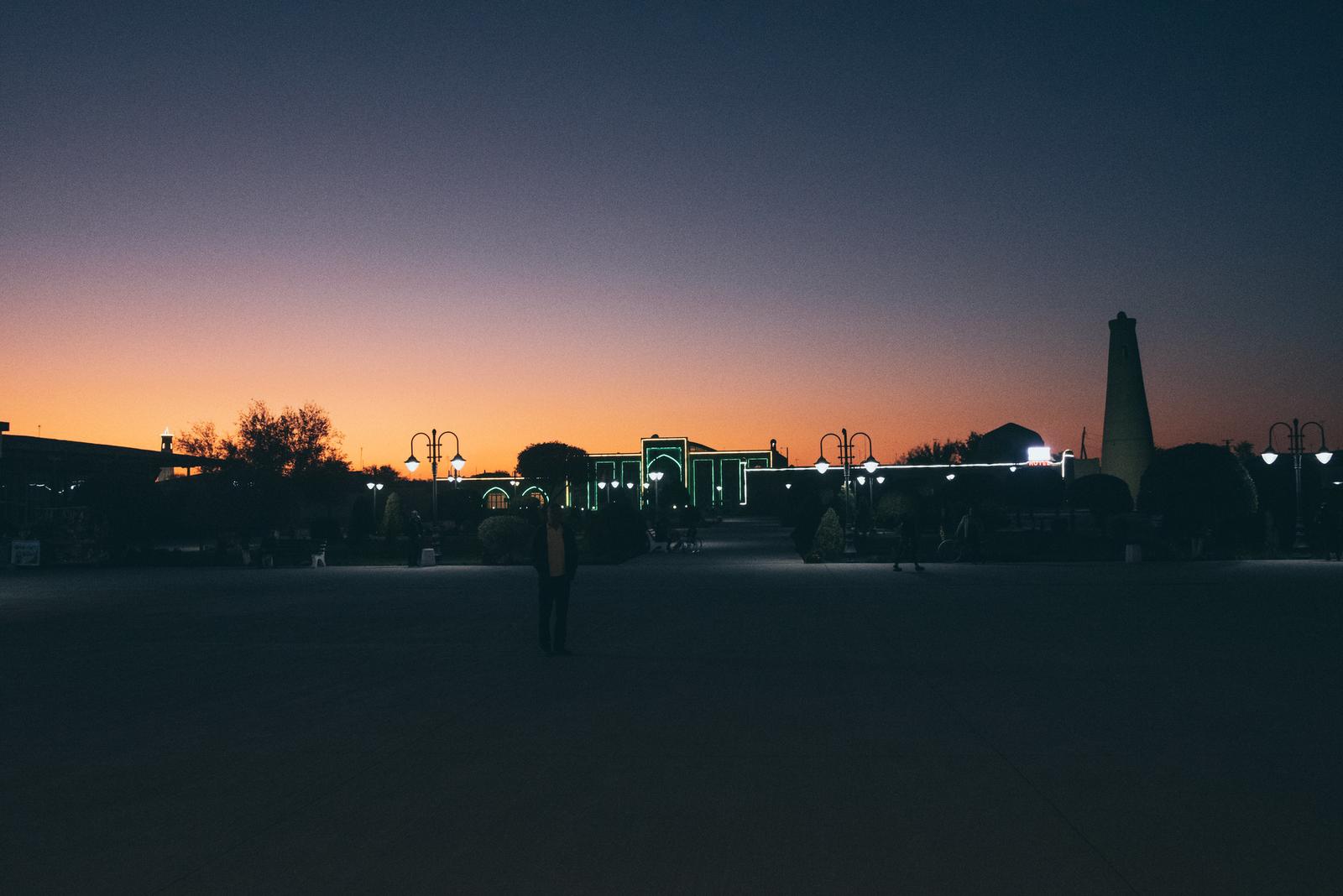
Silhouette over a golden backdrop is the climax of any hobbyist photographer.
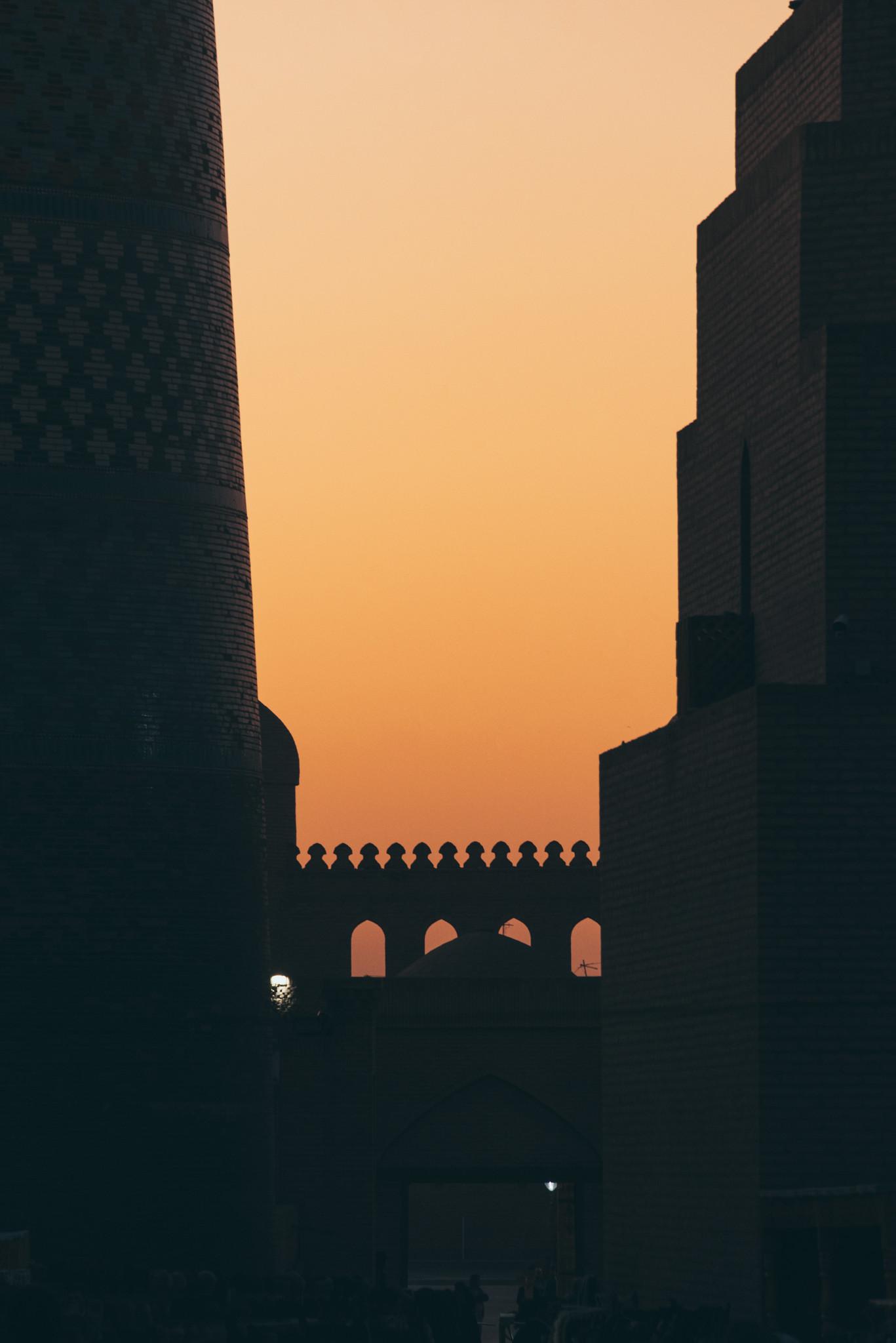
I would give my applause to who designed the lighting of the gate and gave it the spotlight in this oasis’ boundless night. The gate glowed like a candle in the darkness, acting as the sentinel for its citizens.
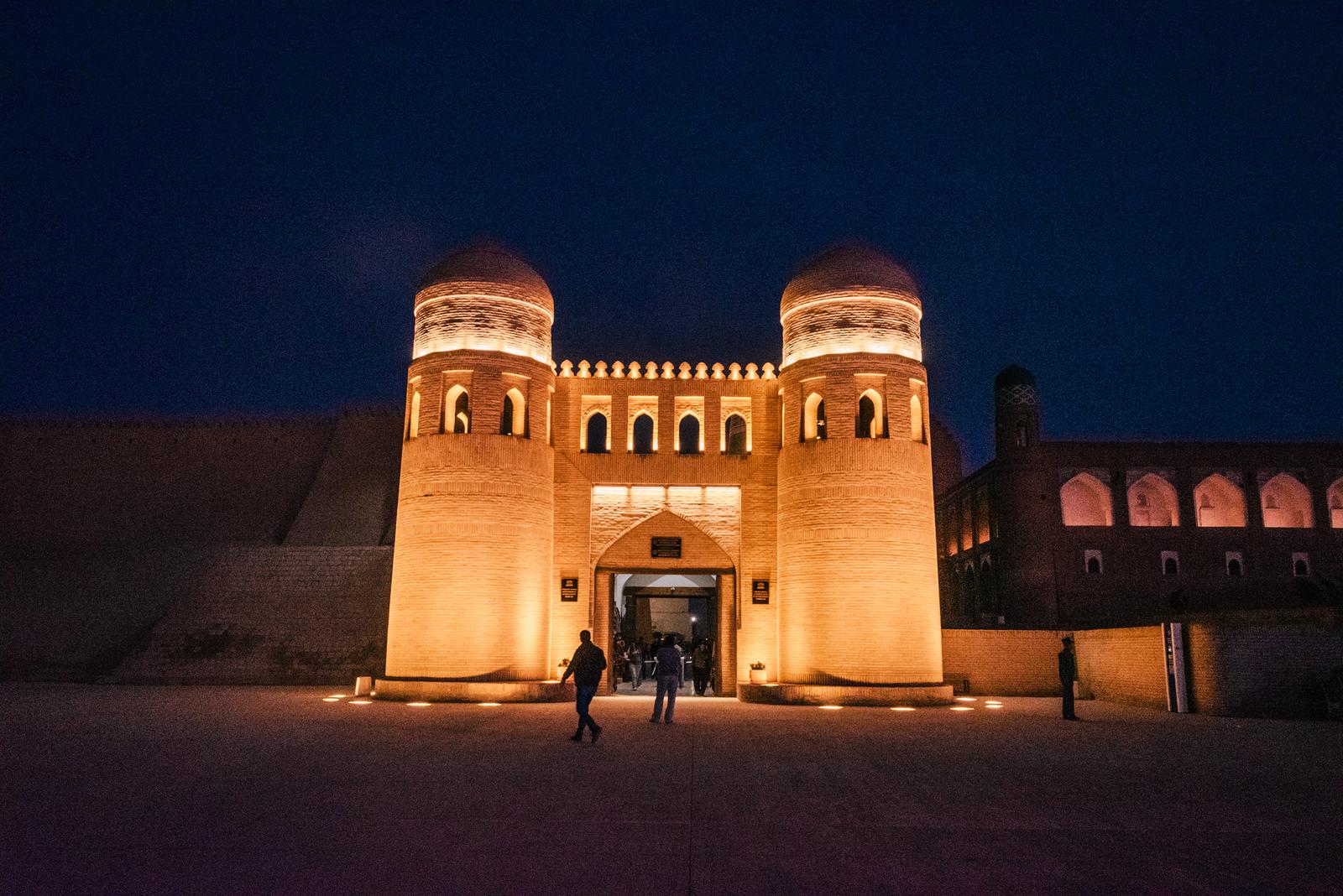
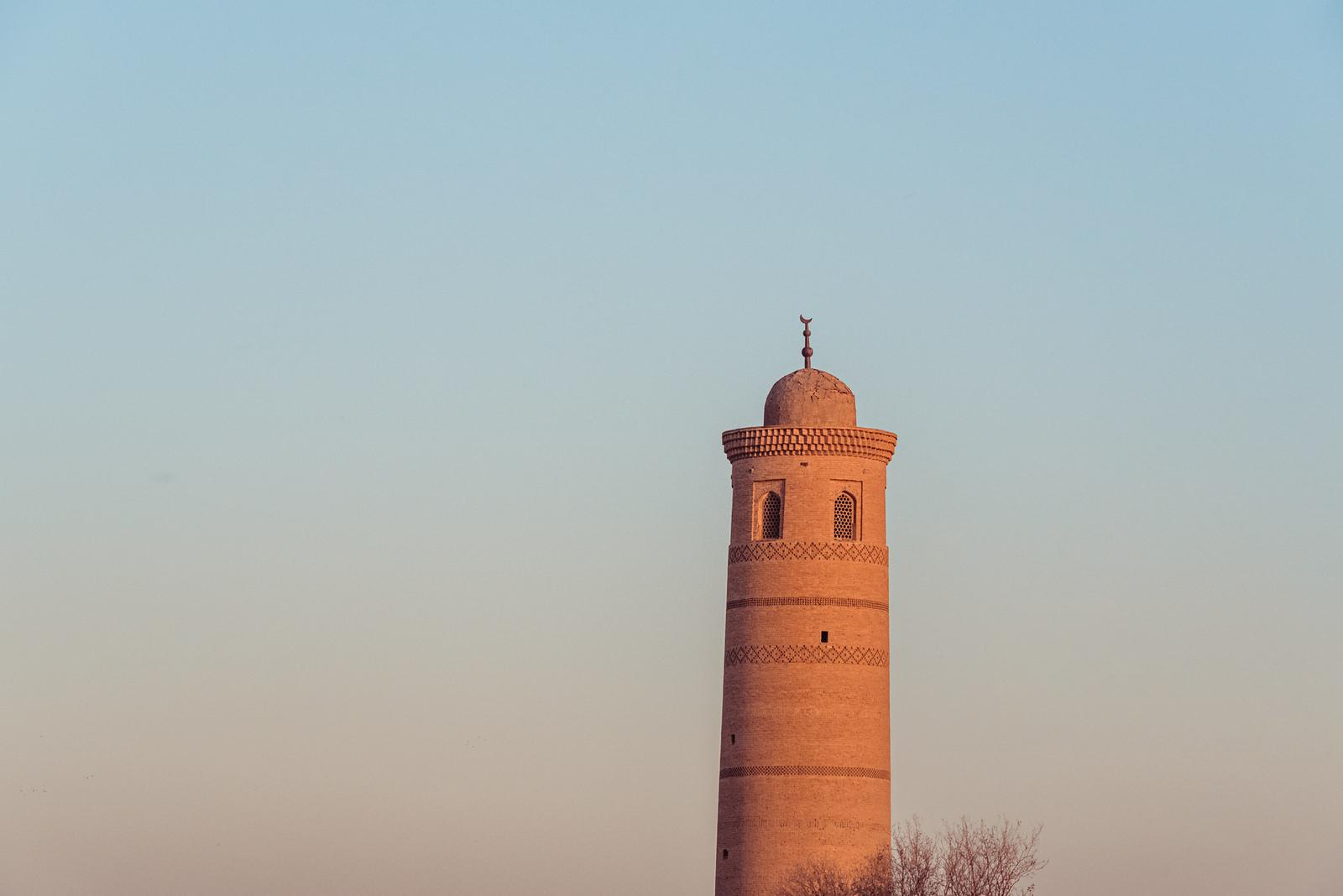
A Pristine Morning
A literally good morning when I got up early enough to enjoy the walk on top of the Ark (Kuhna Ark). The journey was effortless, with lots of staircase leading you up from everywhere inside Itchan Kala. That opportunity granted me another perspective on Khiva, to observe those tiny human acting in slo-mo footage.
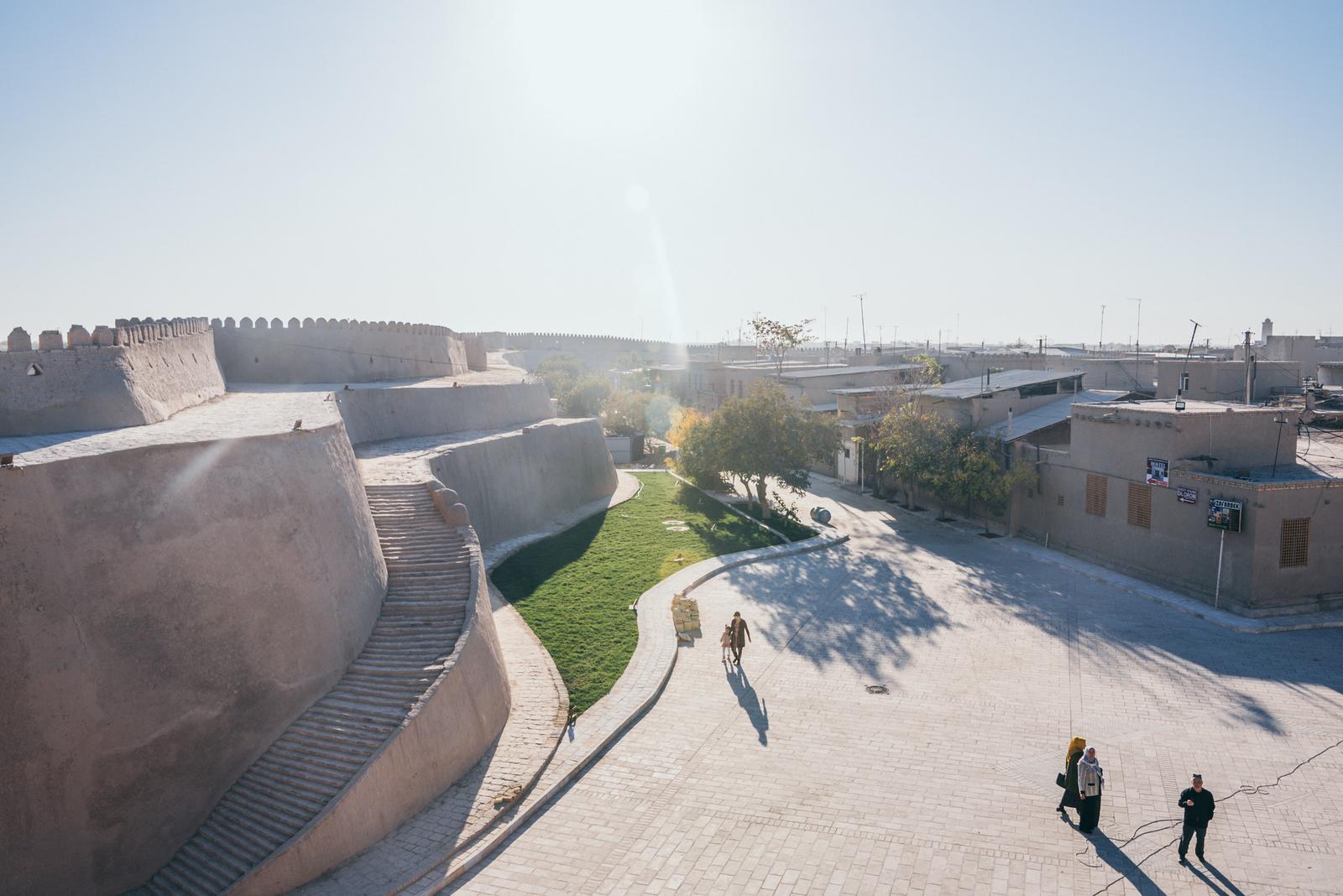
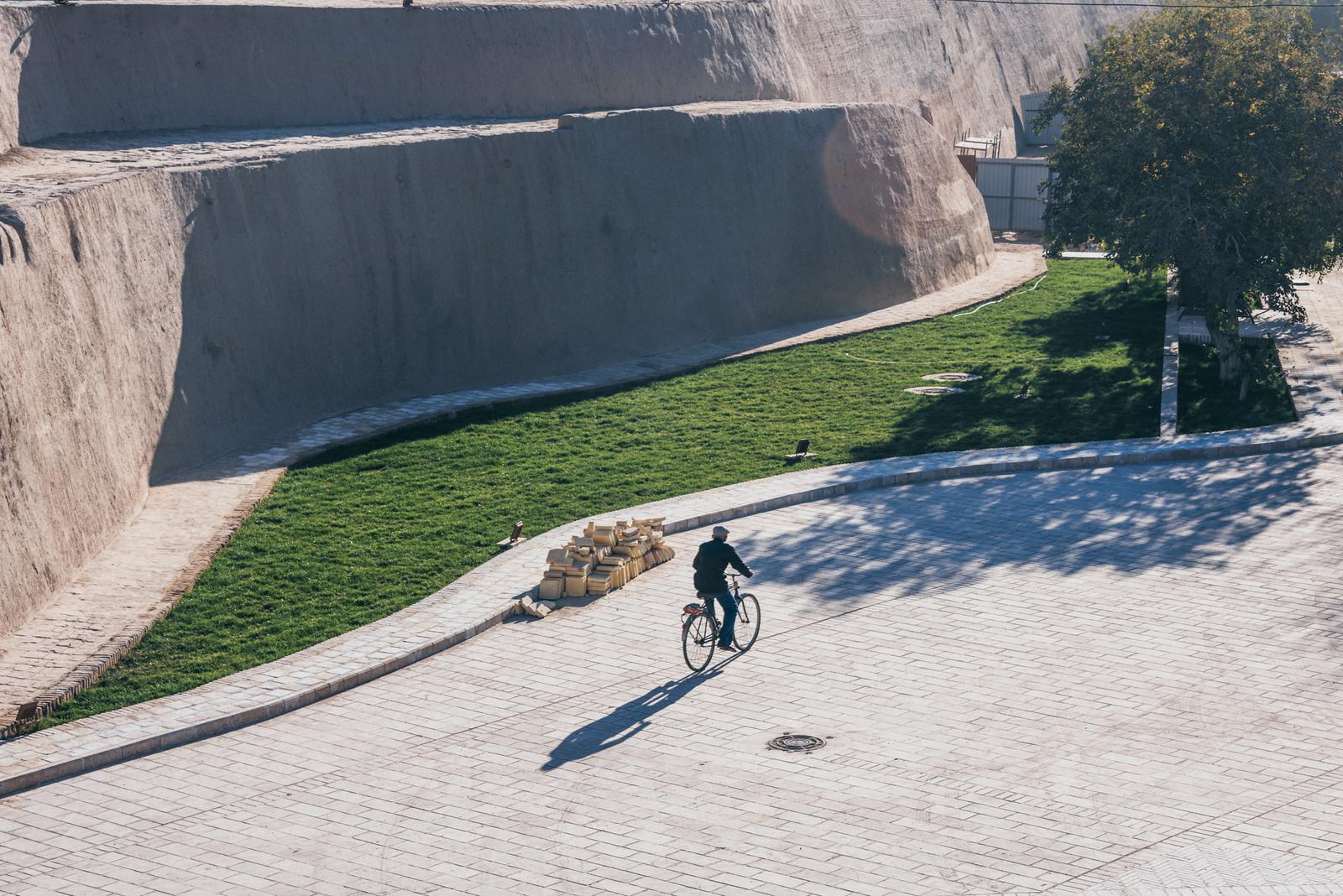
That’s a pretty perfect time to have shiny lens flare for these wide-angle captures. Which morning could be better than an autumn morning, I wonder?
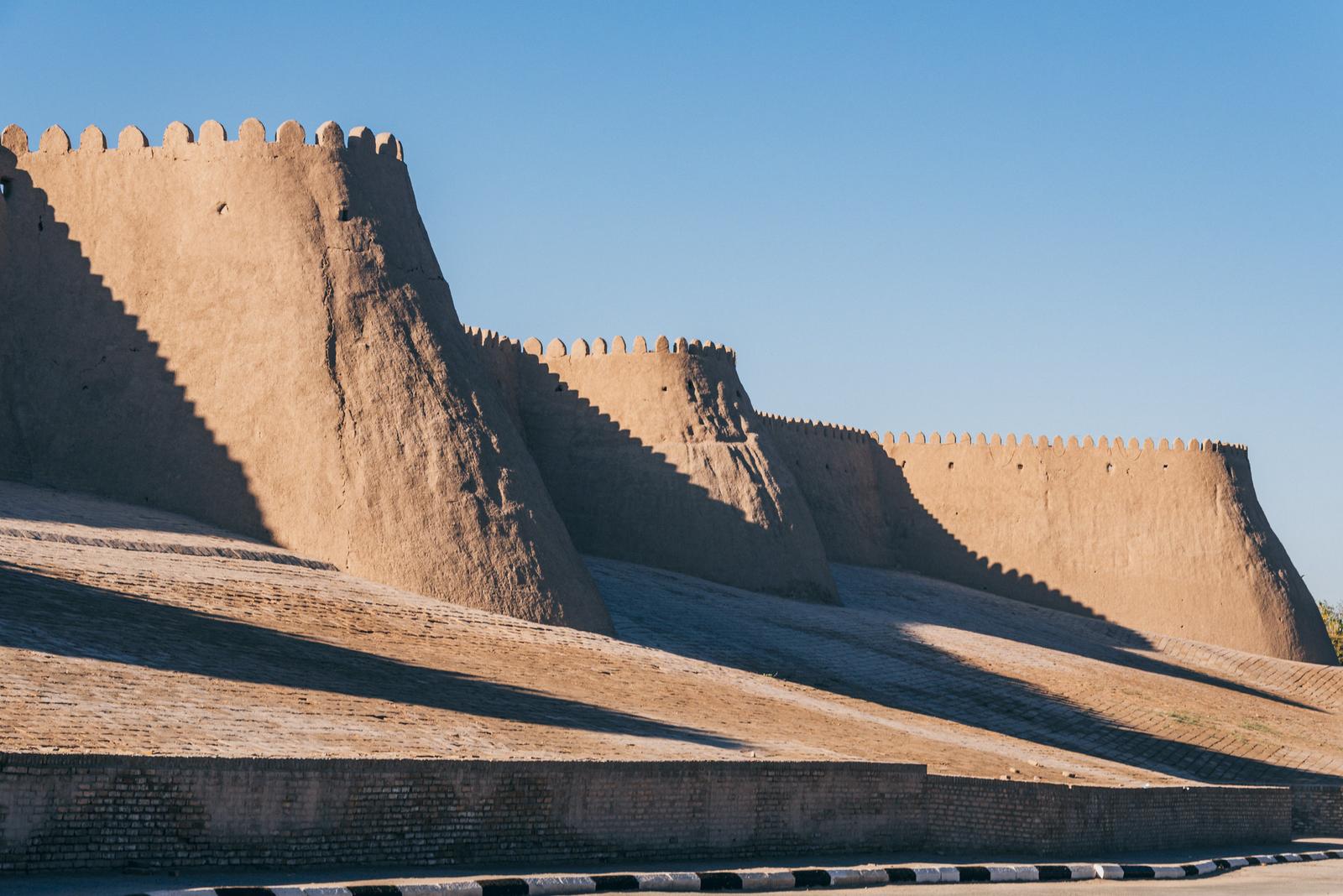
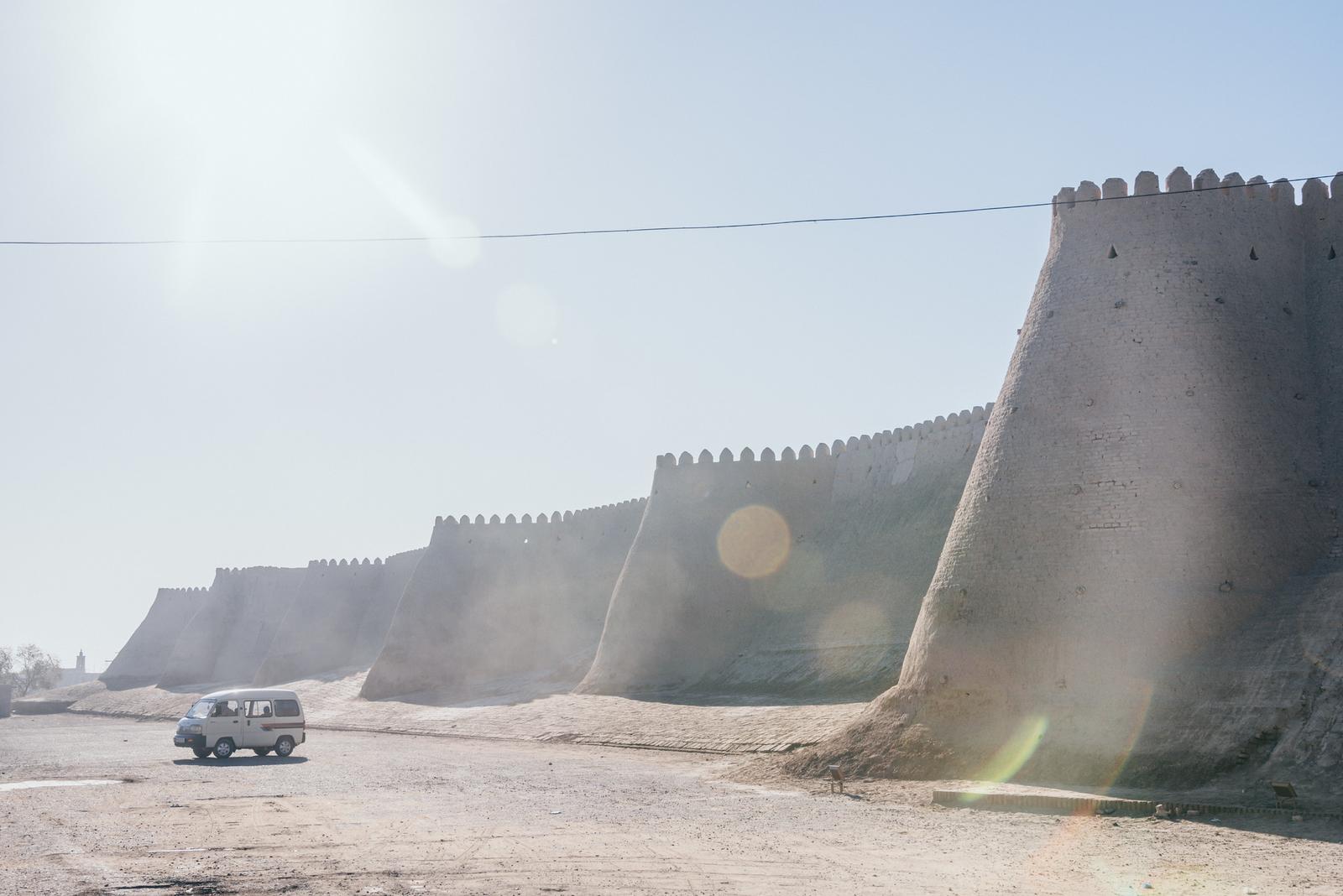
…Oh look! Cars on street!
You may get familiar with the popular Chevrolet white cars and yellow taxis in Uzbekistan, but Khiva is the living museum of old-fashioned blockish autos. And they mingle nicely with the ambience, yet standing out as the noticeable pieces of metallic machine on the road. Some were probably left unused for quite a long time that you could perform some drawing on the dust covering the windscreens.
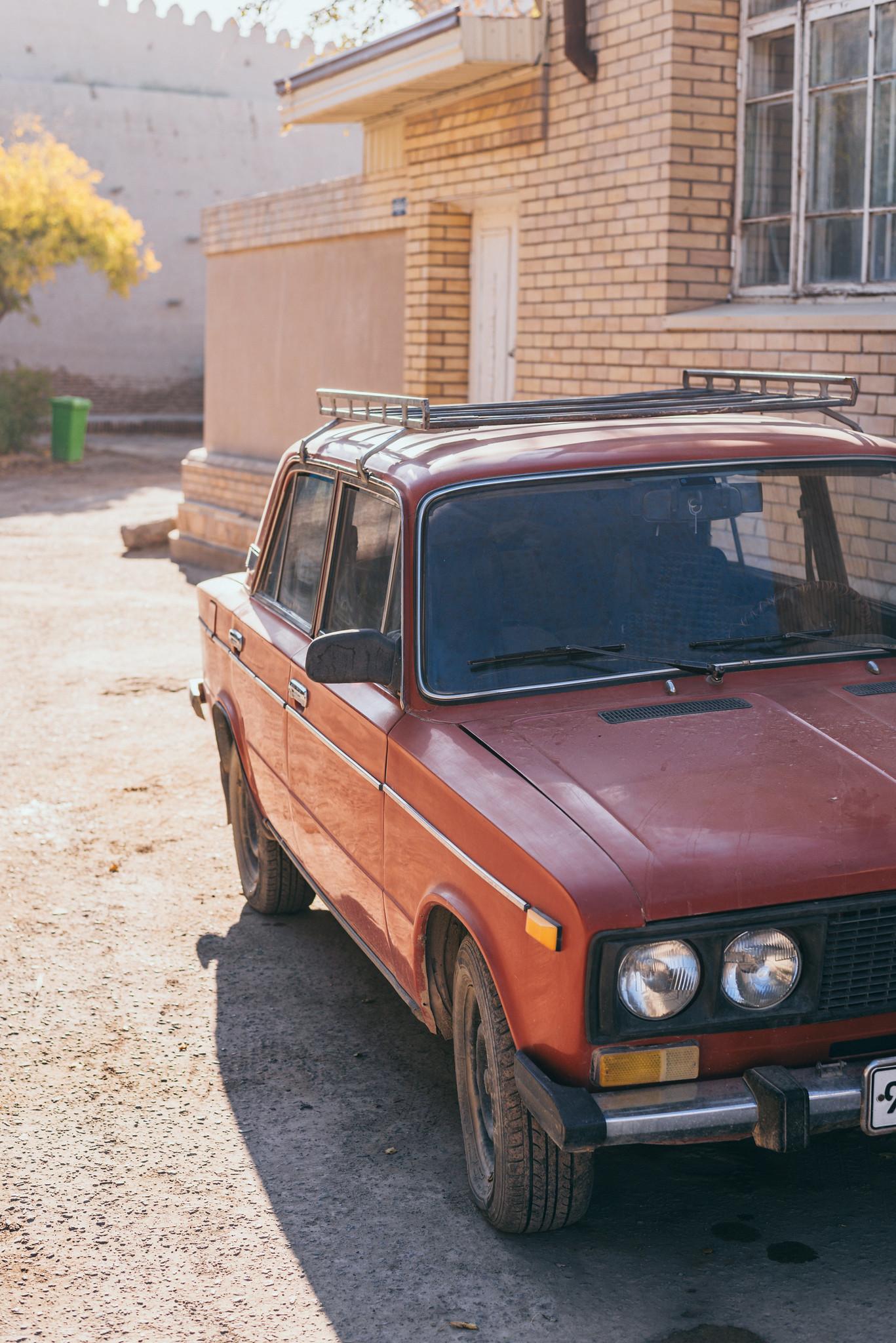
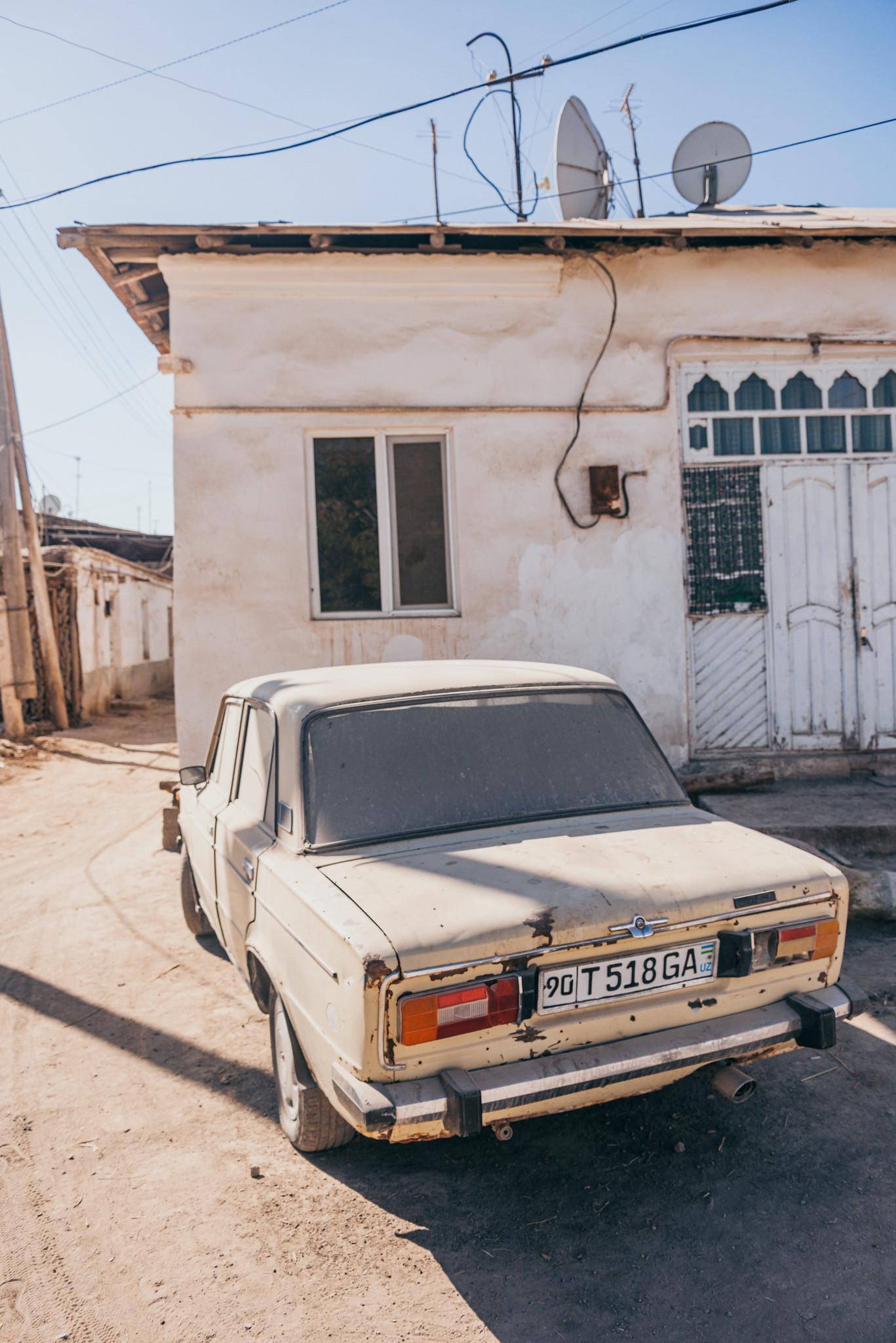
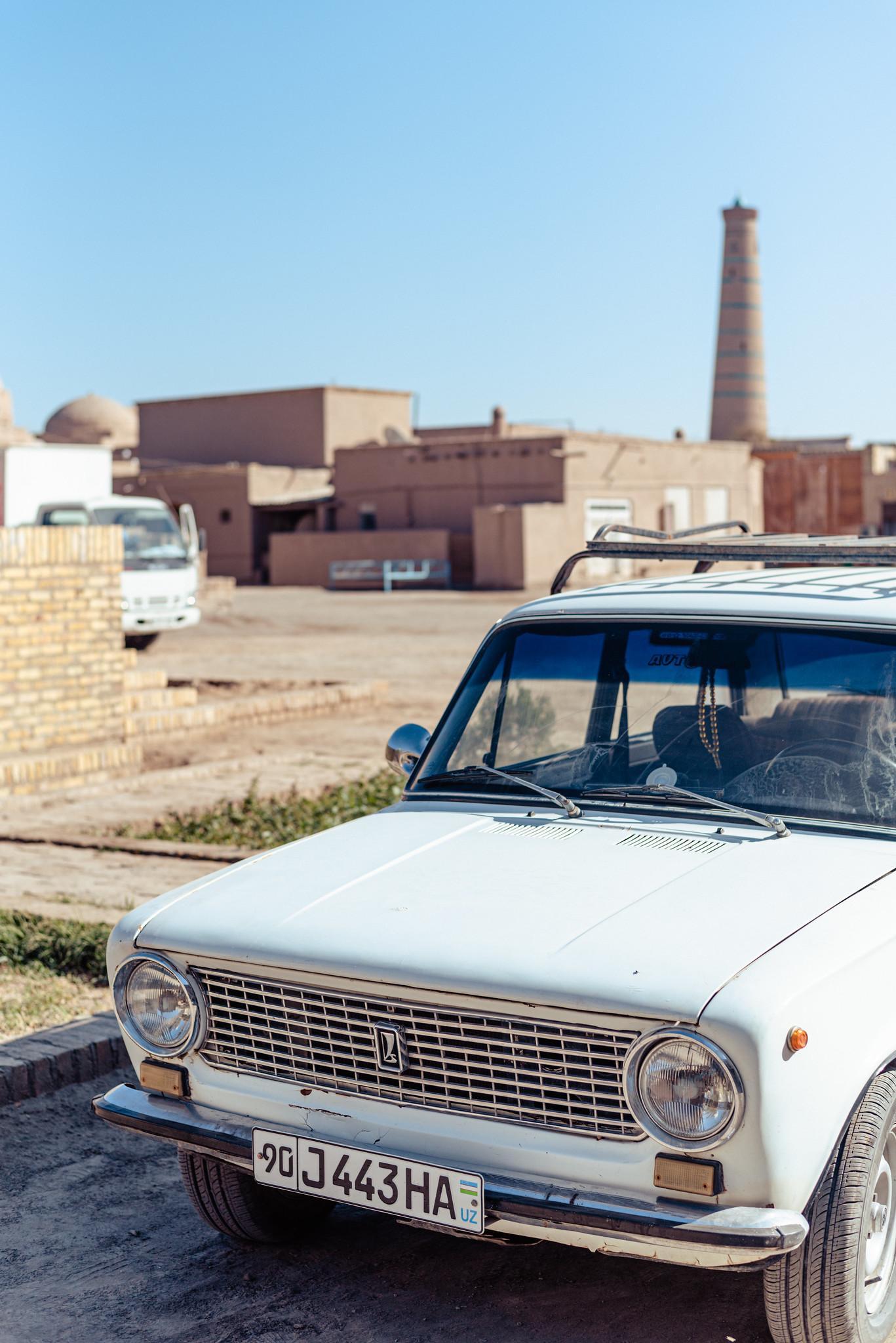
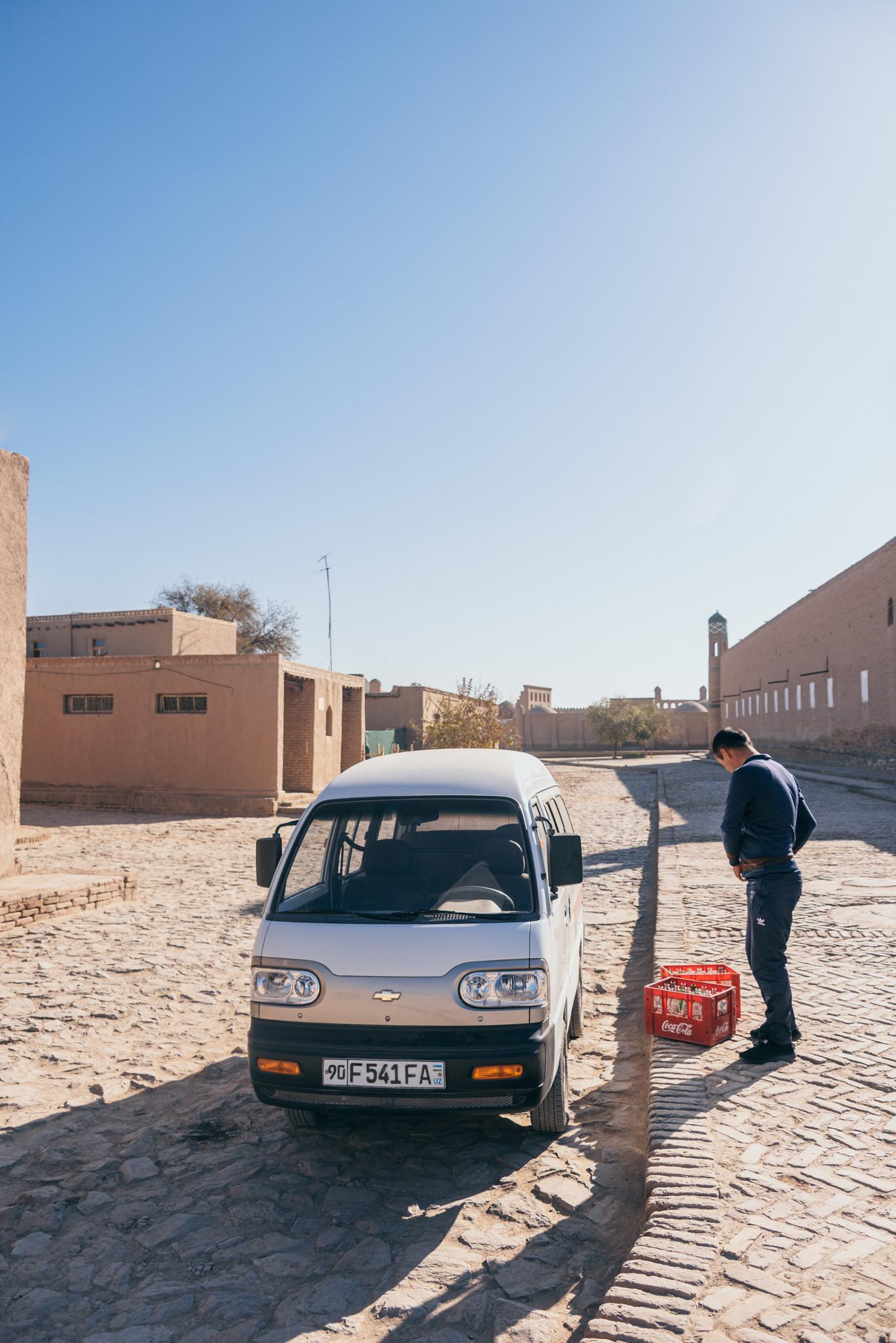
Random Encounters and Acquaintances
Reliving the entire activities in that morning makes me goosebumped. Not so many chances in life that a few hours are jampacked with amusing encounters and strangers: you are not simply living, but living to the fullest.
Let me recall, the local were just continuing their everyday tasks, and not as if they were performing just for the tourists to see. Students were going to school, adults were on the ride to their workplace. At the end, it’s just another day (in a historical site).
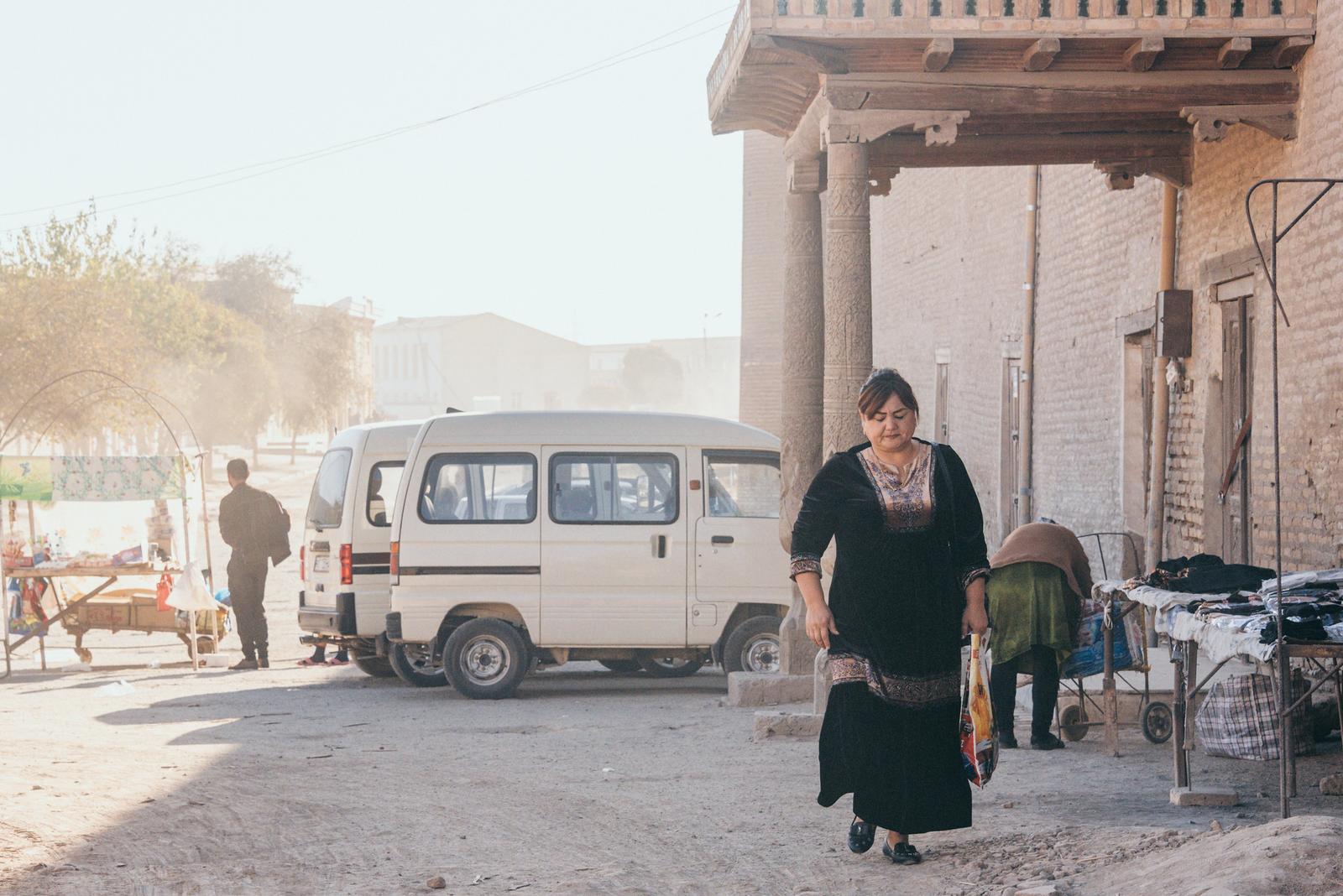
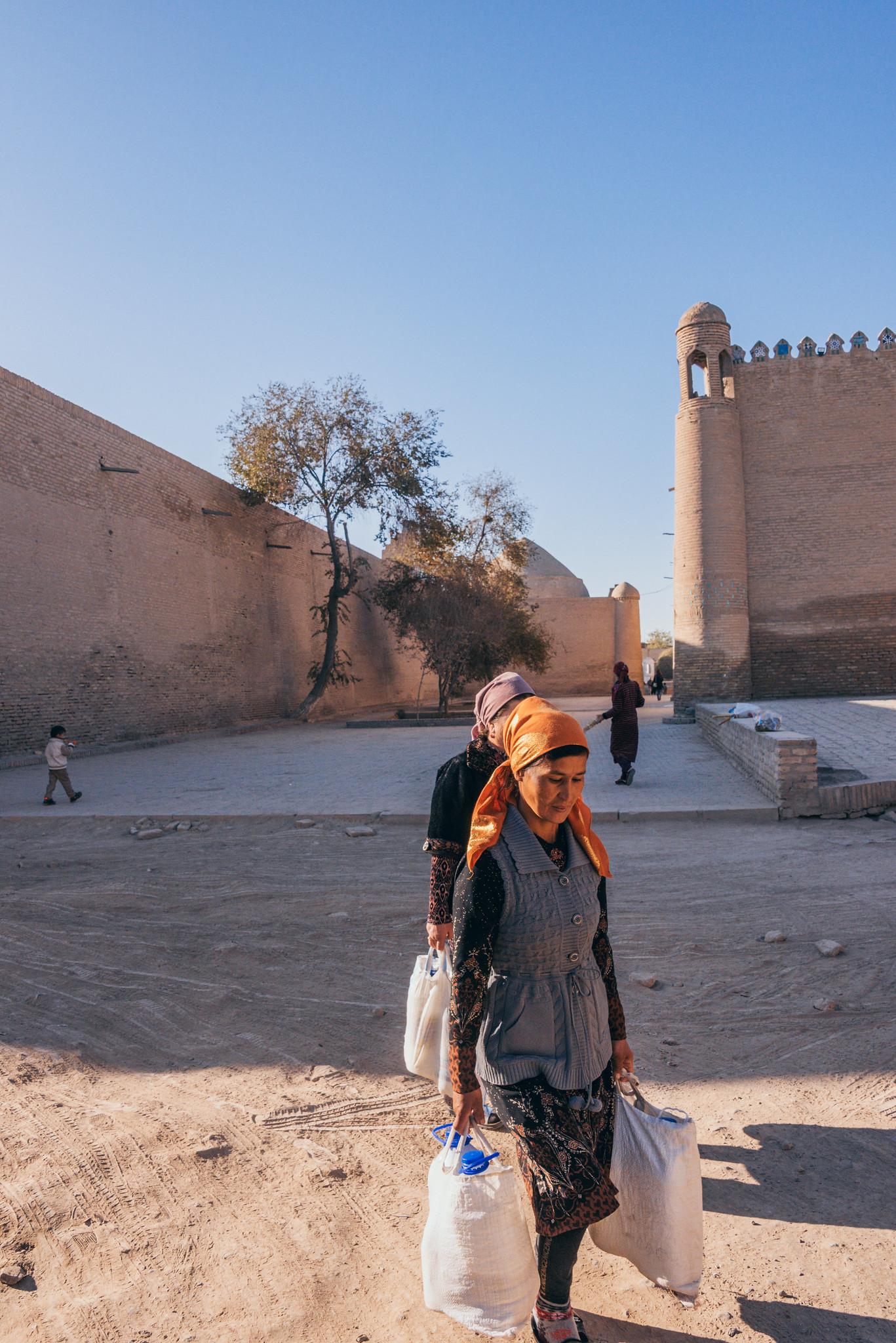
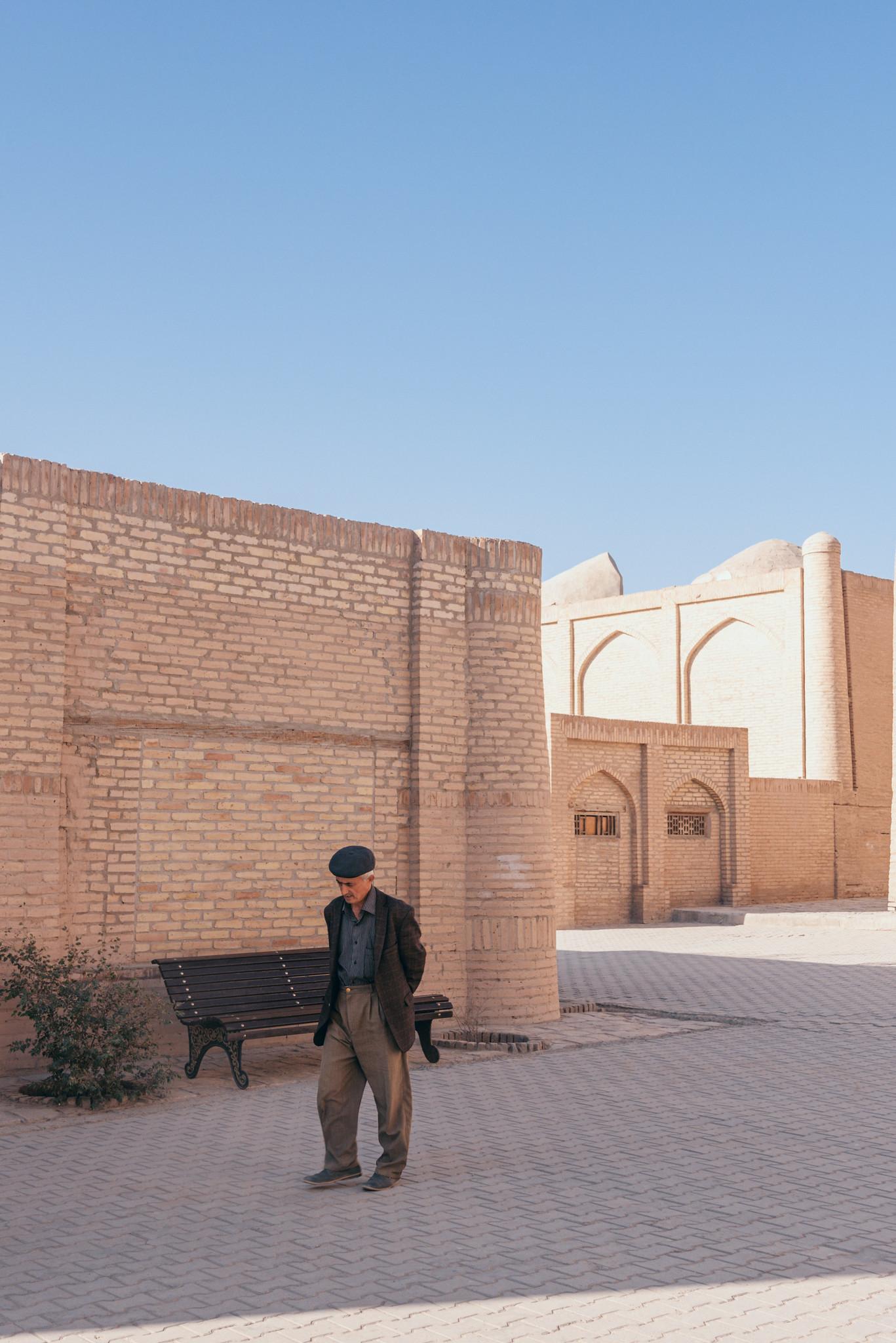
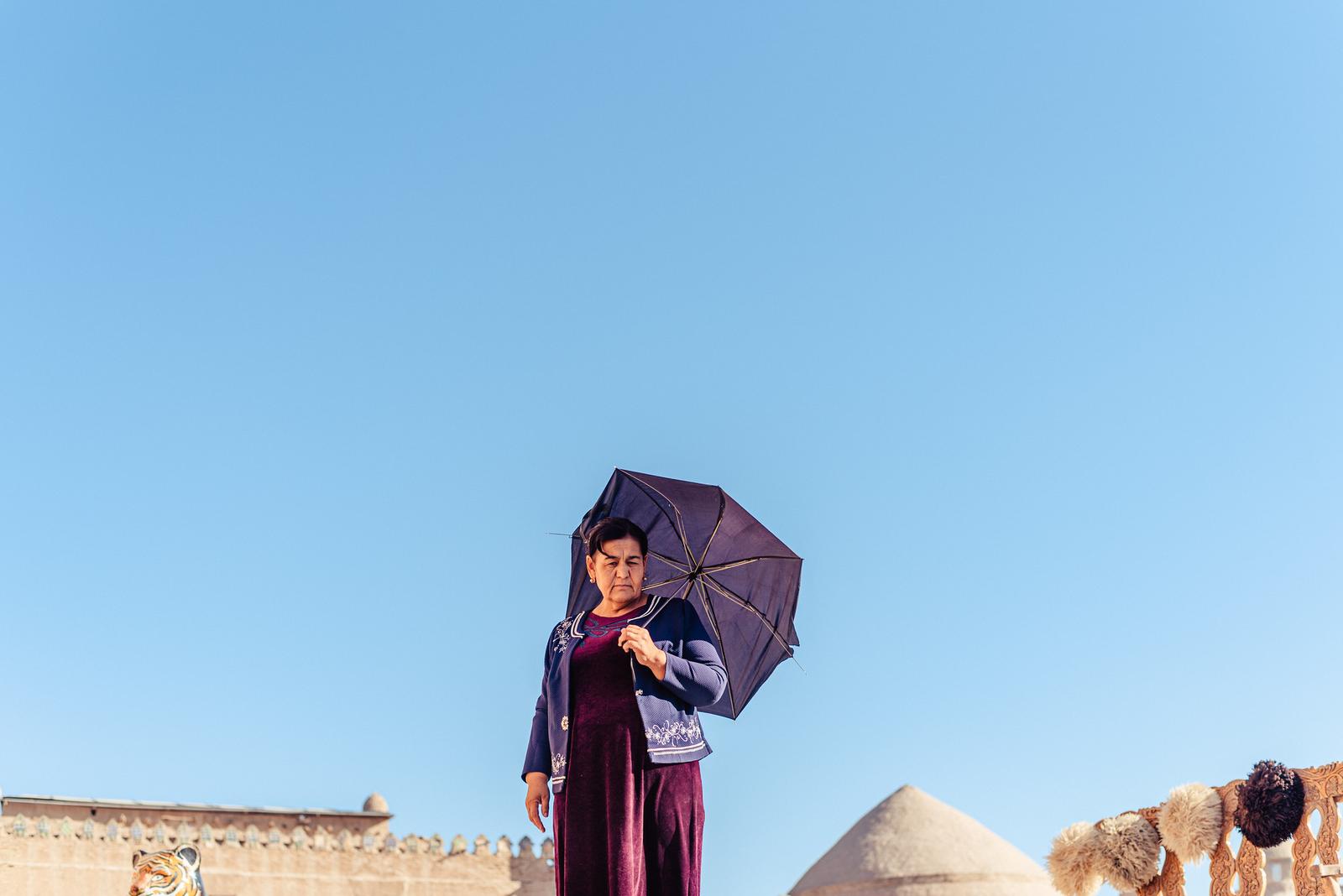
A public folk dance and music performance was a generous gift from the city to its early-bird visitors, that not a single person could have refrained from shaking their body to the playful beats. Gradually the crowd all gathered to make it a small partying time in the large courtyard.
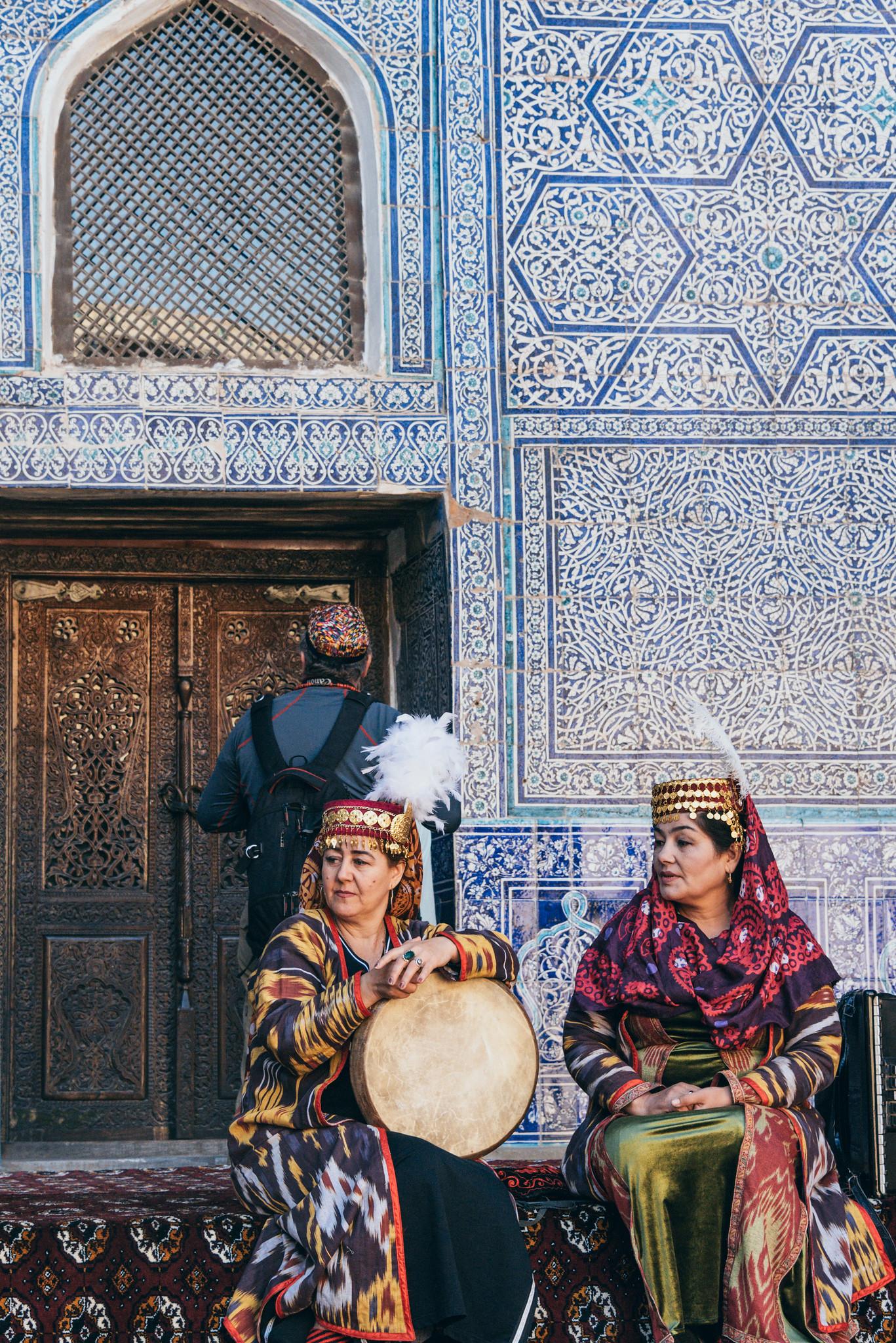
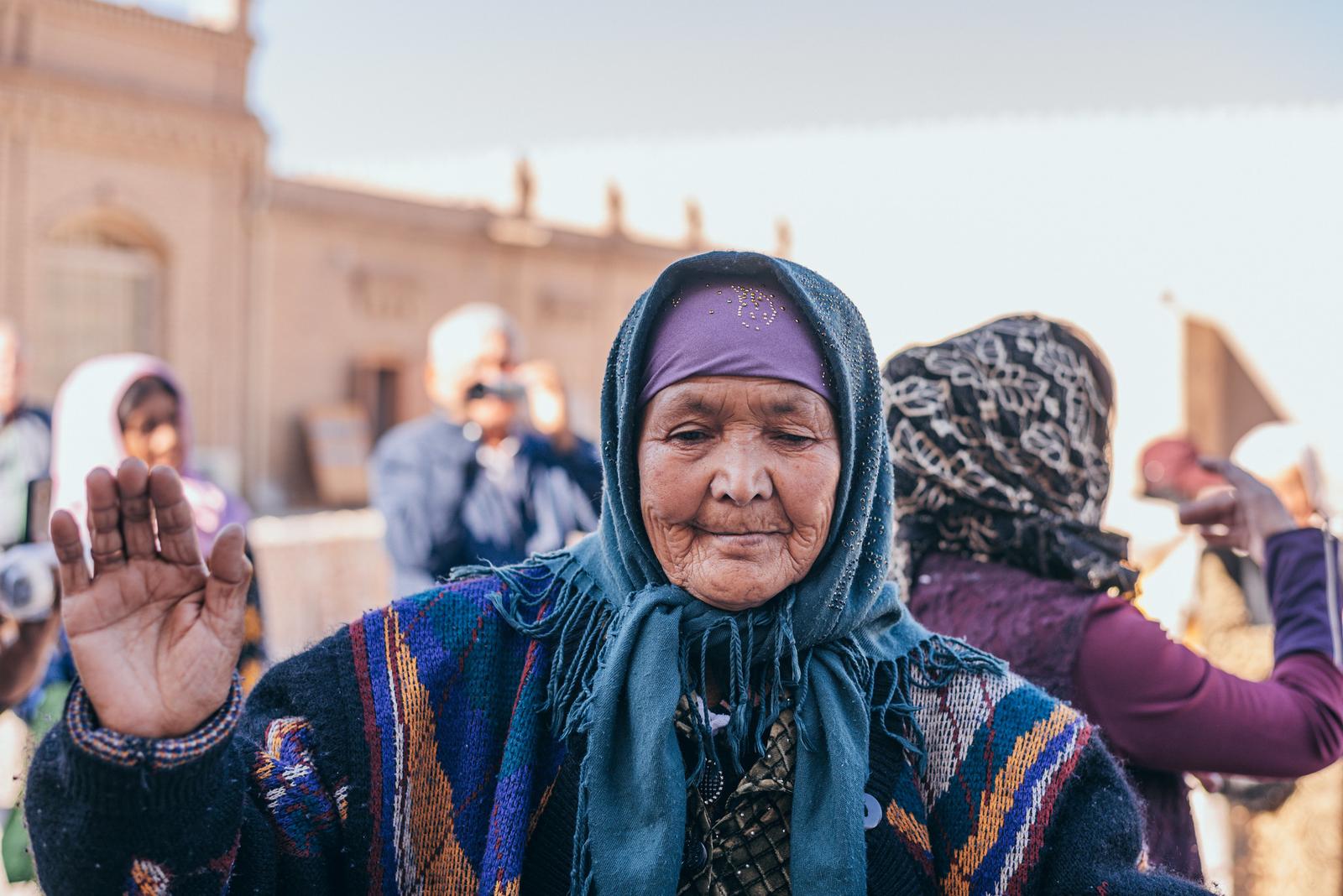
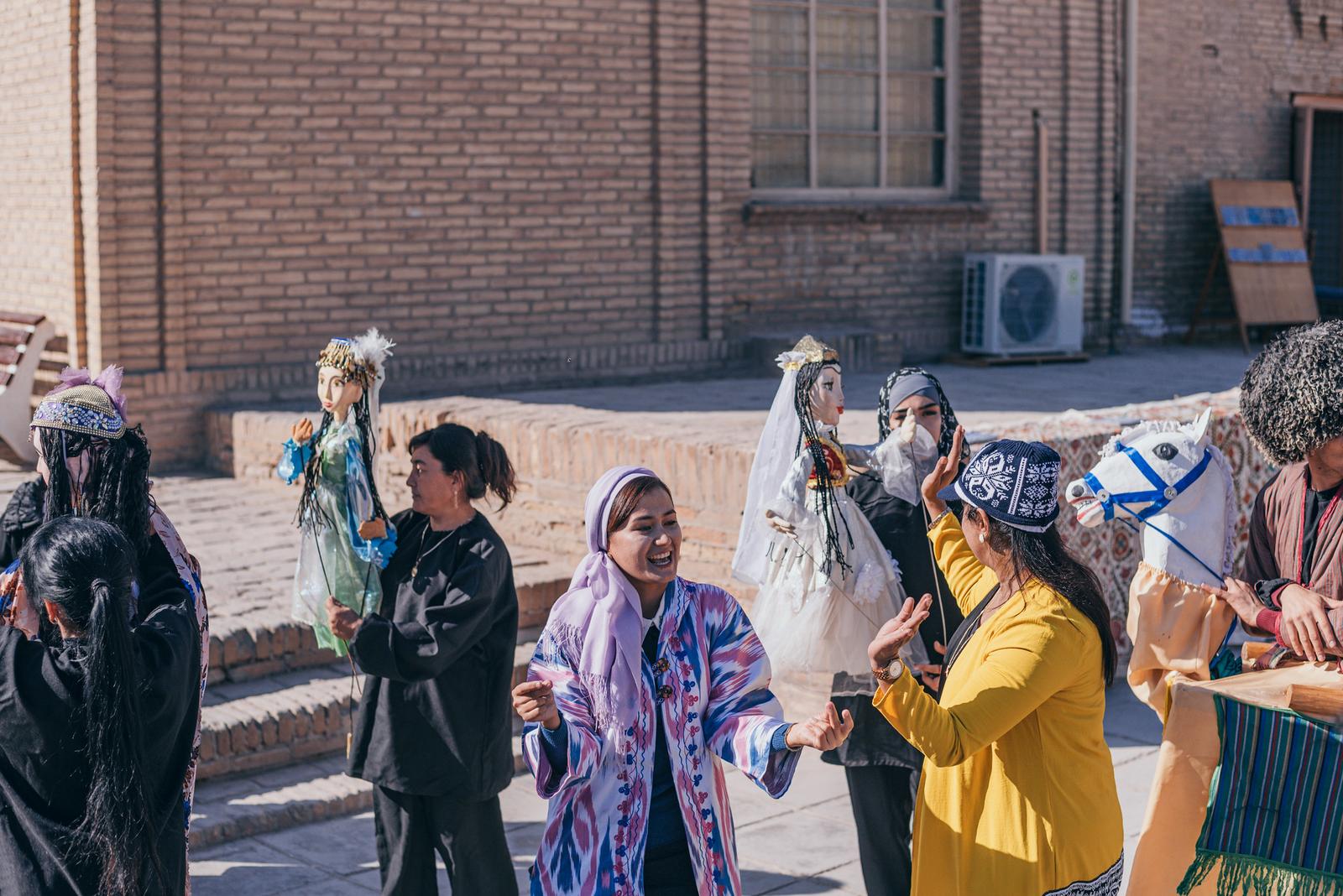
I guess it’s a happy day that I could see it on everyone’s face. Every strangers were so familiar.
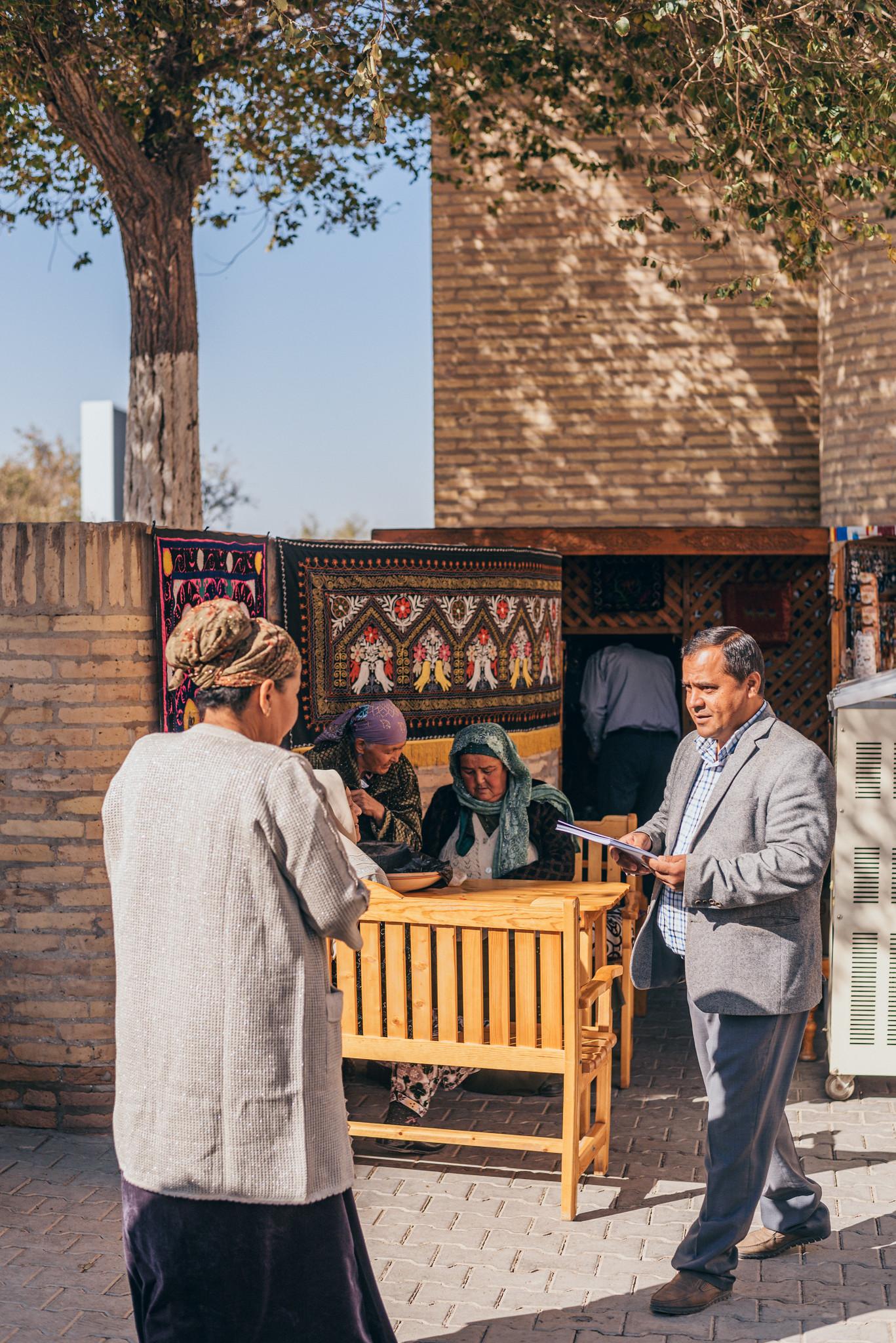
I couldn’t remember how many wedding proceedings encountered on the street that day, but it should be a day of fortune, or Khiva was a romantic site regardless of its brutal history as the hub of enslaved human, raids and harsh desert journey.
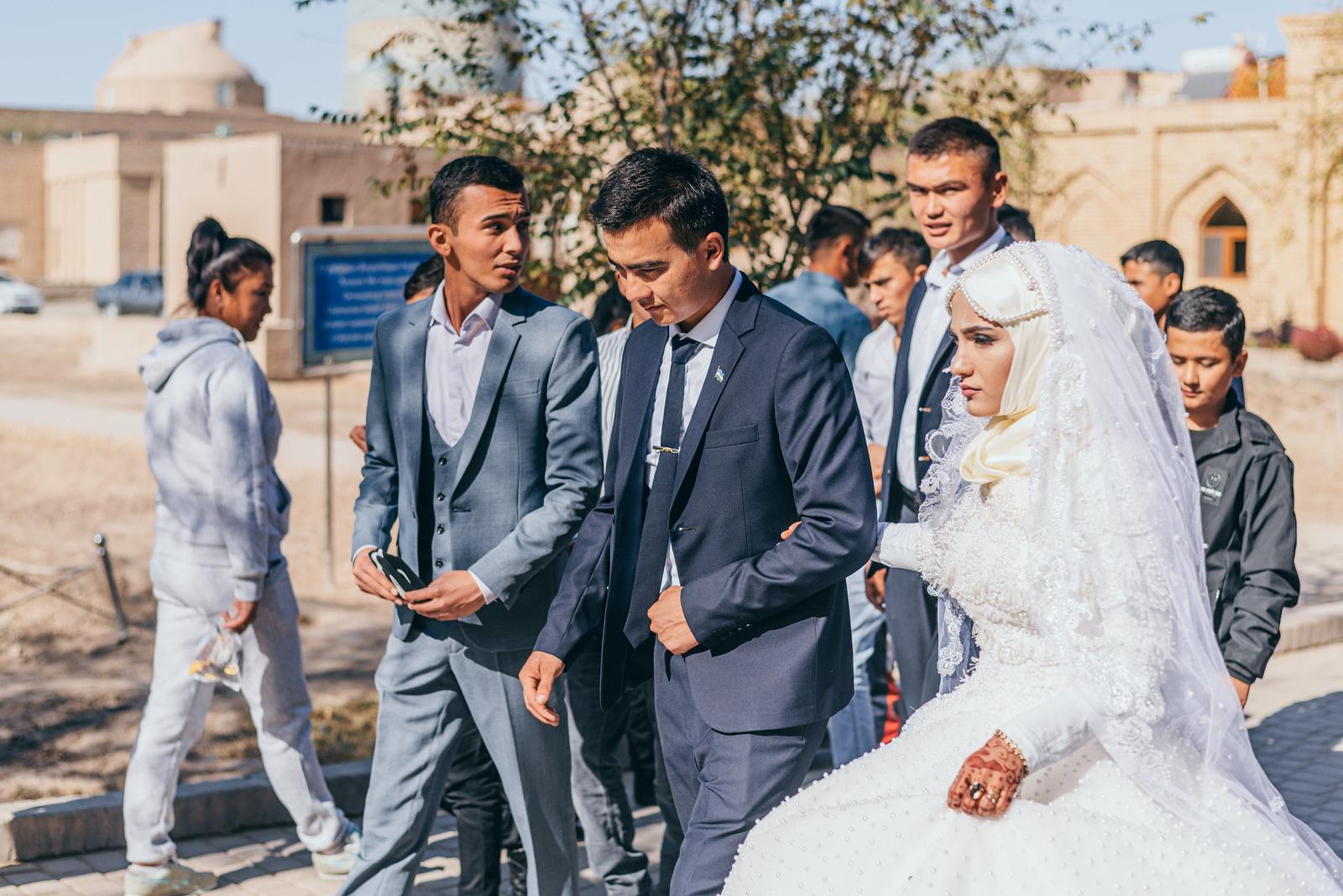
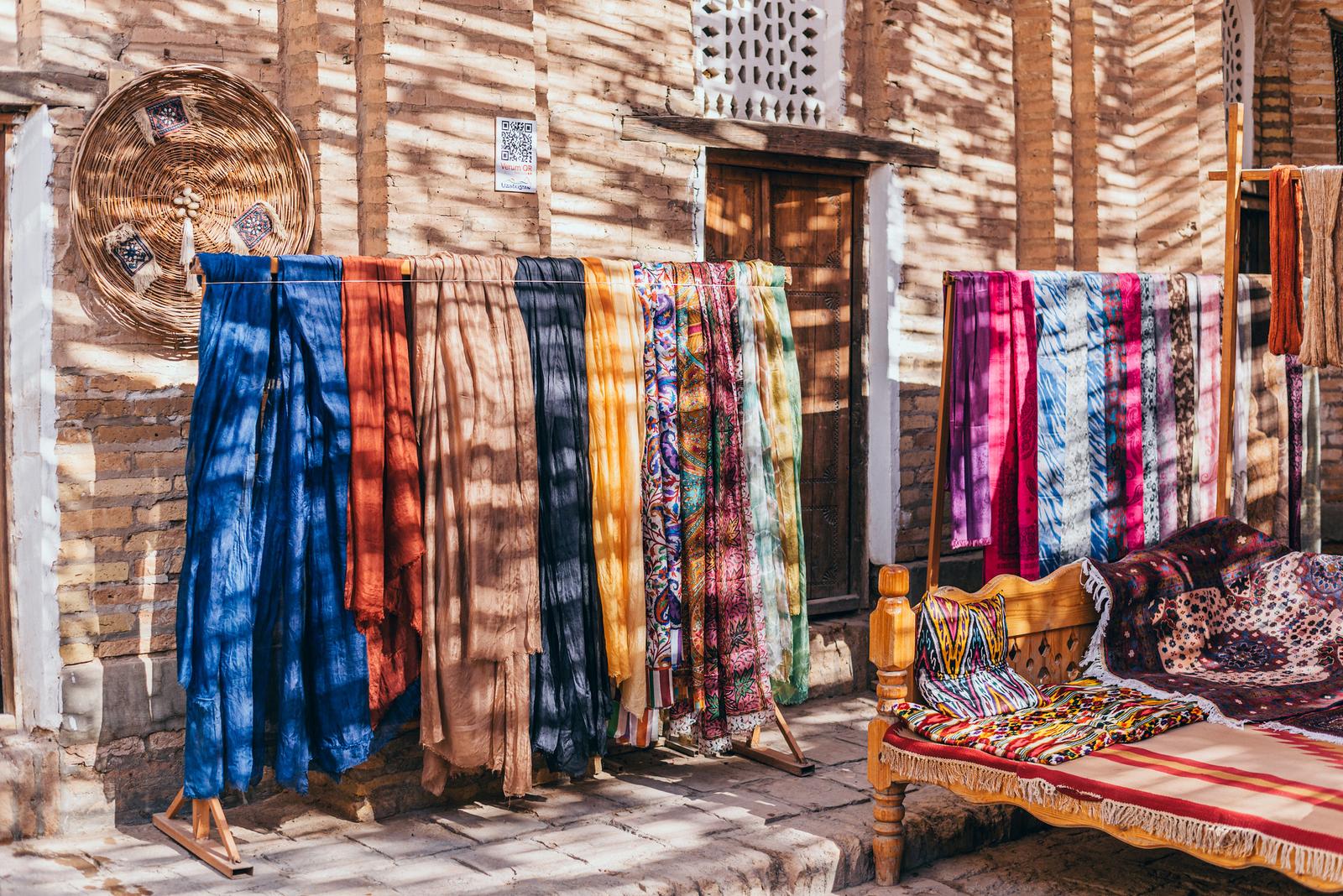
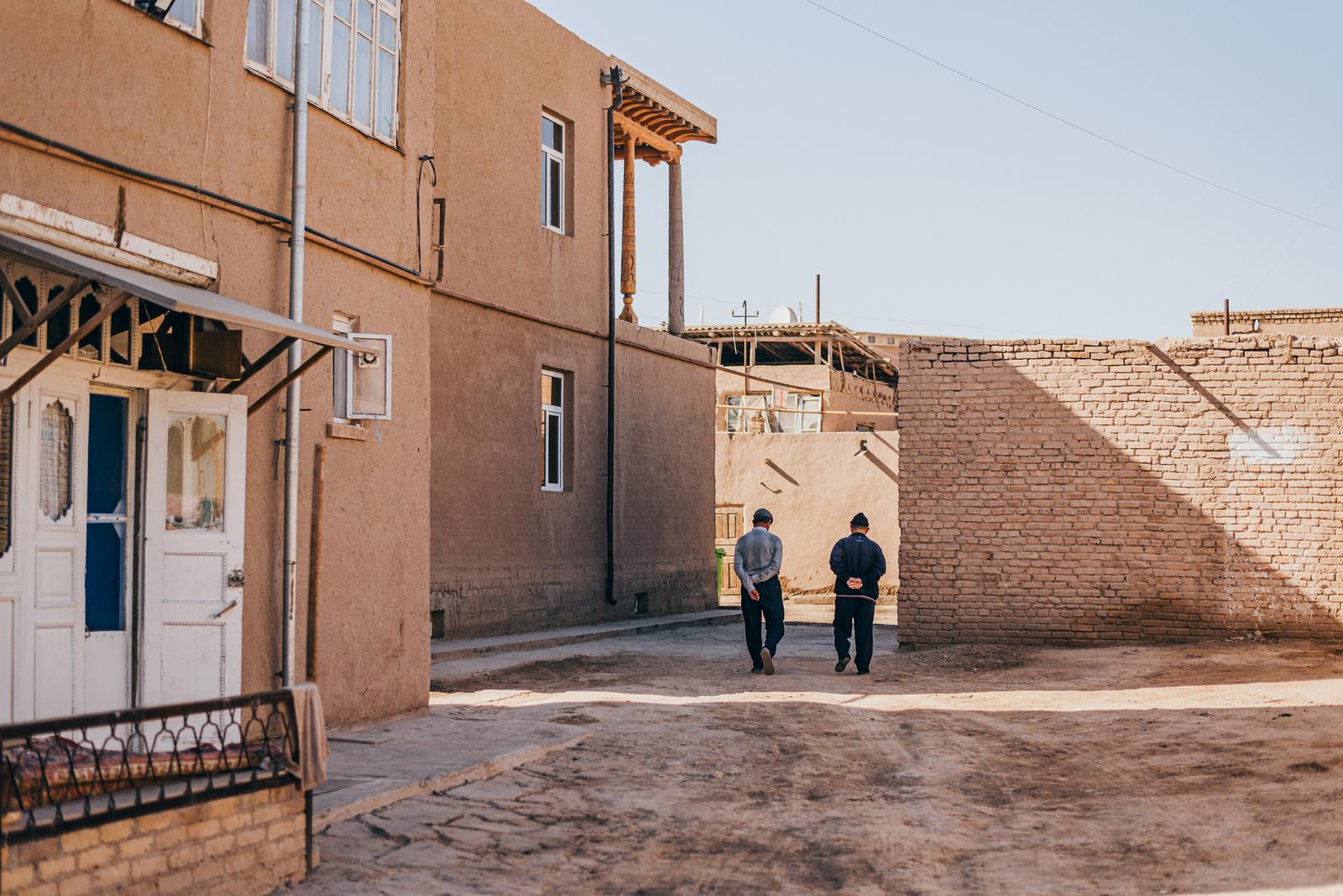
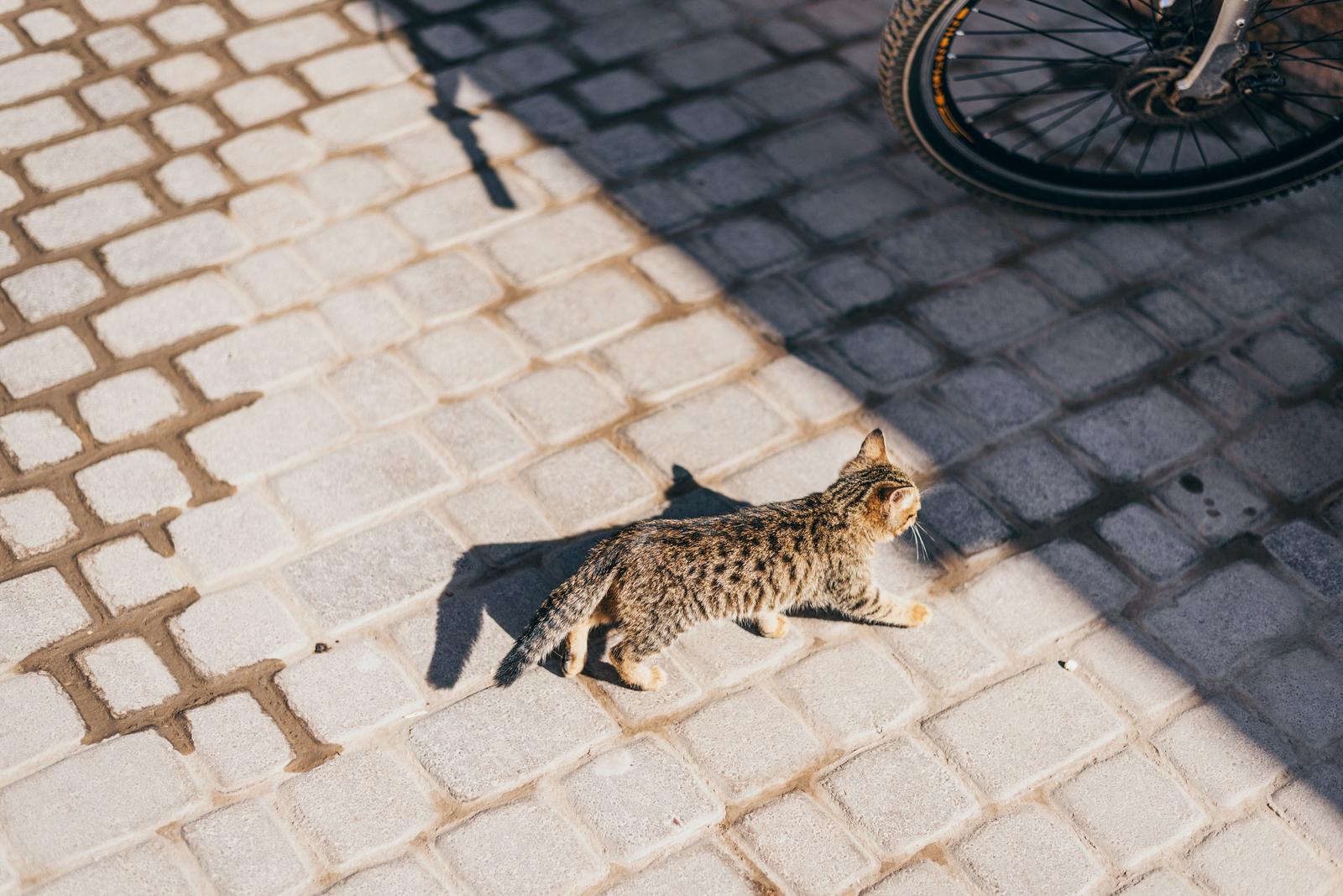
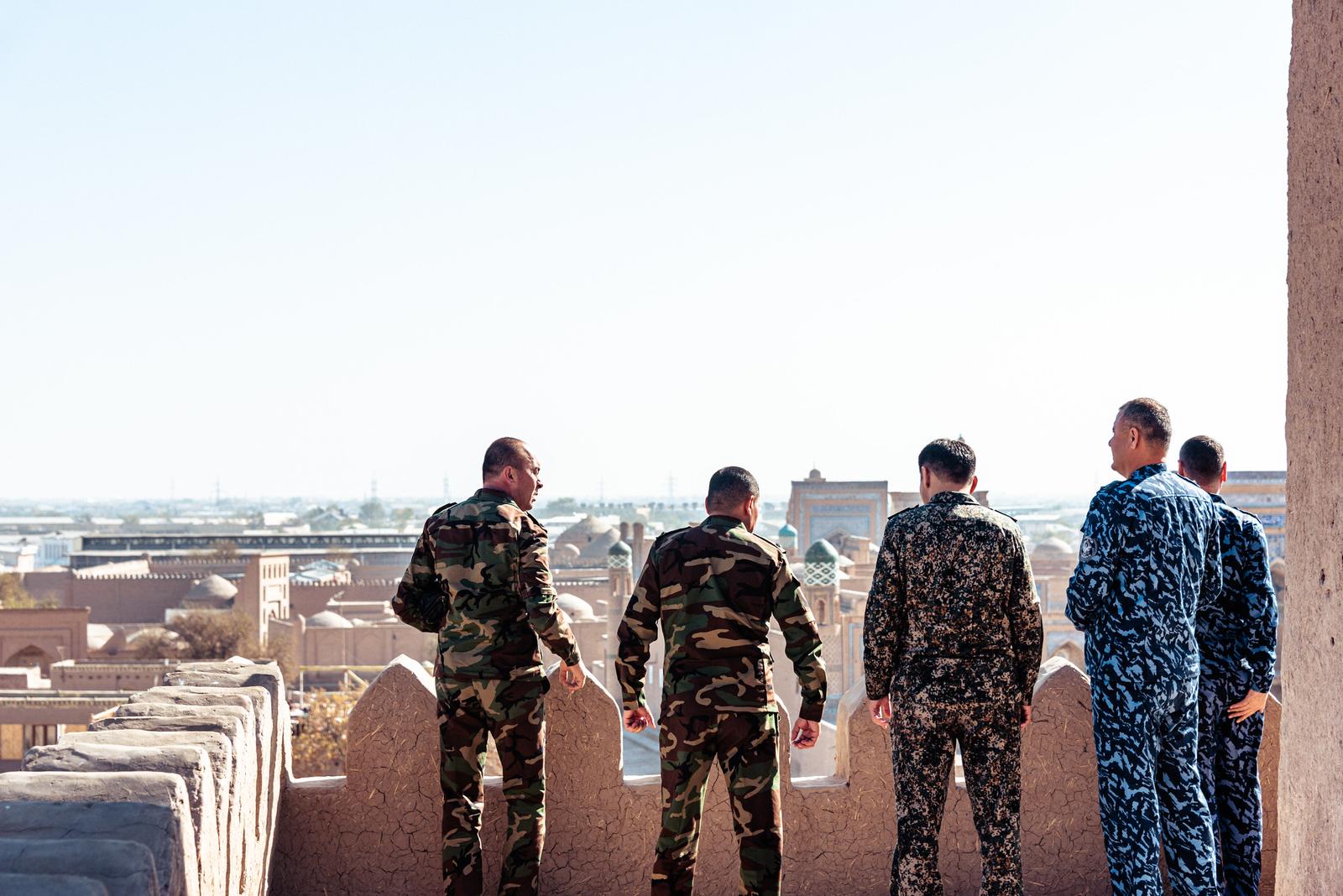
Theatrical Play of the Sun
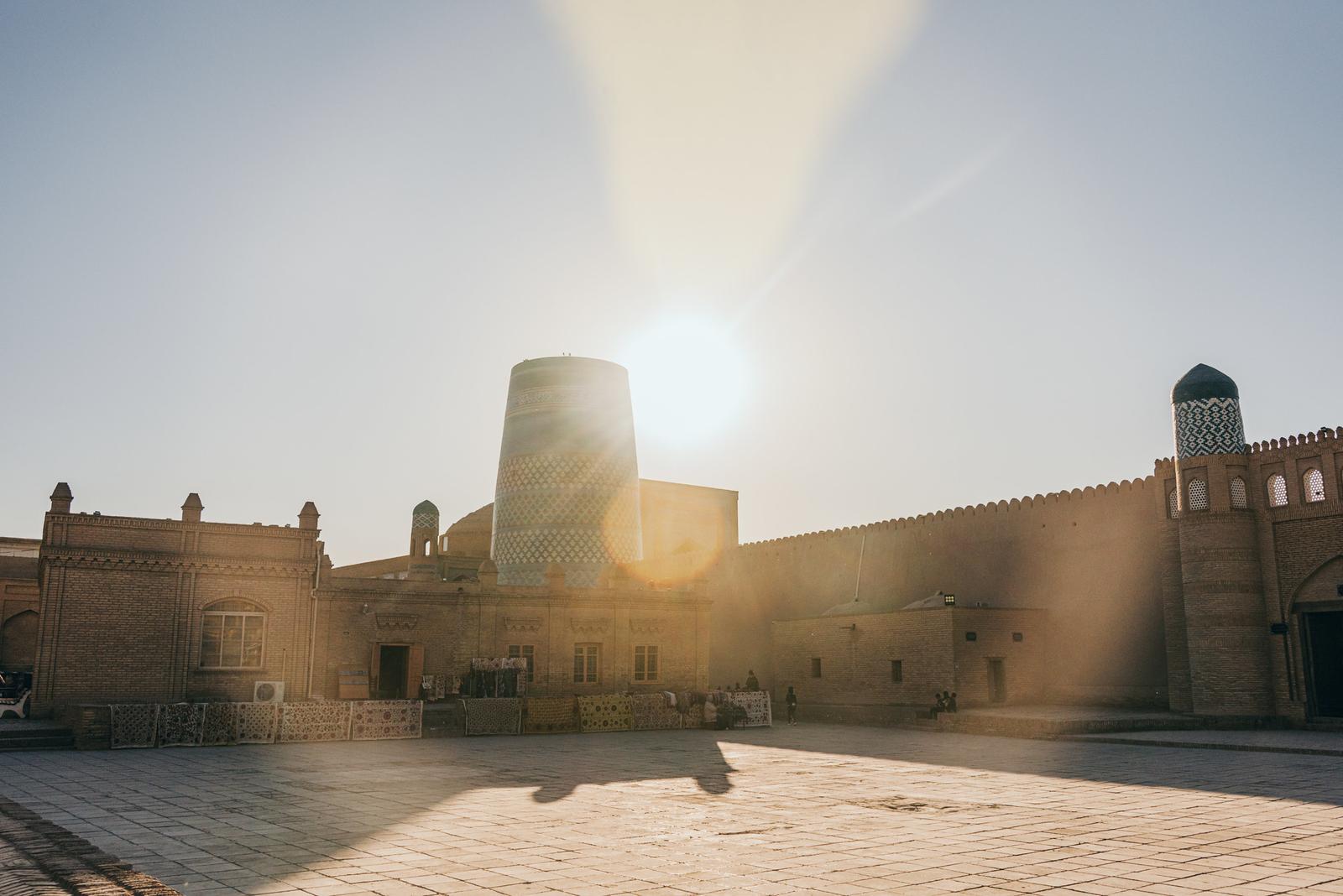
Well until this point I hope that you still keep up with the long scrolling, and are patient enough for the most important exhibition, the Khiva sunset. A day should always end with glorious dusk, and the proudest part should be deferred to the end.
Some may say you waste time coming to the Ark Watchtower too early, but it’s always the wisest choice to settle yourself down and choose the best spot for photoshooting. A well-done meal requires careful preparation.
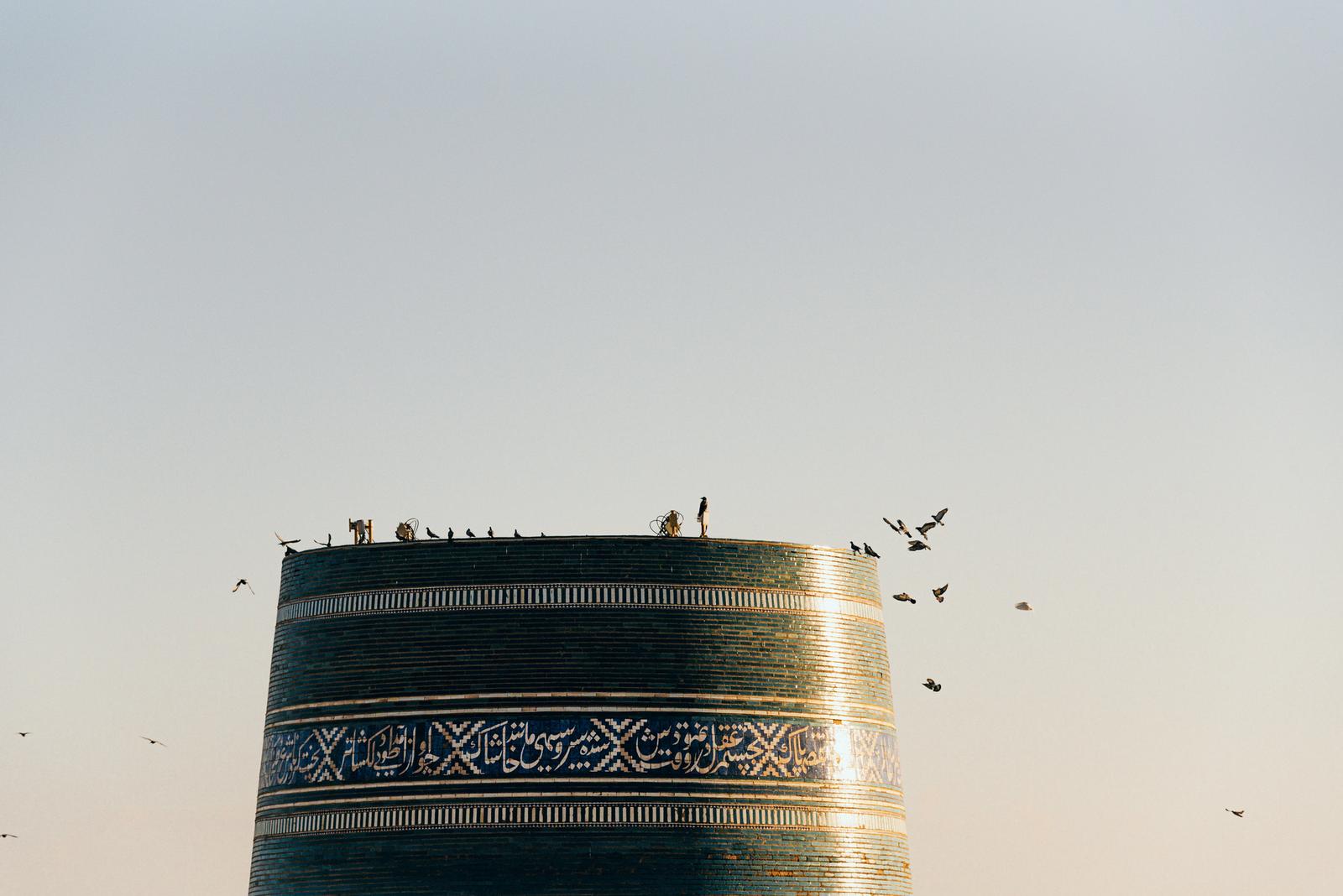
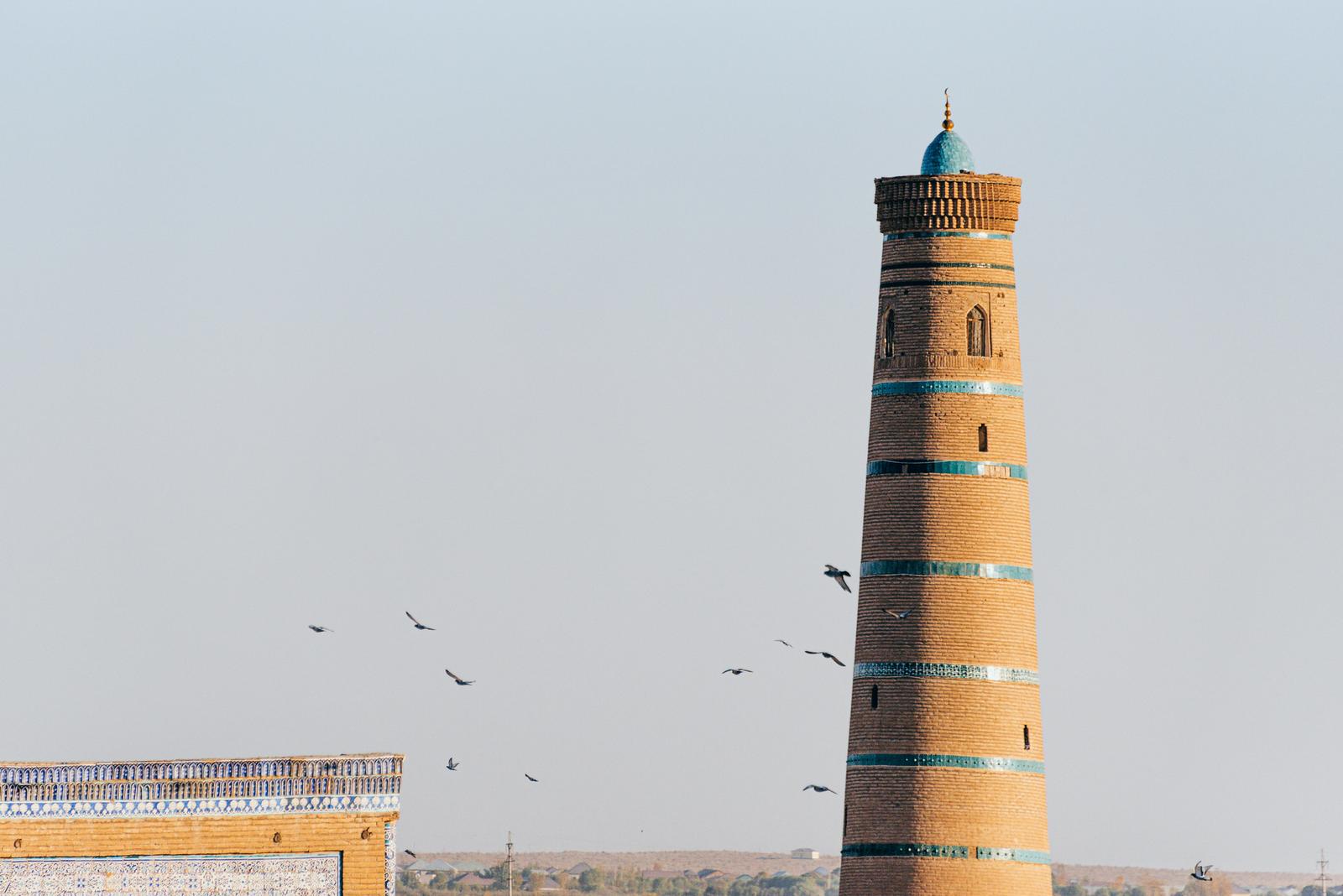
The first hour was actually a feast for me the soloist, just a few shared the same idea of coming up ahead of time. As the sun was descending, people flocked to the tower, all were eager to see the sun play its magic.
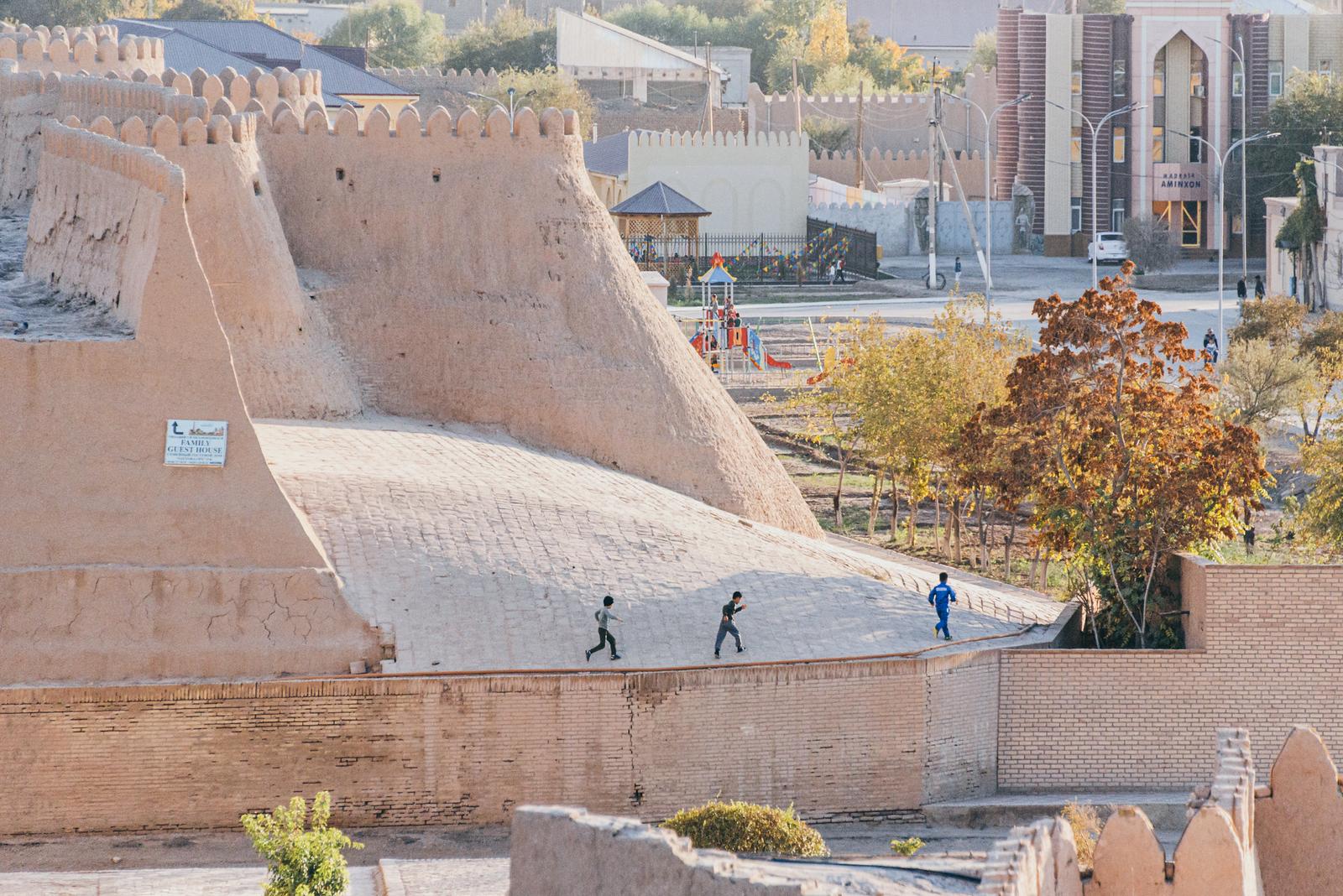
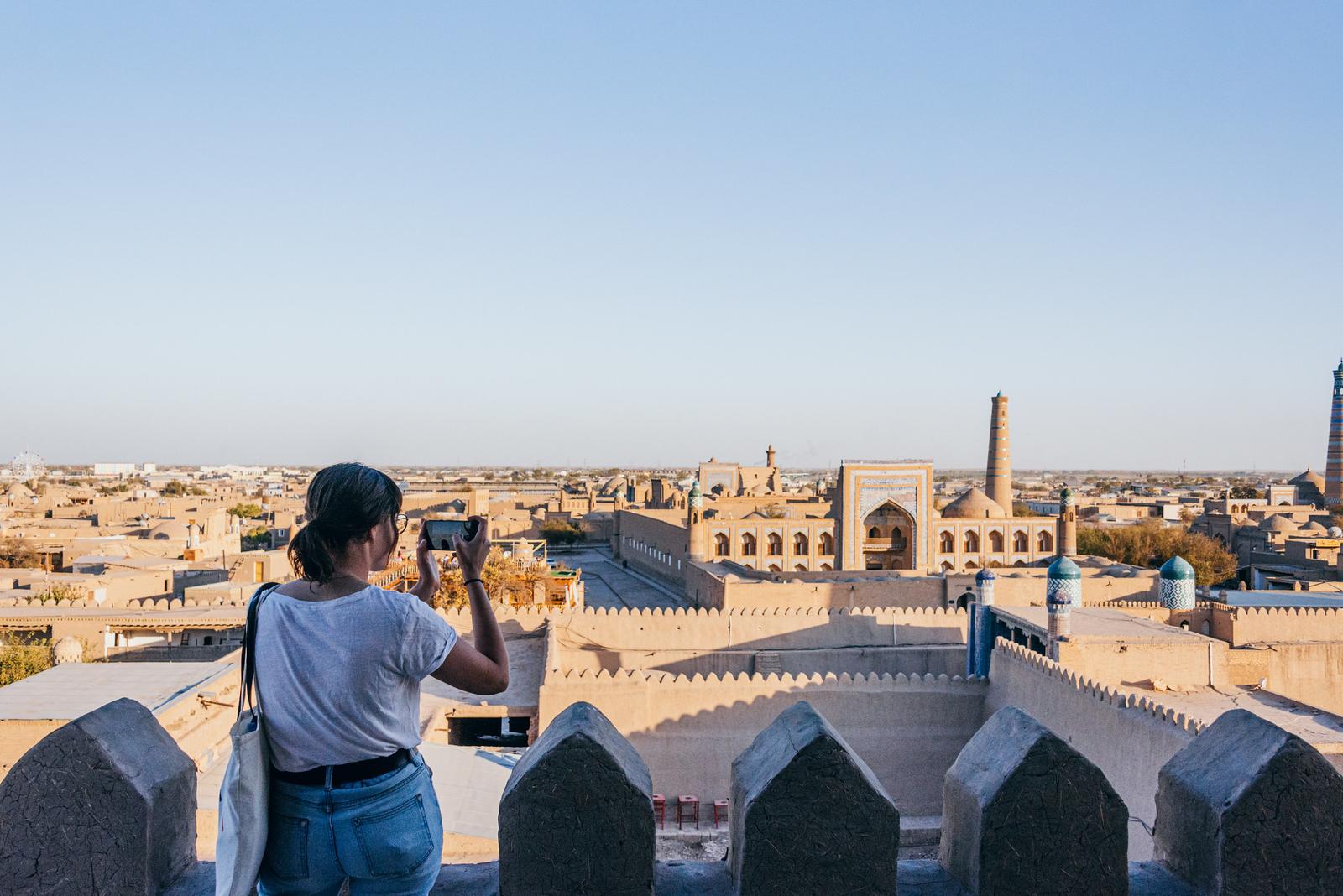
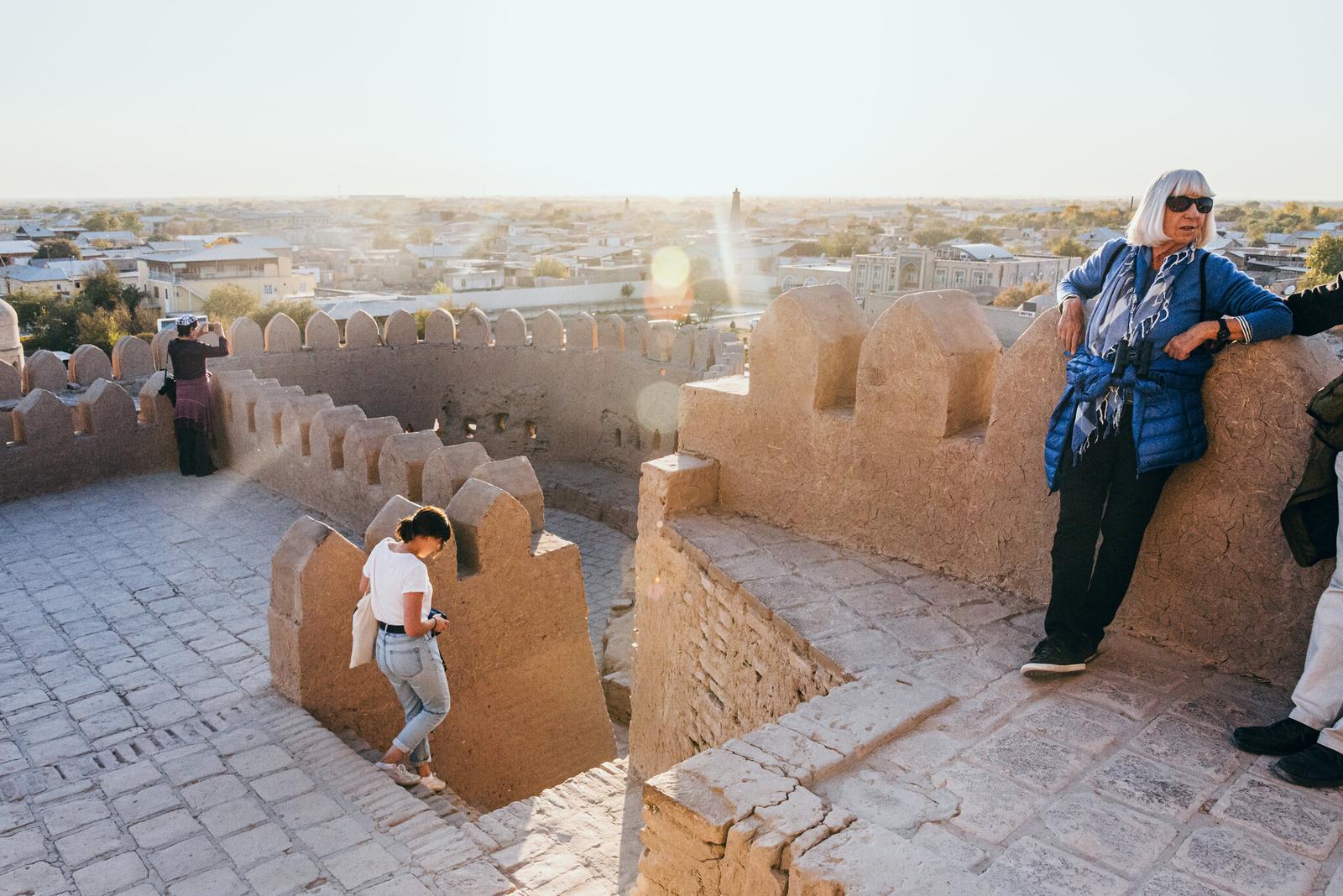
Things became miniatures, and the tranquillity of Khiva created many negative spaces for the pictures, so viewer could really feel its actual pace right on the screen.
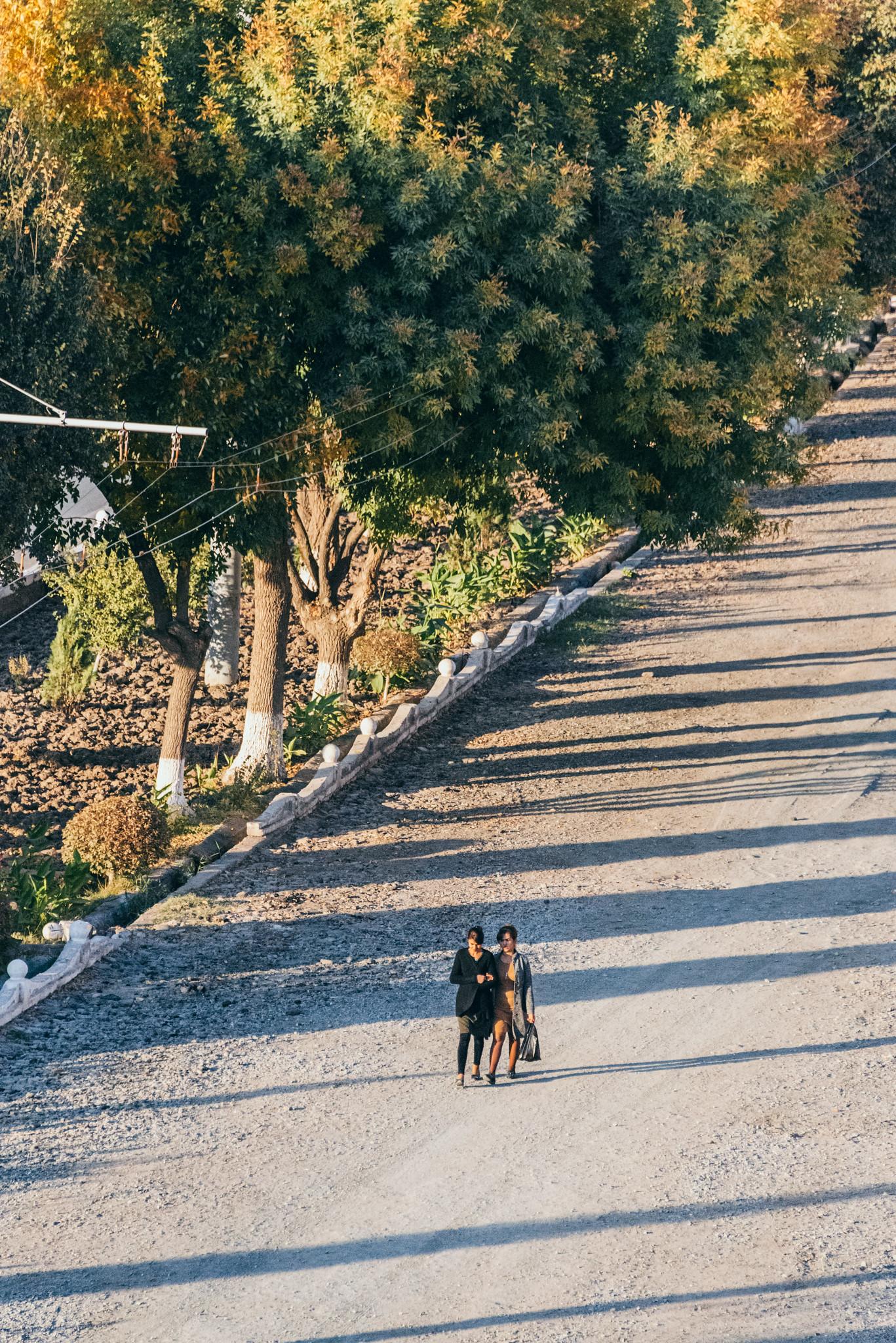
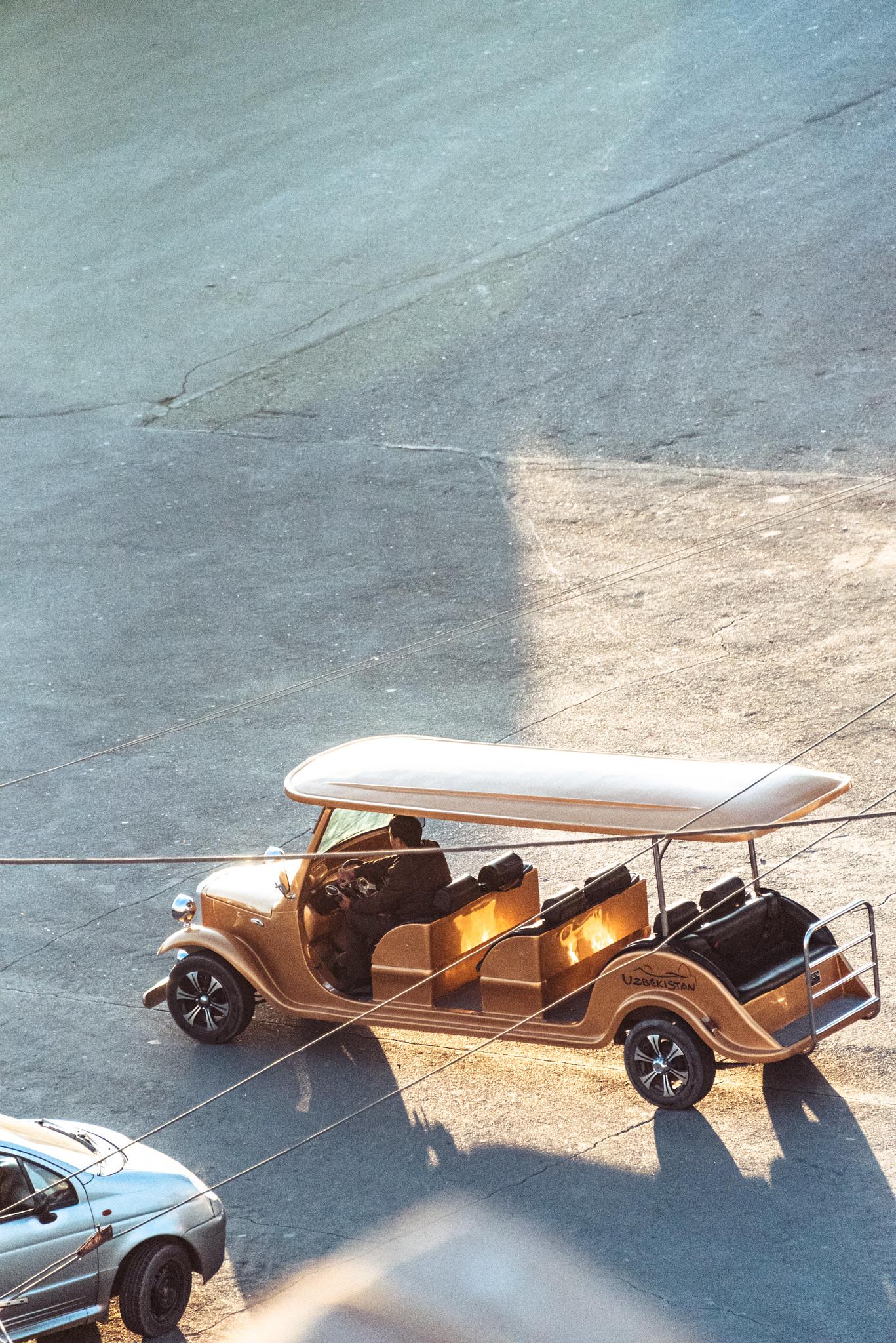
Although I had anticipated a great sunset time, I couldn’t have figured out how beautiful it could be. At the exact amount of ingredients, from dusty air that created soft overlapping layers, leaves turning into sweet gold colors, stainless sky with flocking birds weaving the dancing patterns, the scene was one of the most fierce contenders for the best sunset I had ever experienced.
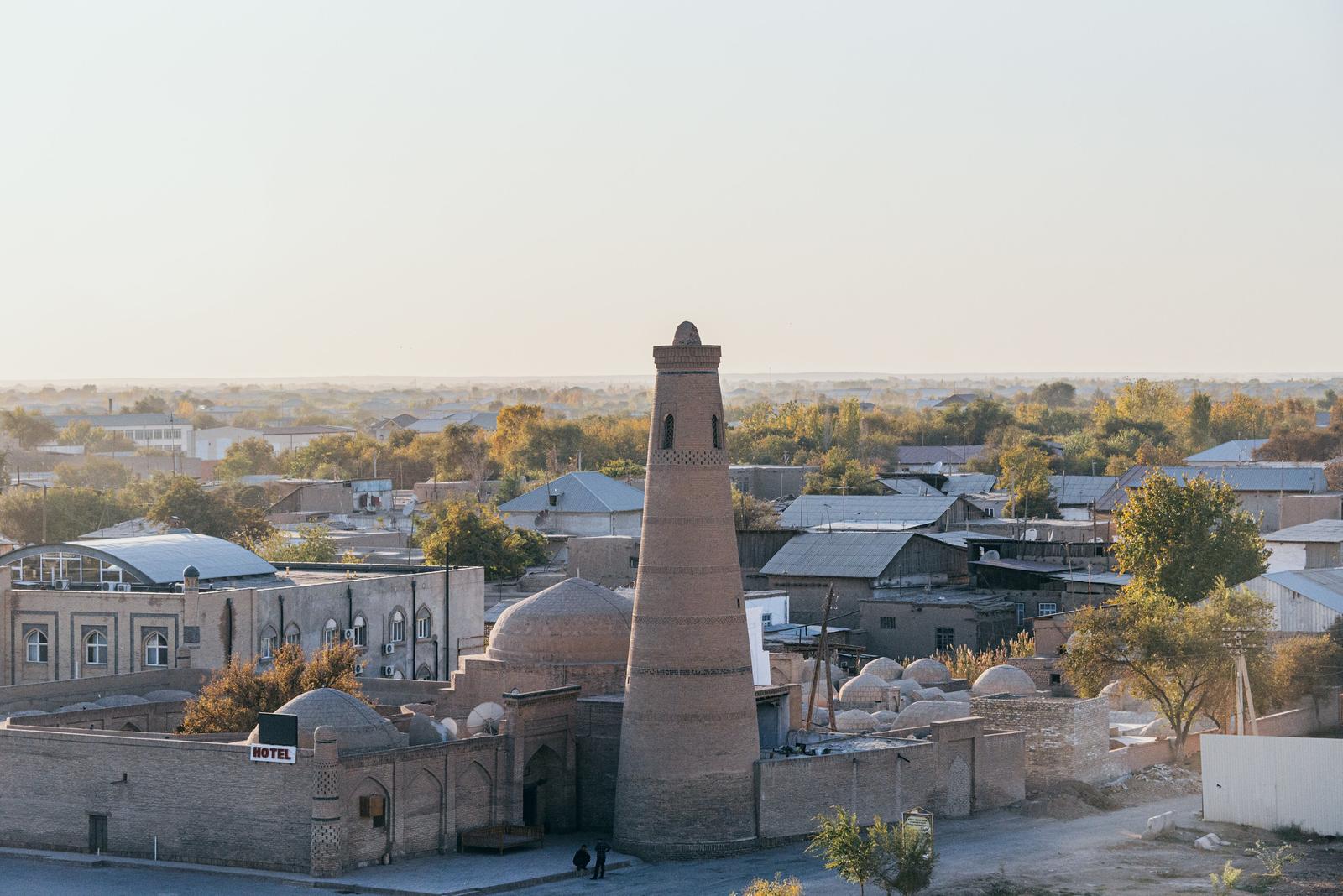
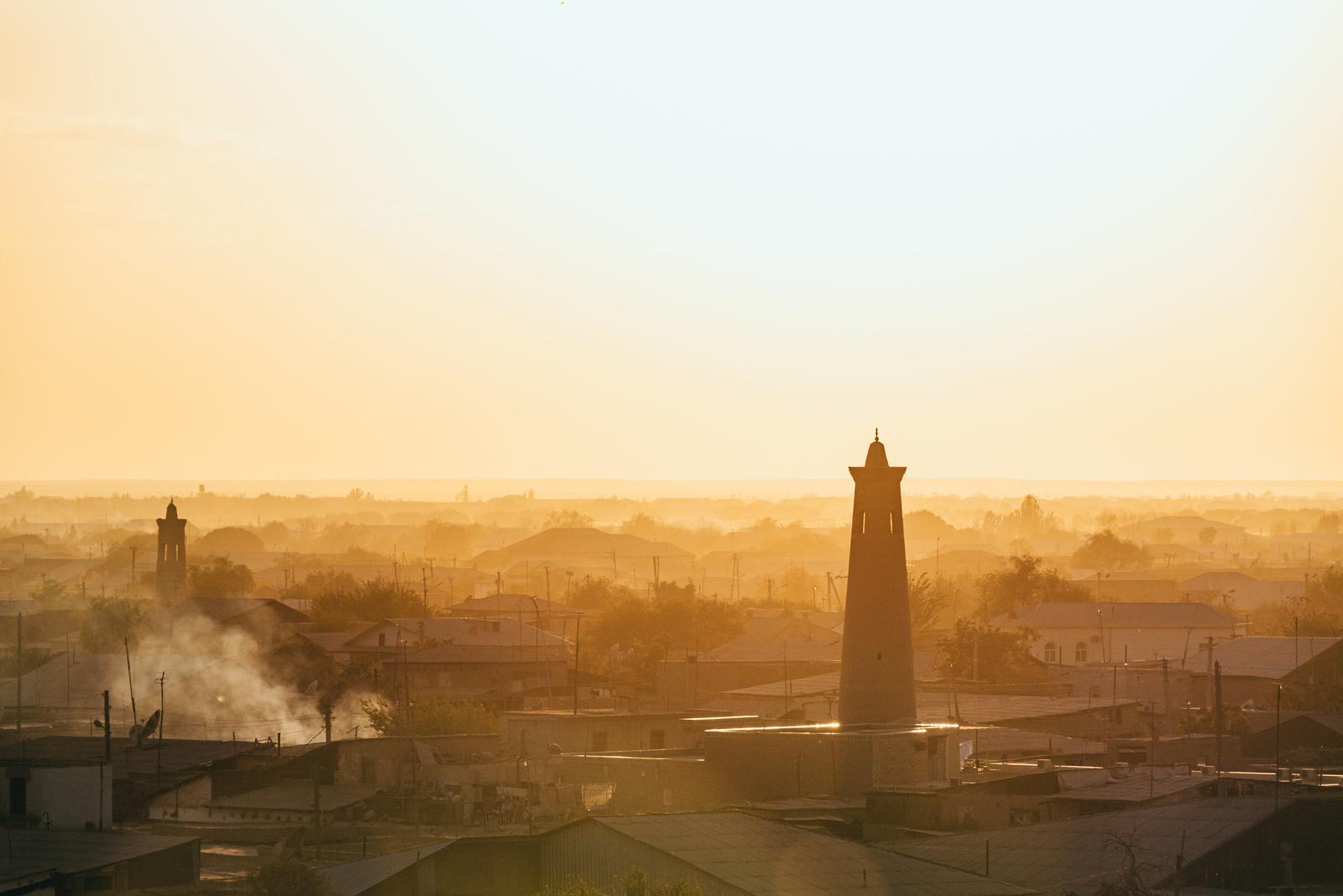
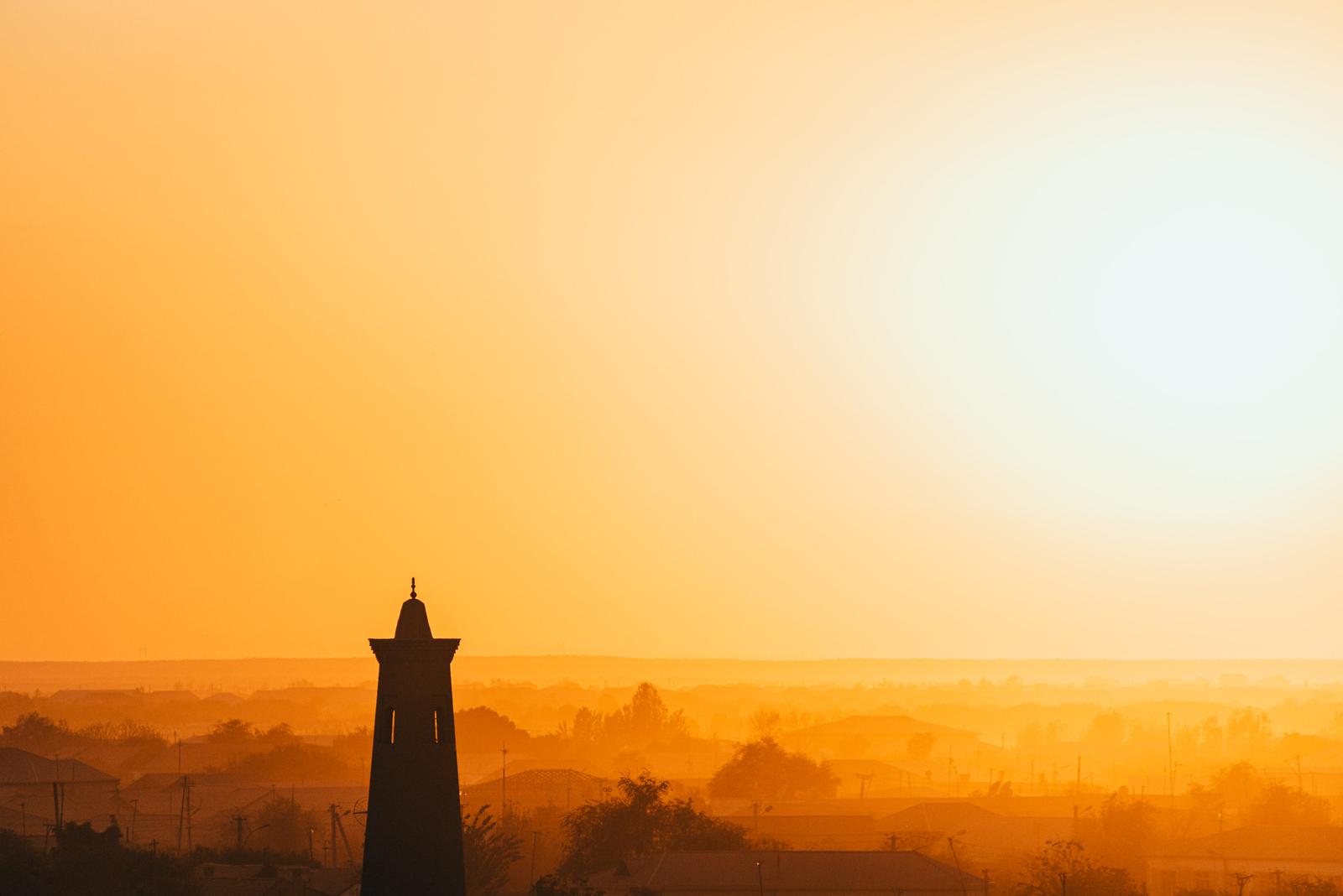
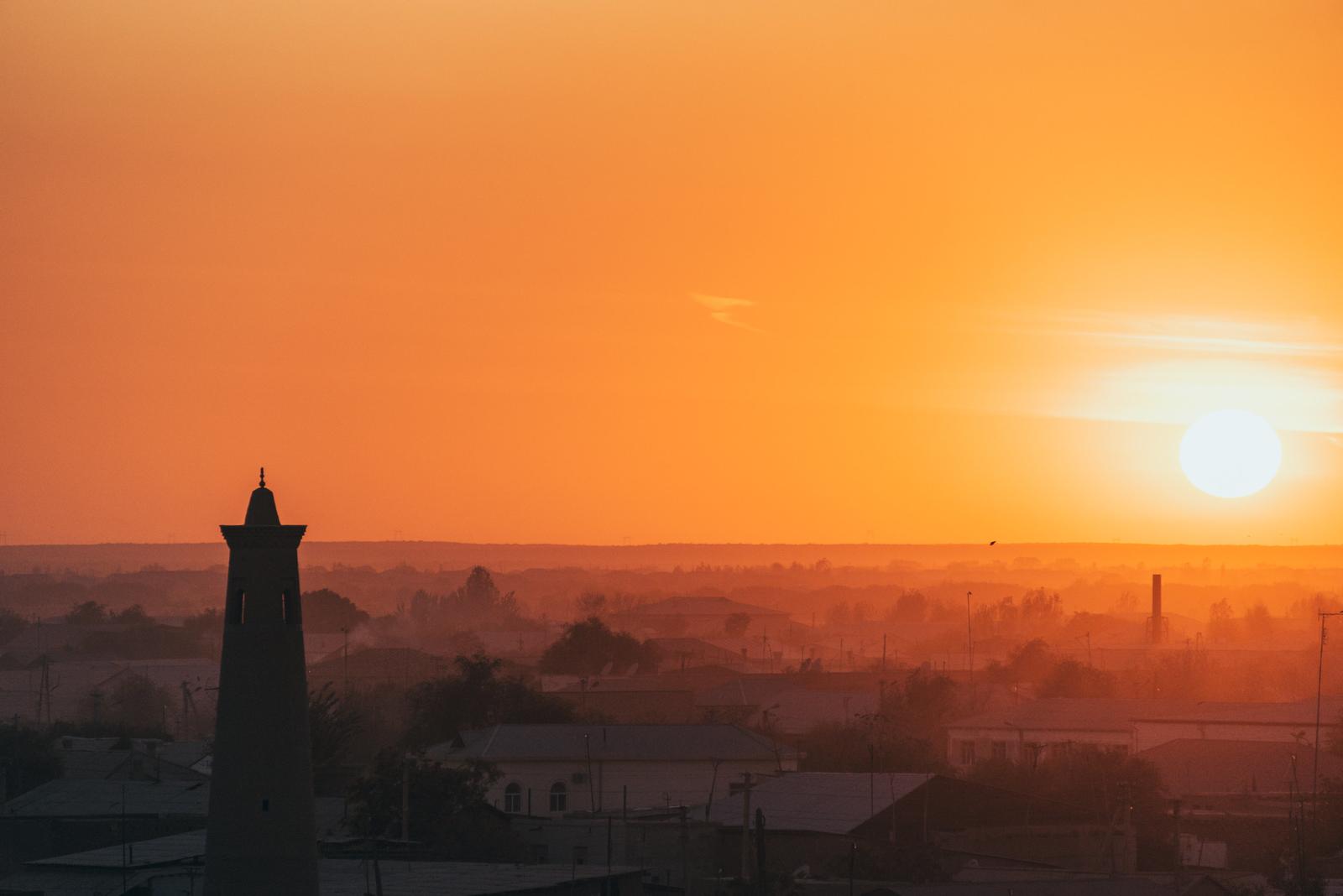
Those Khiva photos capturing towards the outside west of Itchan Kala have been featured in many of my showcased posts, especially on the cover of my Uzbekistan photobook. A parent is proud of his children here.
And I was happy for the happiest couples on Earth at that time.
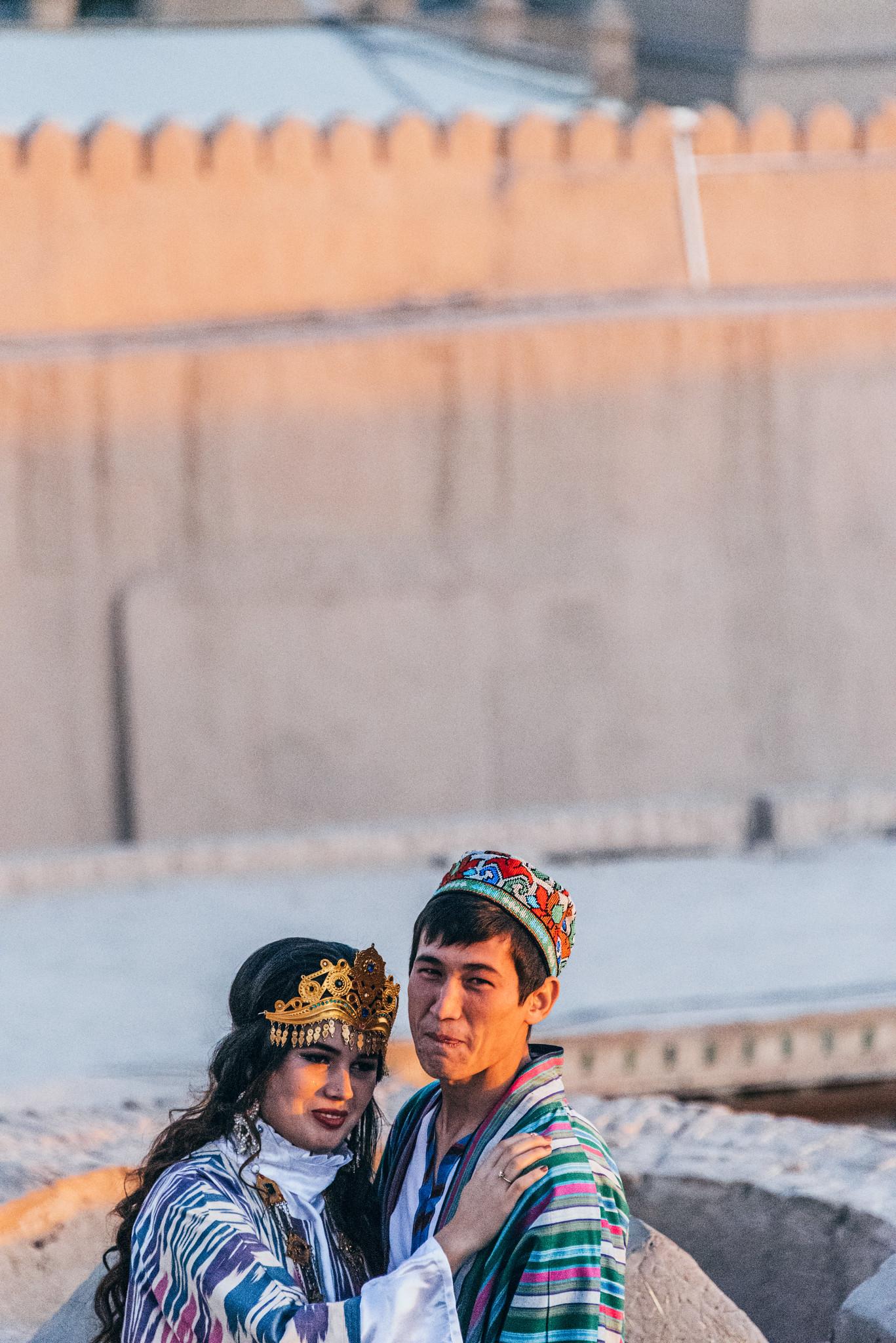
It’s the same as a theatrical play: tempo was gradually pushed to climax, and then spectators were left with an echoing memorable ending.
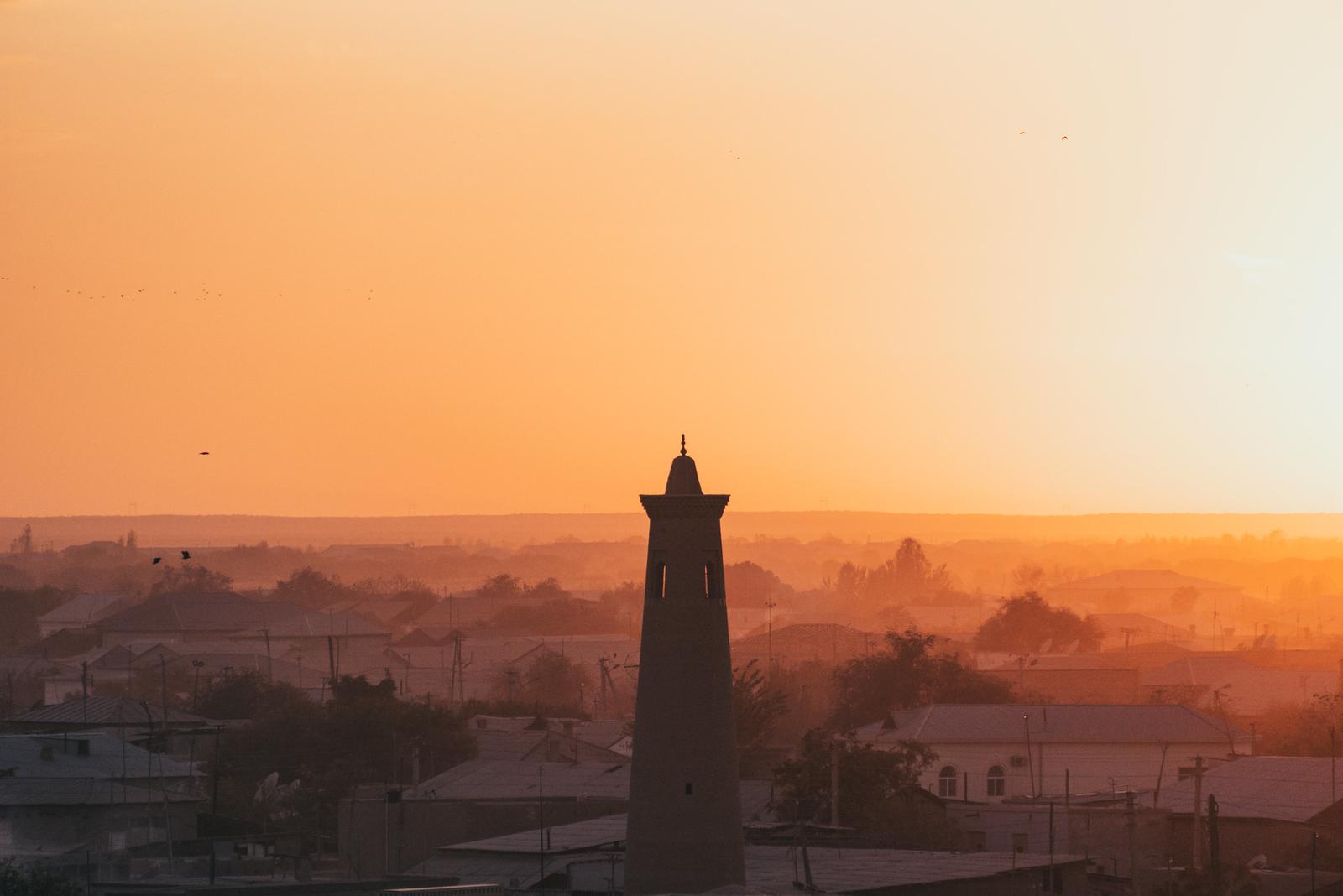
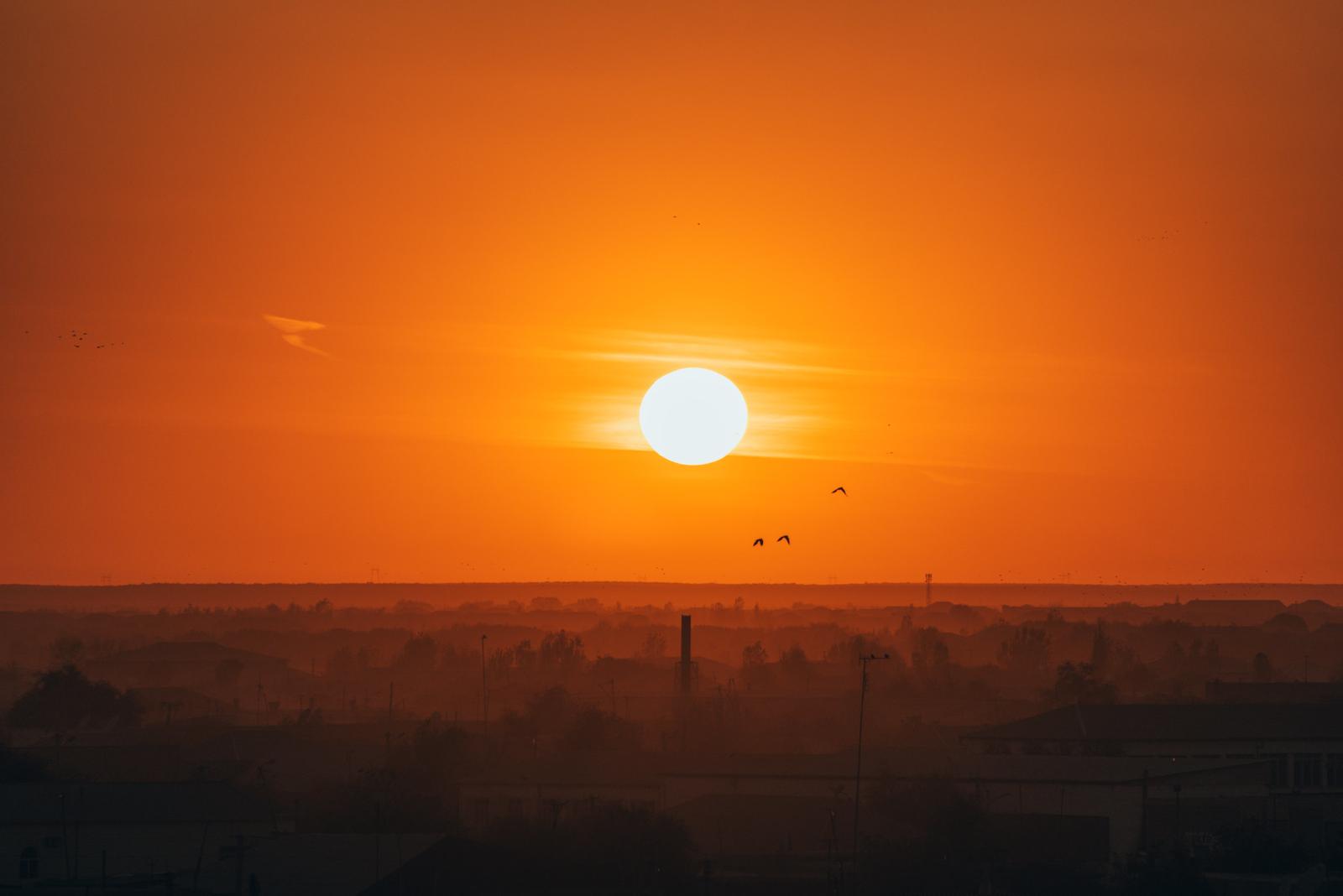
Among the last person not leaving the seat before the curtain finally closed, I could take some deep breath and challenge my patience to hunt for the rare shots in the then-deserted watchtower.
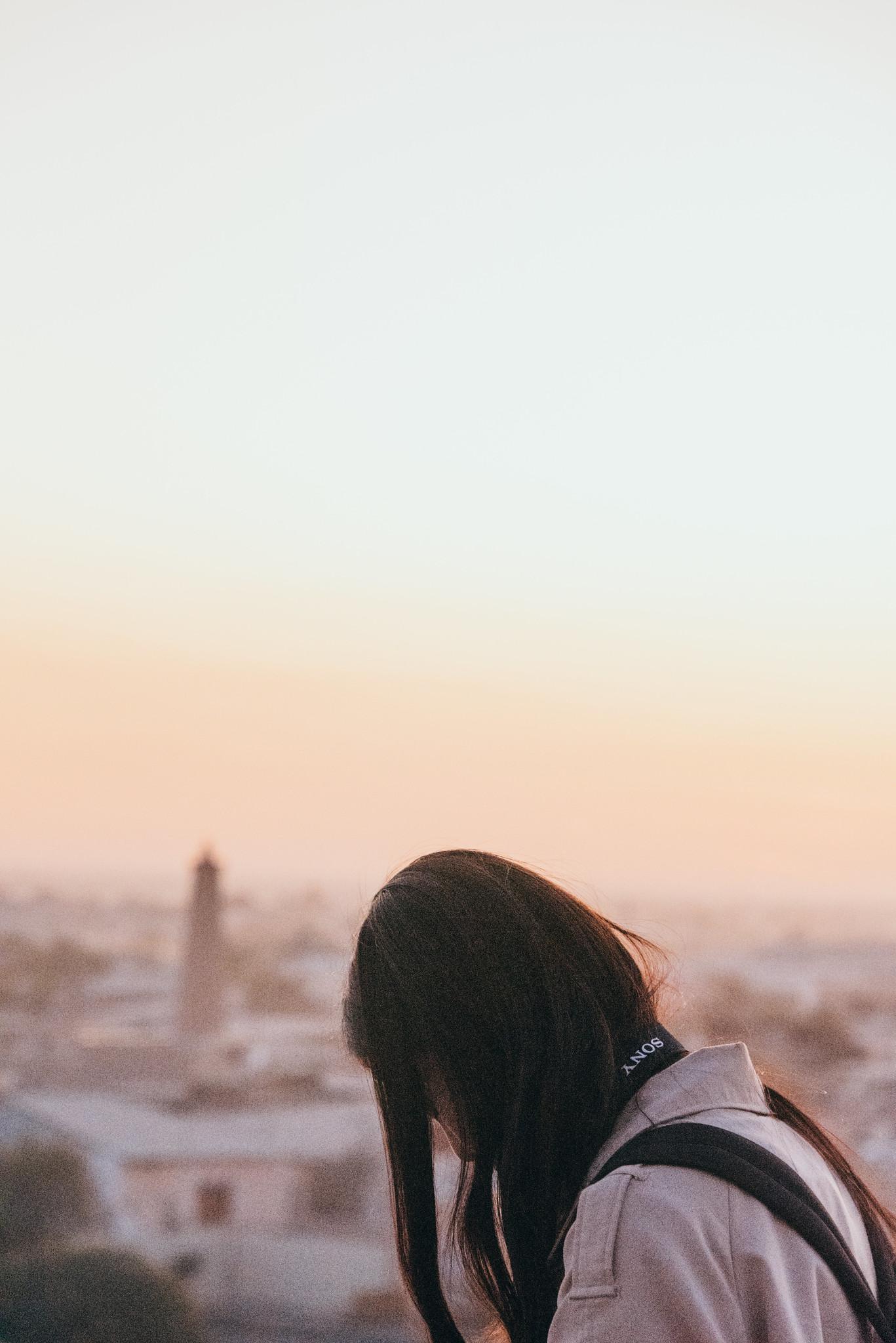
There’s no such thing better than having a hearty feast in my familiar Terrassa Cafe at balcony, making acquaintance with friends from every corner of this world, and appreciating the stunning view to Kalta Minor Minaret, after a splendid sunset.
When the curtain calls, stand up and give your longest applauding claps, even to the seemingly inanimate performers.
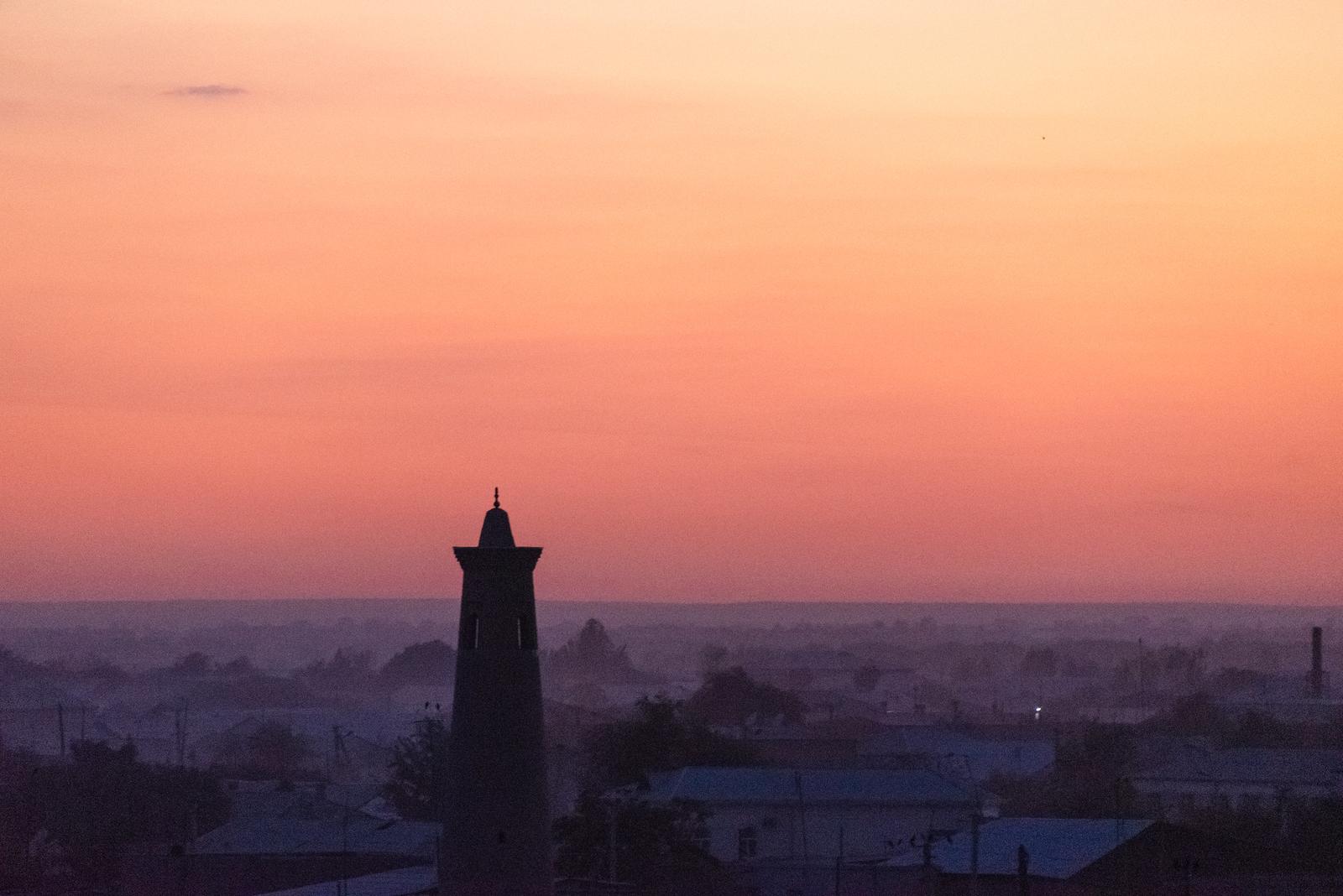
A Glorious Goodbye
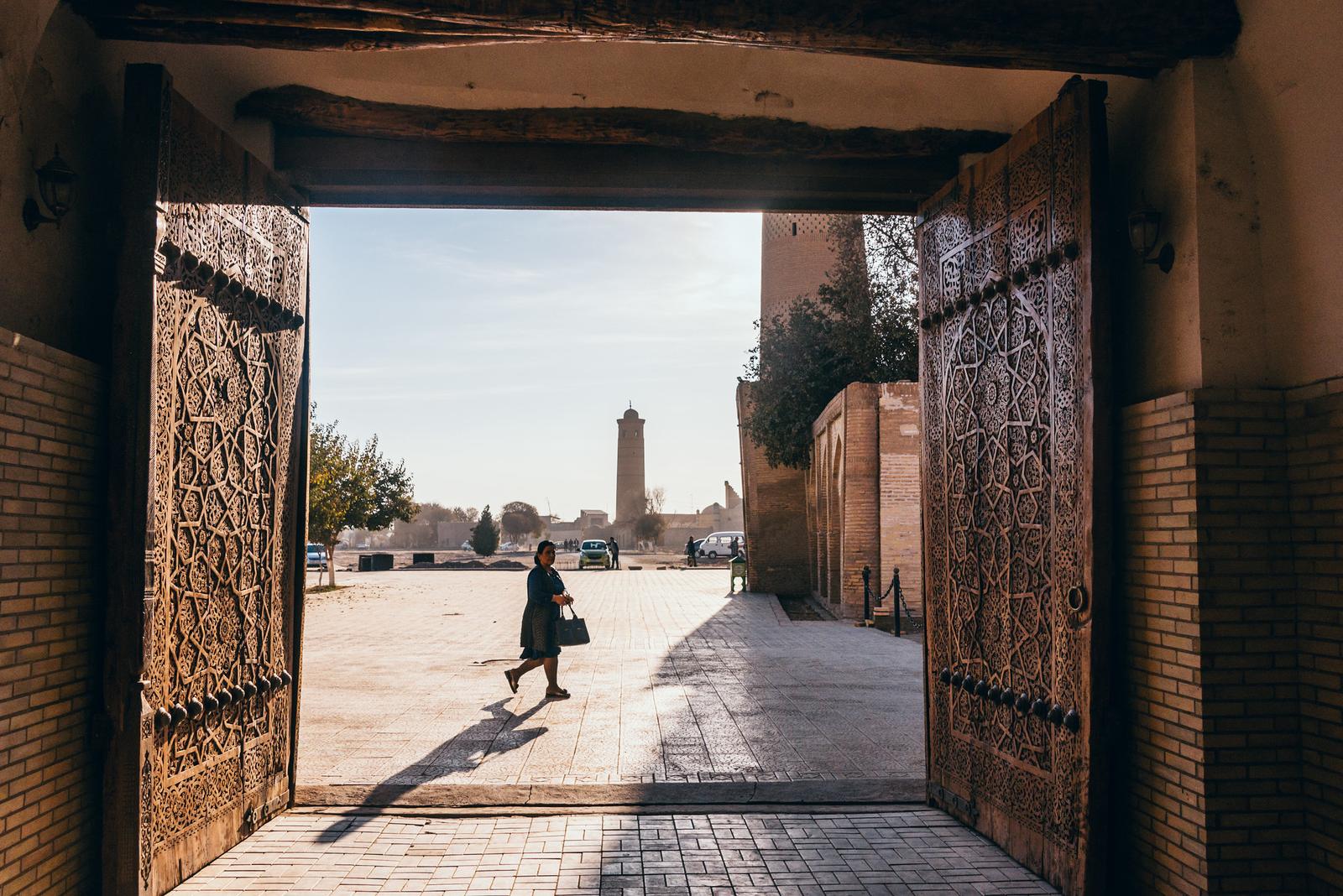
I left Khiva the next next day after day trip to Khorezm fortresses. That morning I just spent time… sitting at the park or enjoying plov and local soup for the next long trip on train at night. At the end, seeing people begin their normal day became my interest, rather than sweating out visiting as most as possible.
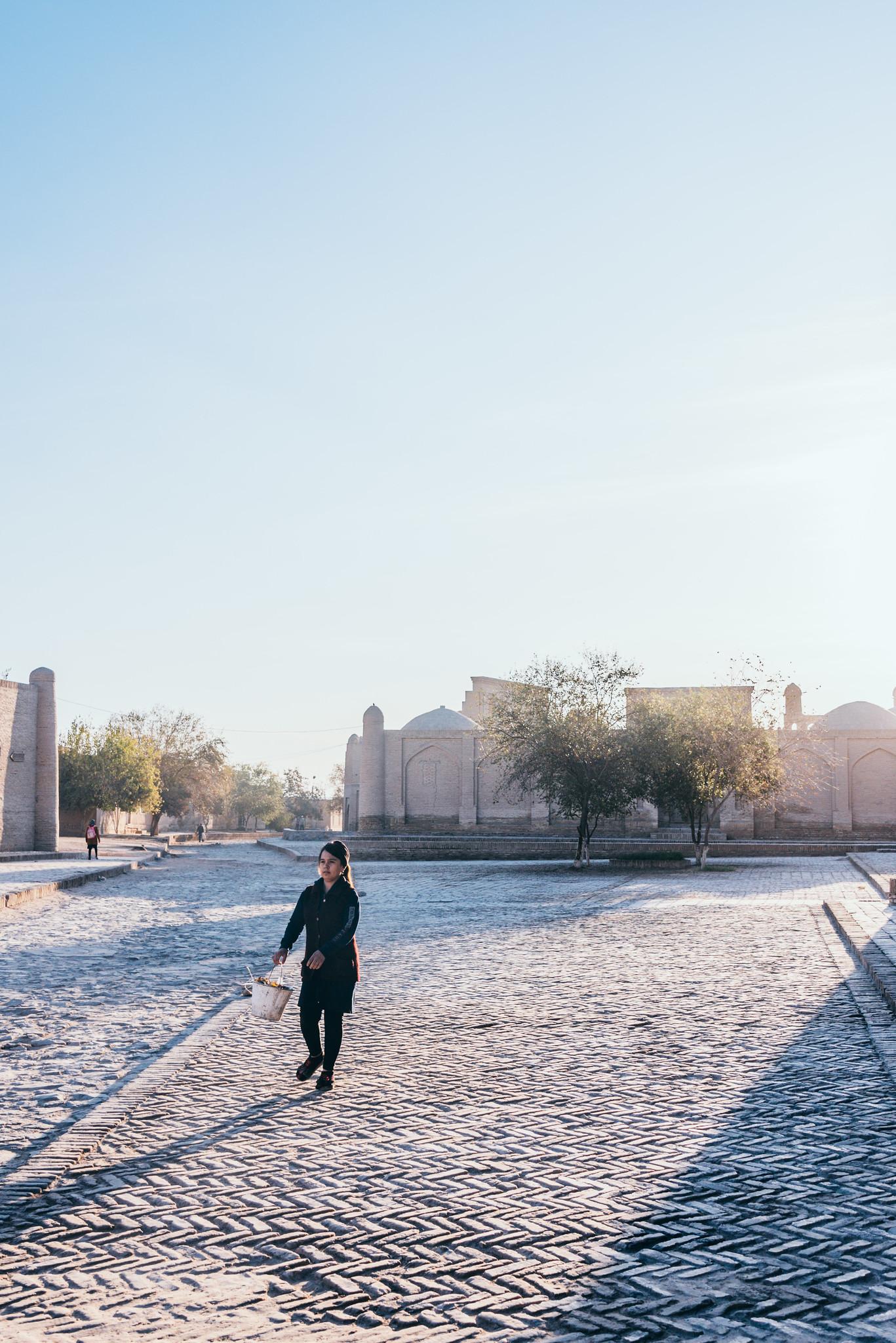
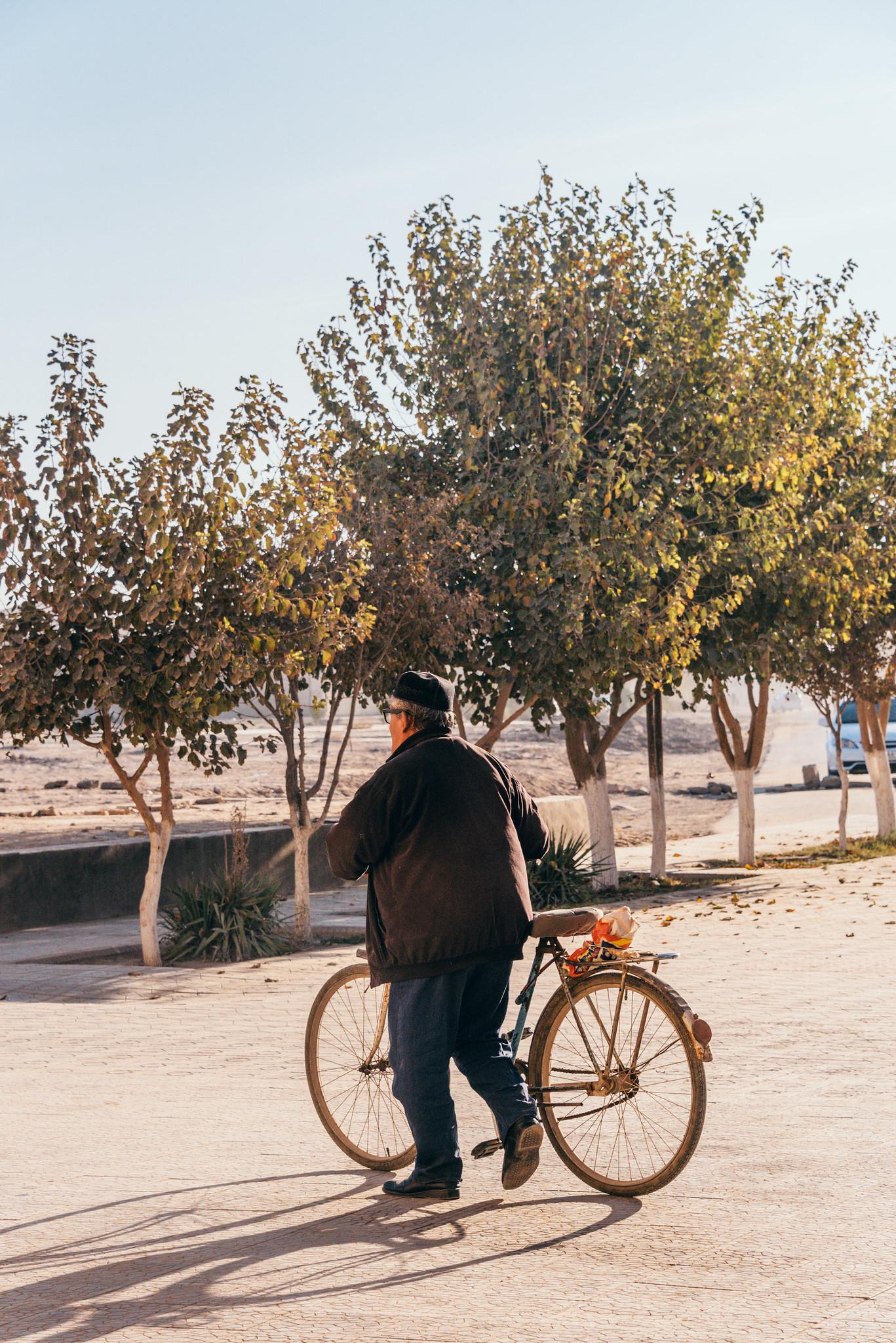
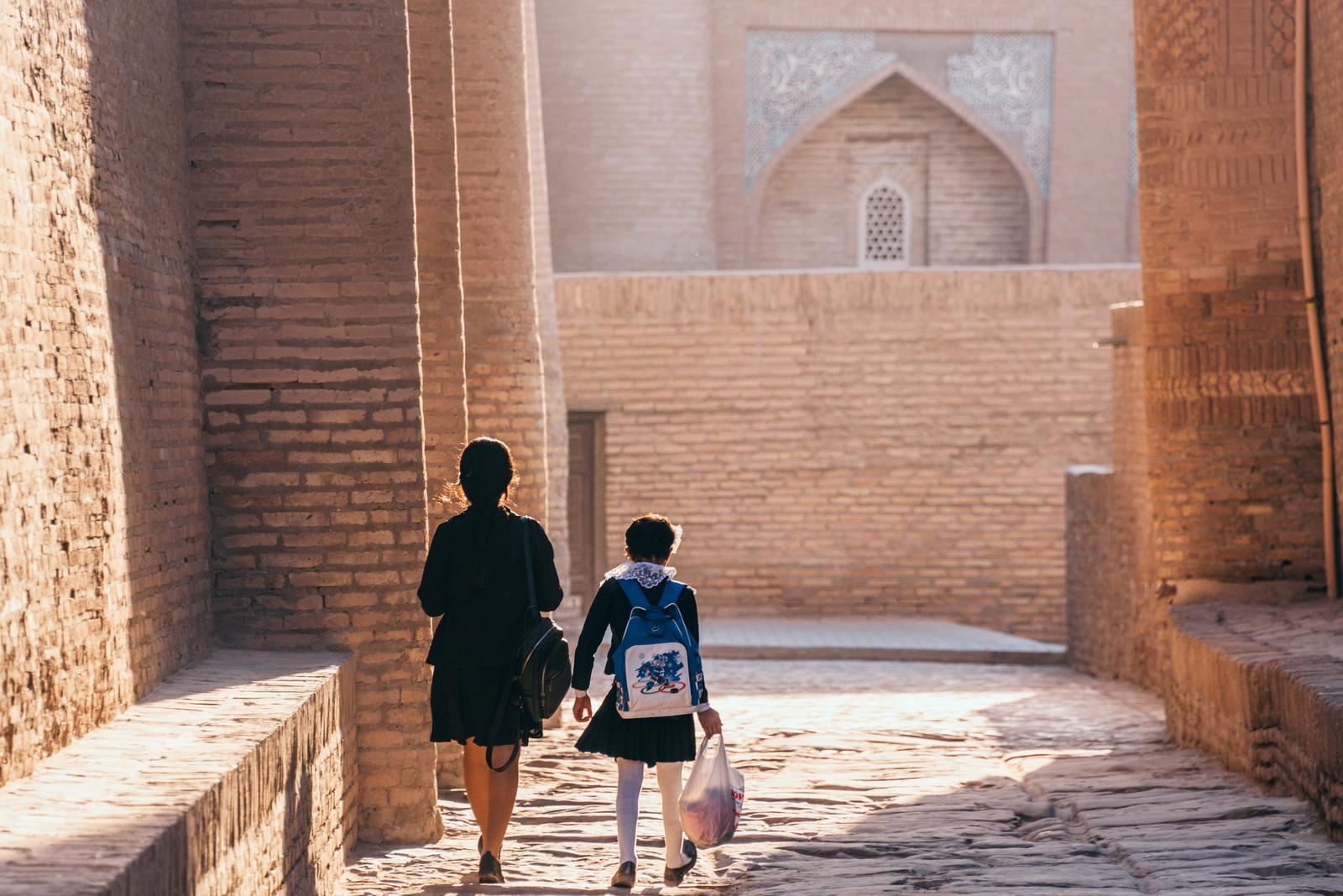
Once again I could meet the folk music bands at the courtyard, and I wished the time could have been slowed down a bit, as we never knew when we would cross our paths again. Autumn is magical, isn’t it?
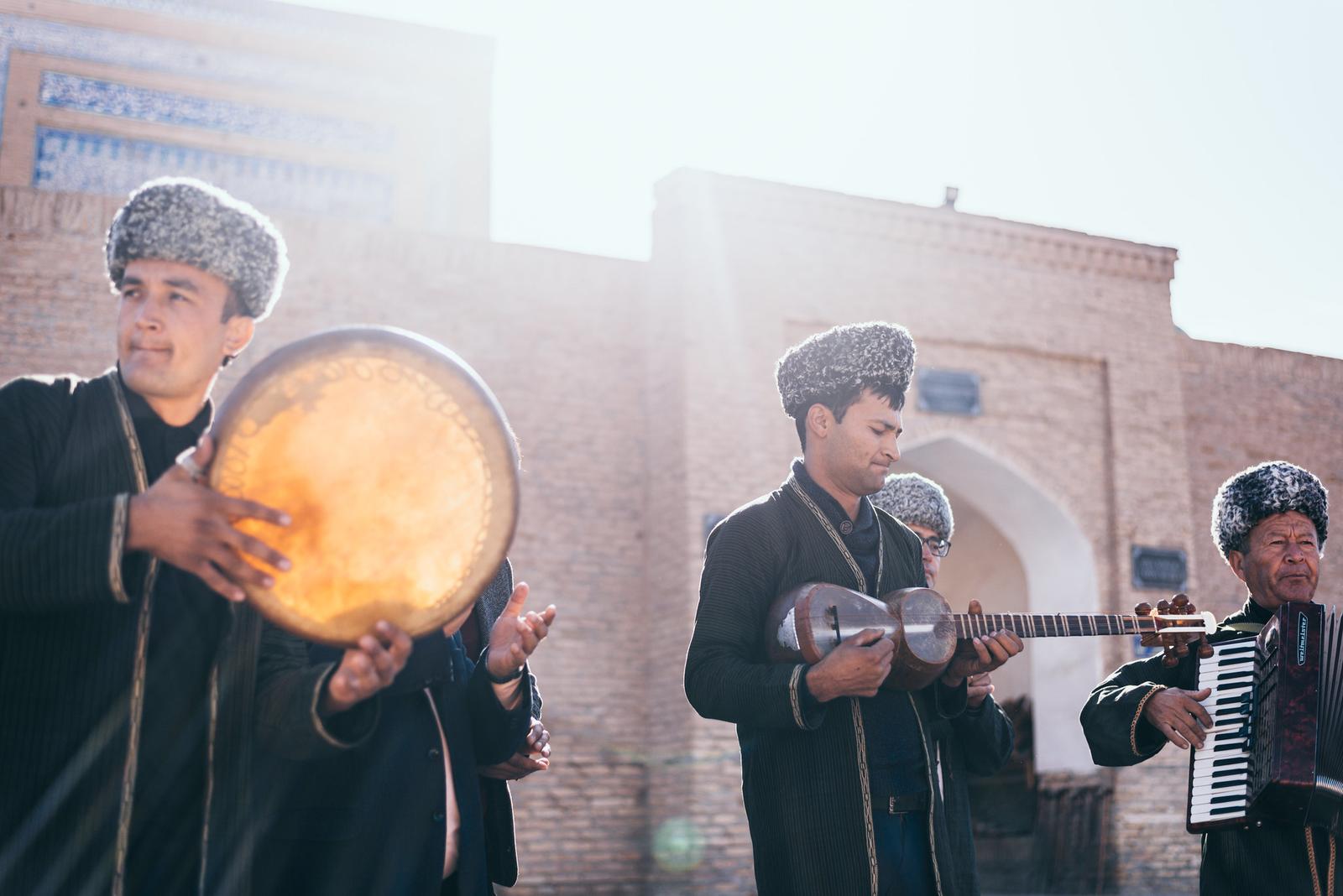
Comments
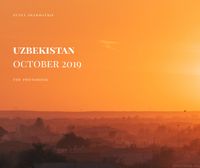
This post is a part of the Uzbekistan series.
© Zuyet Awarmatik
About
Zuyet Awarmatrip is a subsidiary identity within the personal ecosystem of Zuyet Awarmatik, focusing on travel and photography.
A Vietnamese usually regarding himself as a carefree solo Eastern backpacker, alongside with his main profession as a UX engineer. Neither being a freelancer nor a digital nomad, this website is built for the purpose of recording his life experience and happenings instead of letting them go into oblivion. He hopes these photos here shall always deliver the colorfulness of this worldly reality.
Finally the COVID era has ended, and now I can peacefully reminisce about the greatest autumn ever, three years after the trip.

